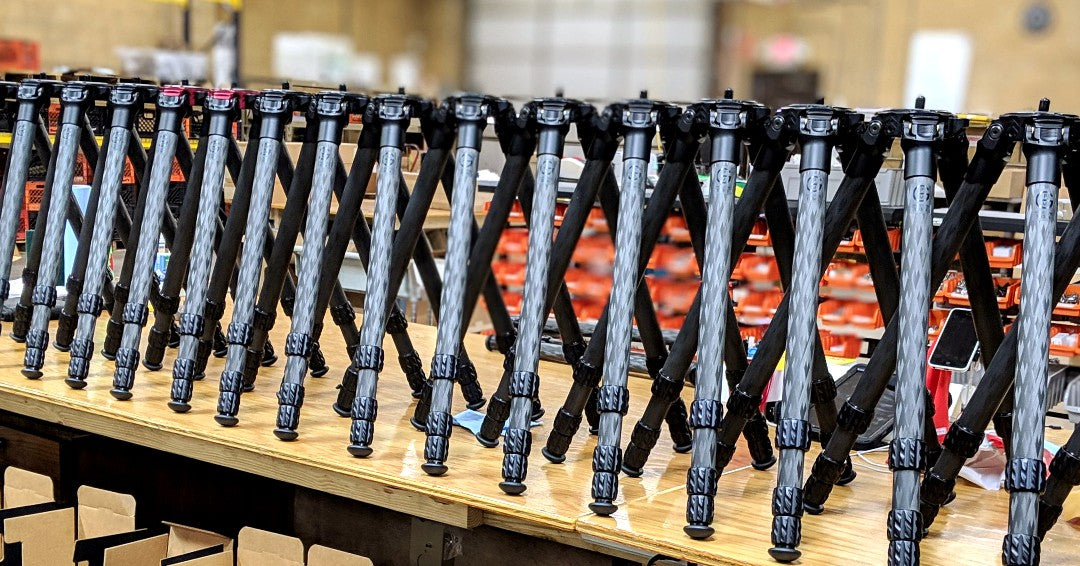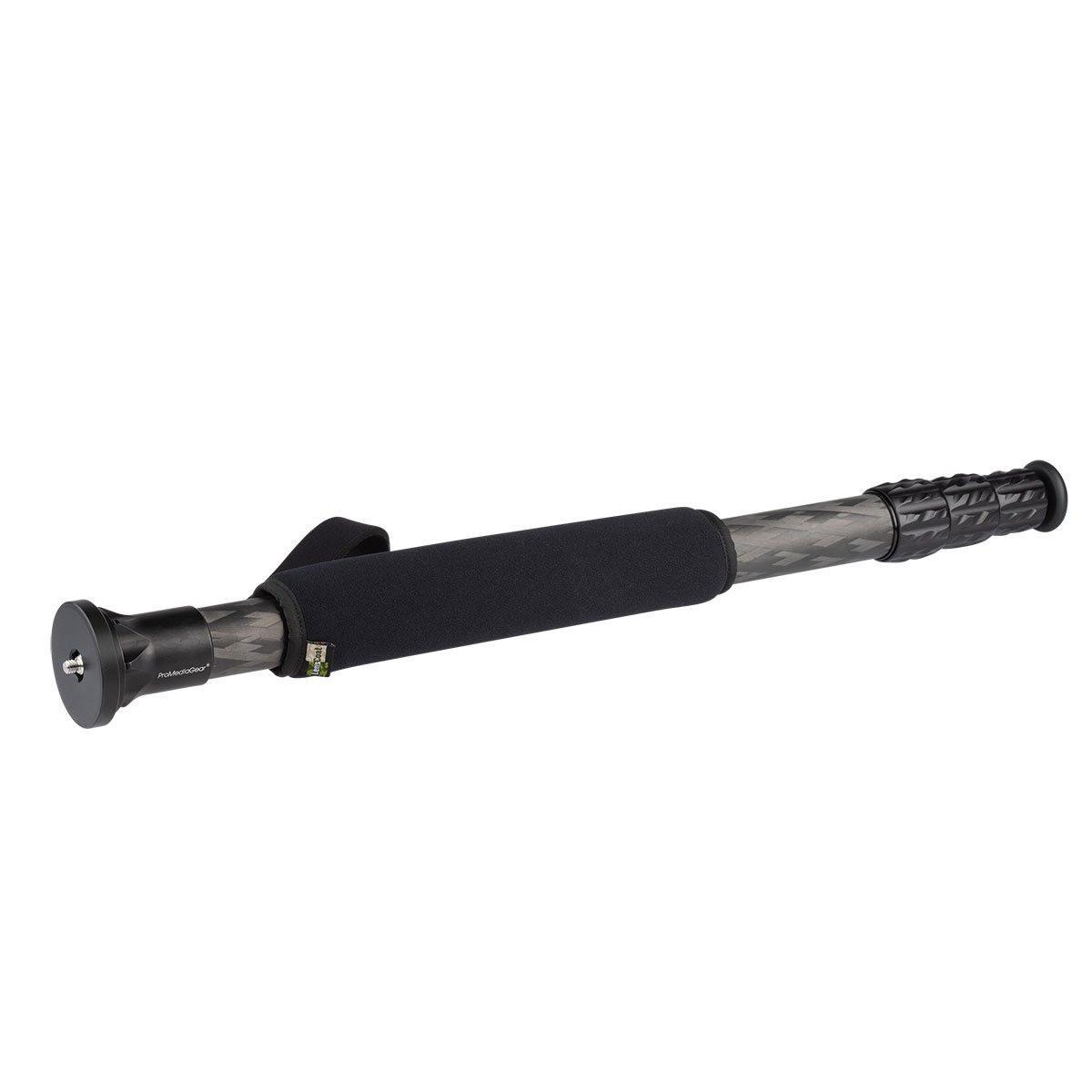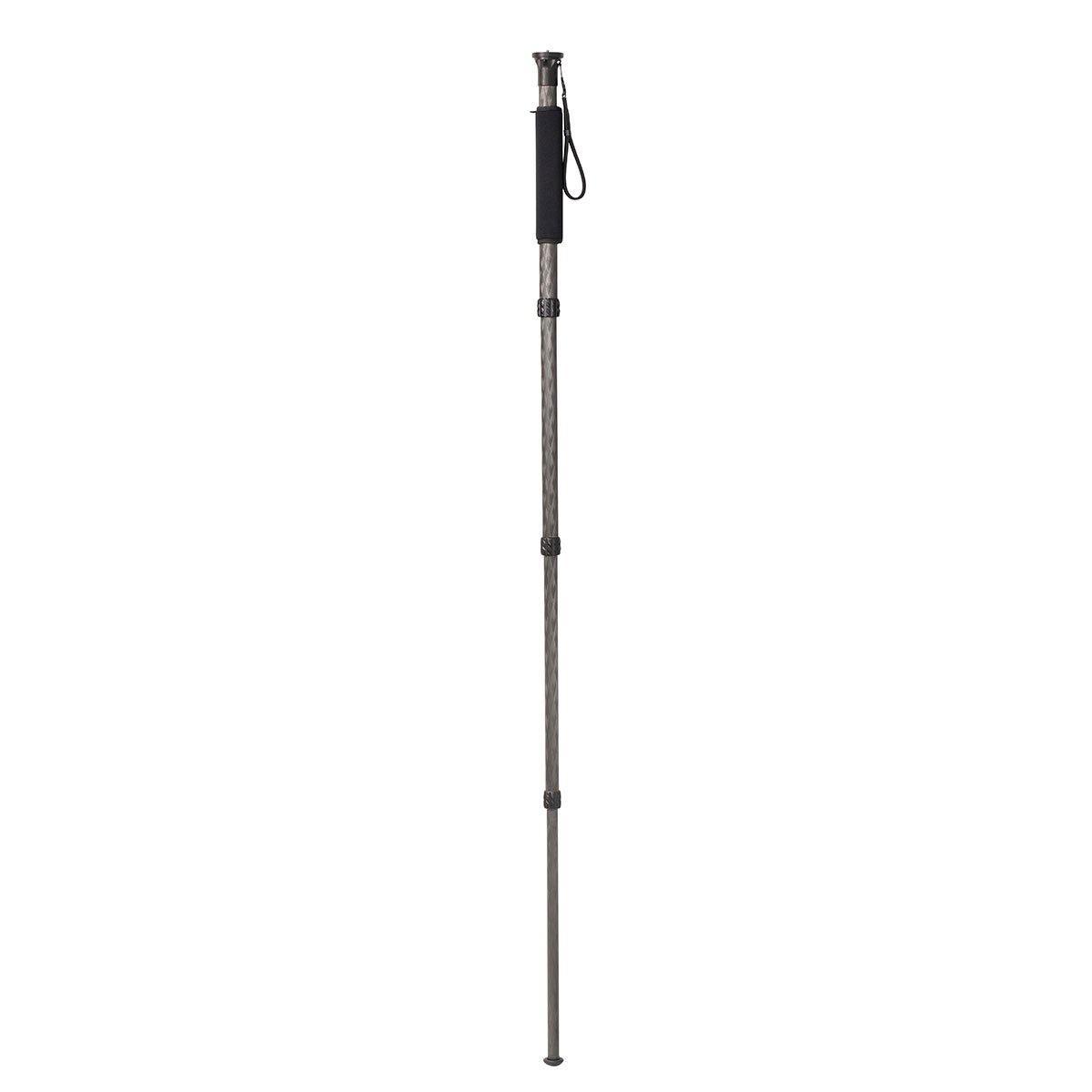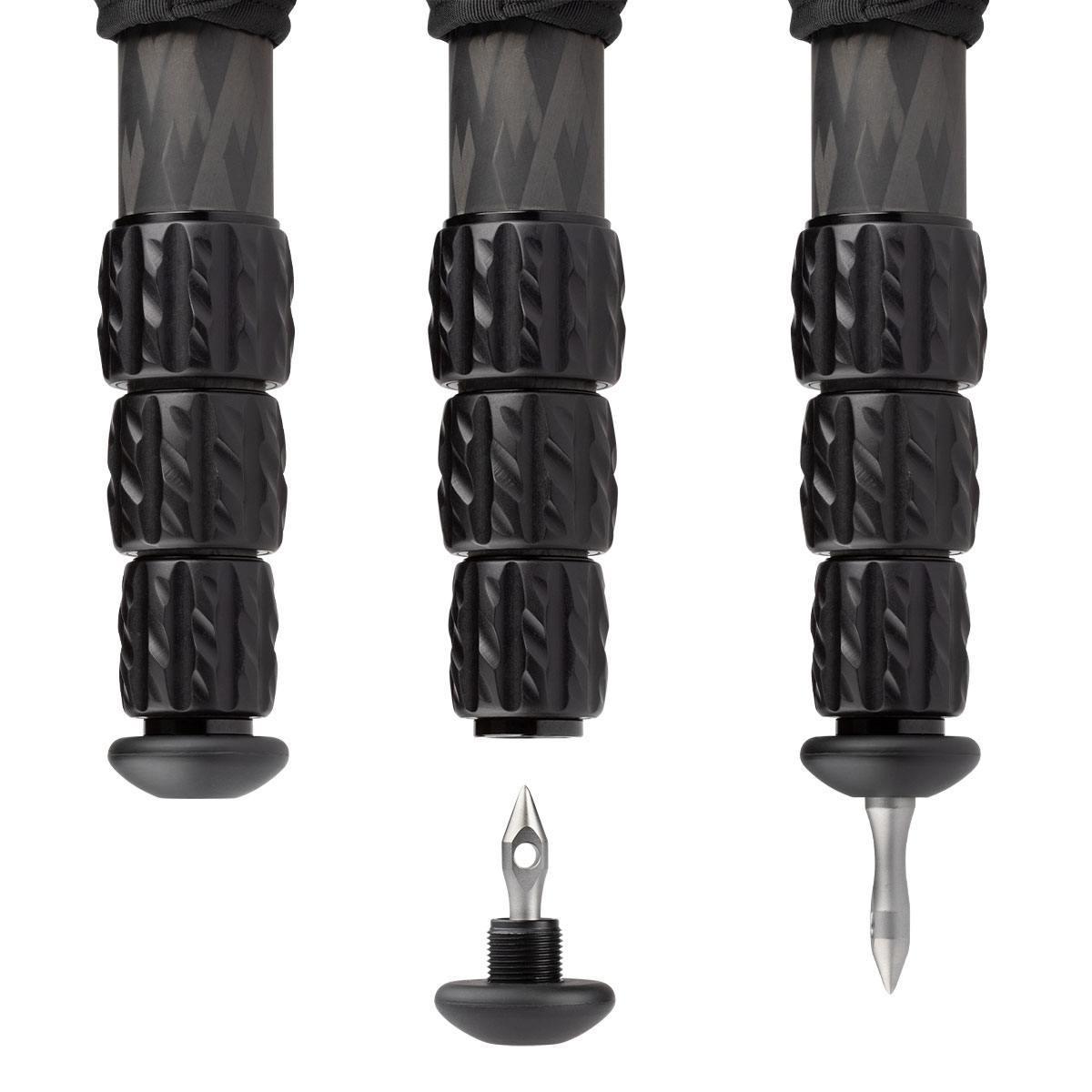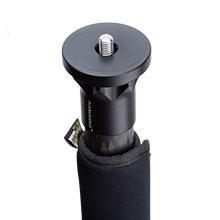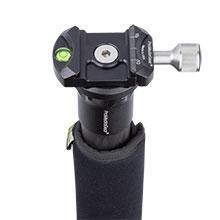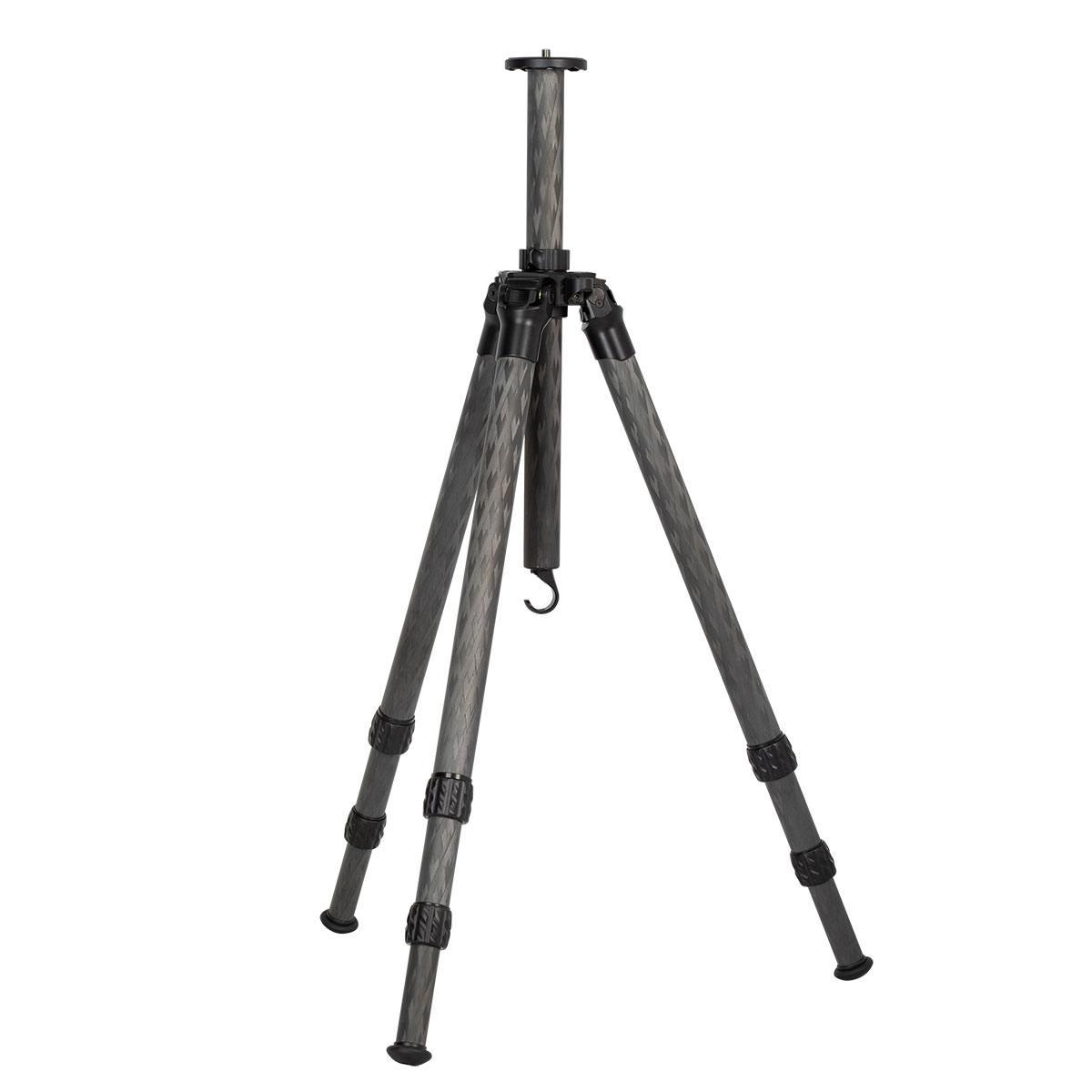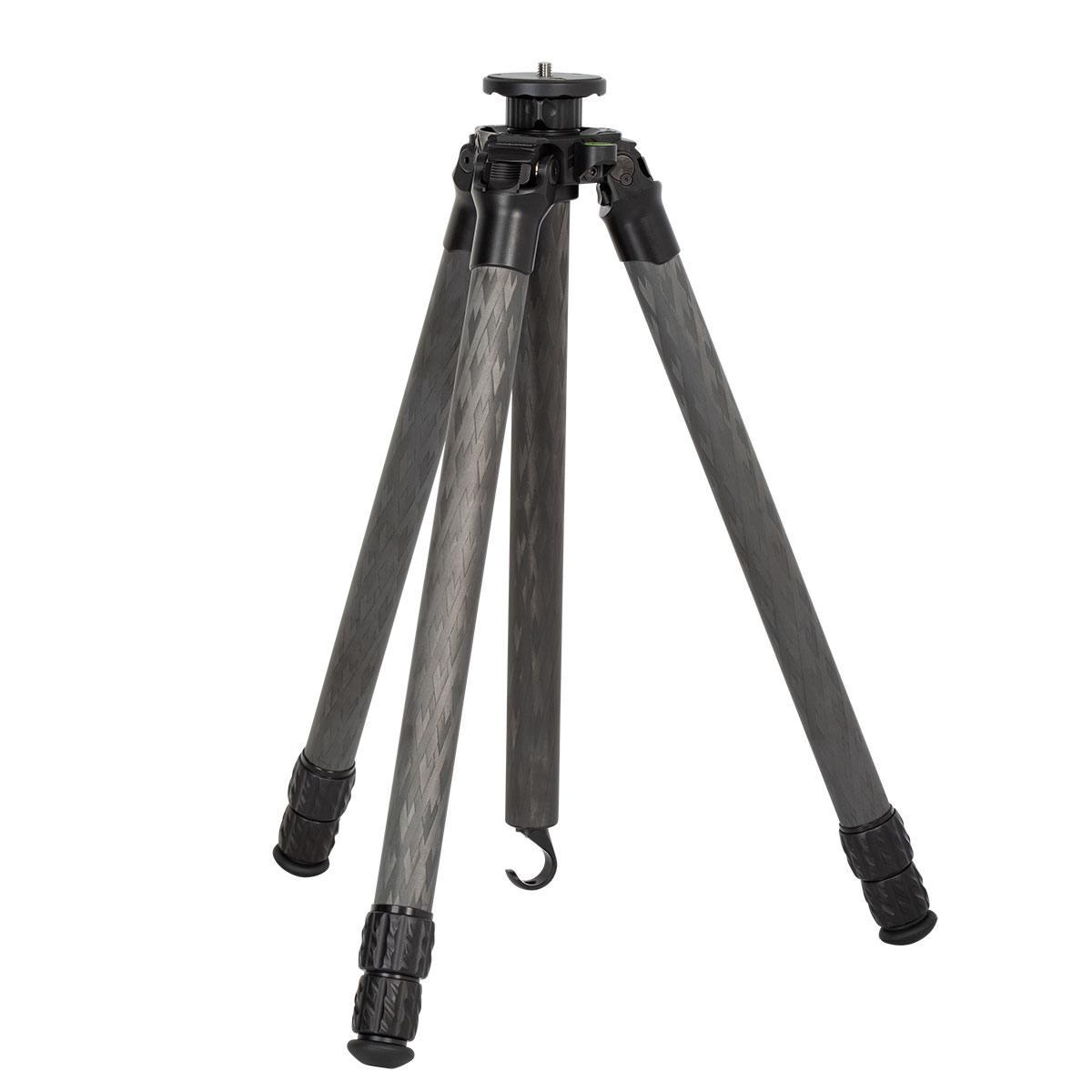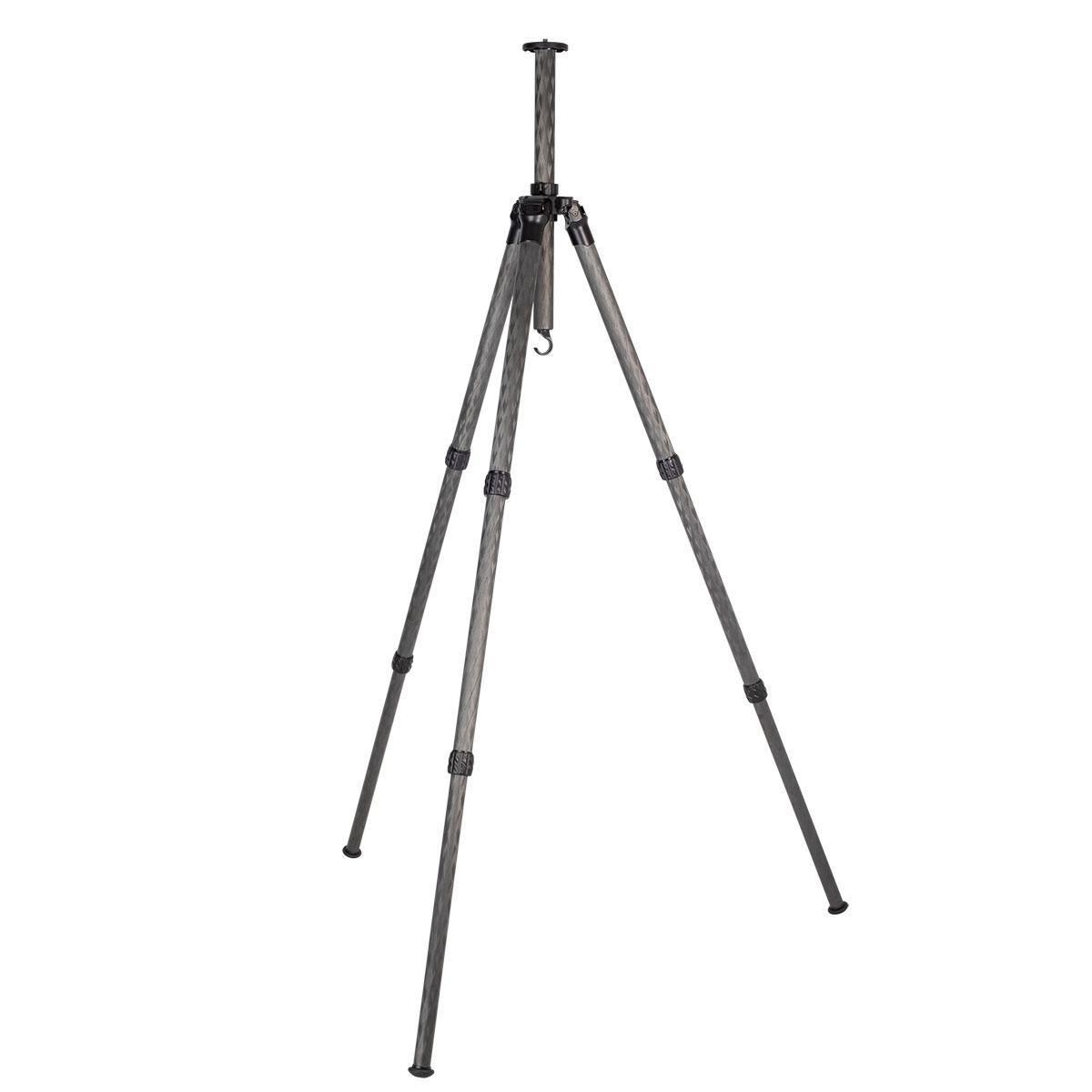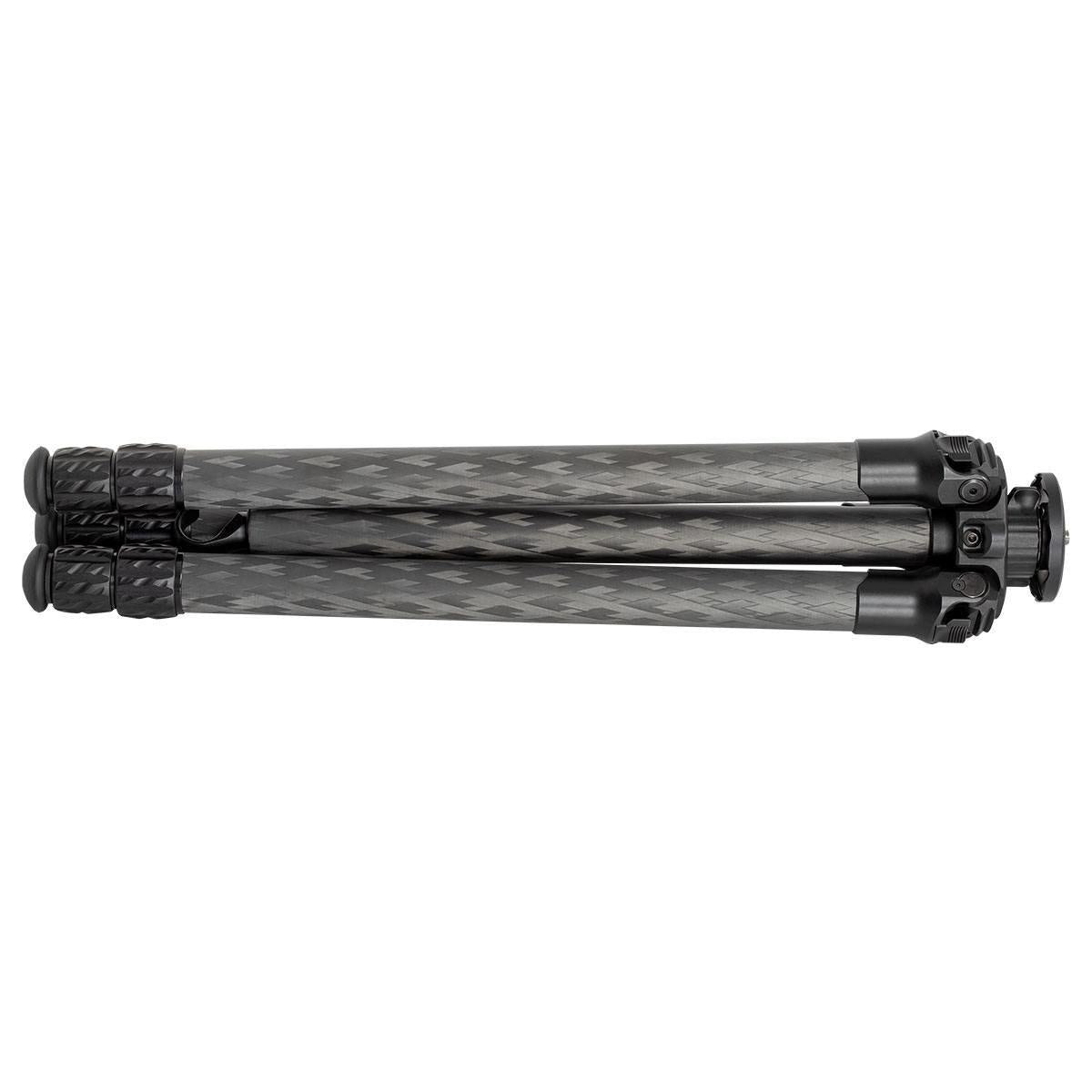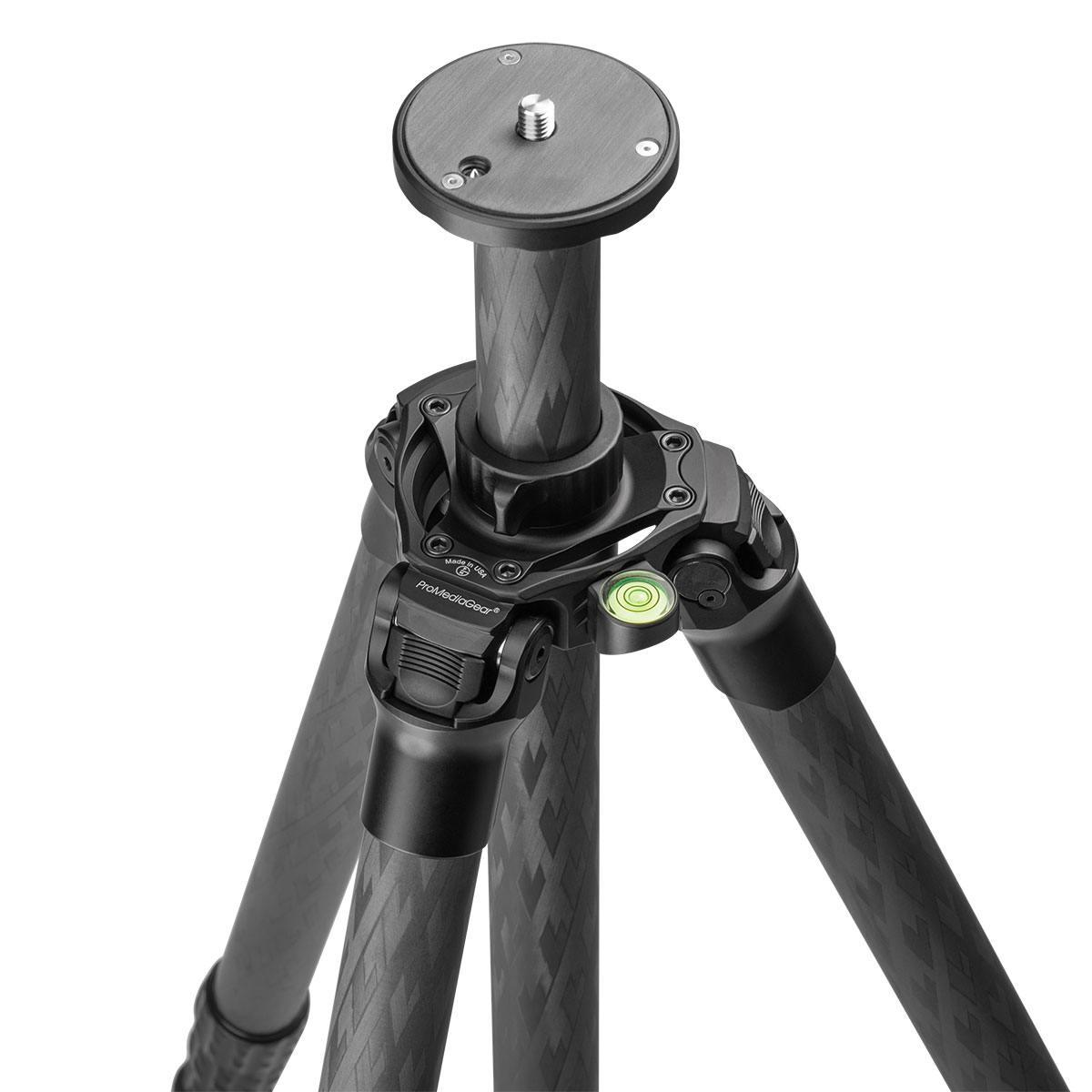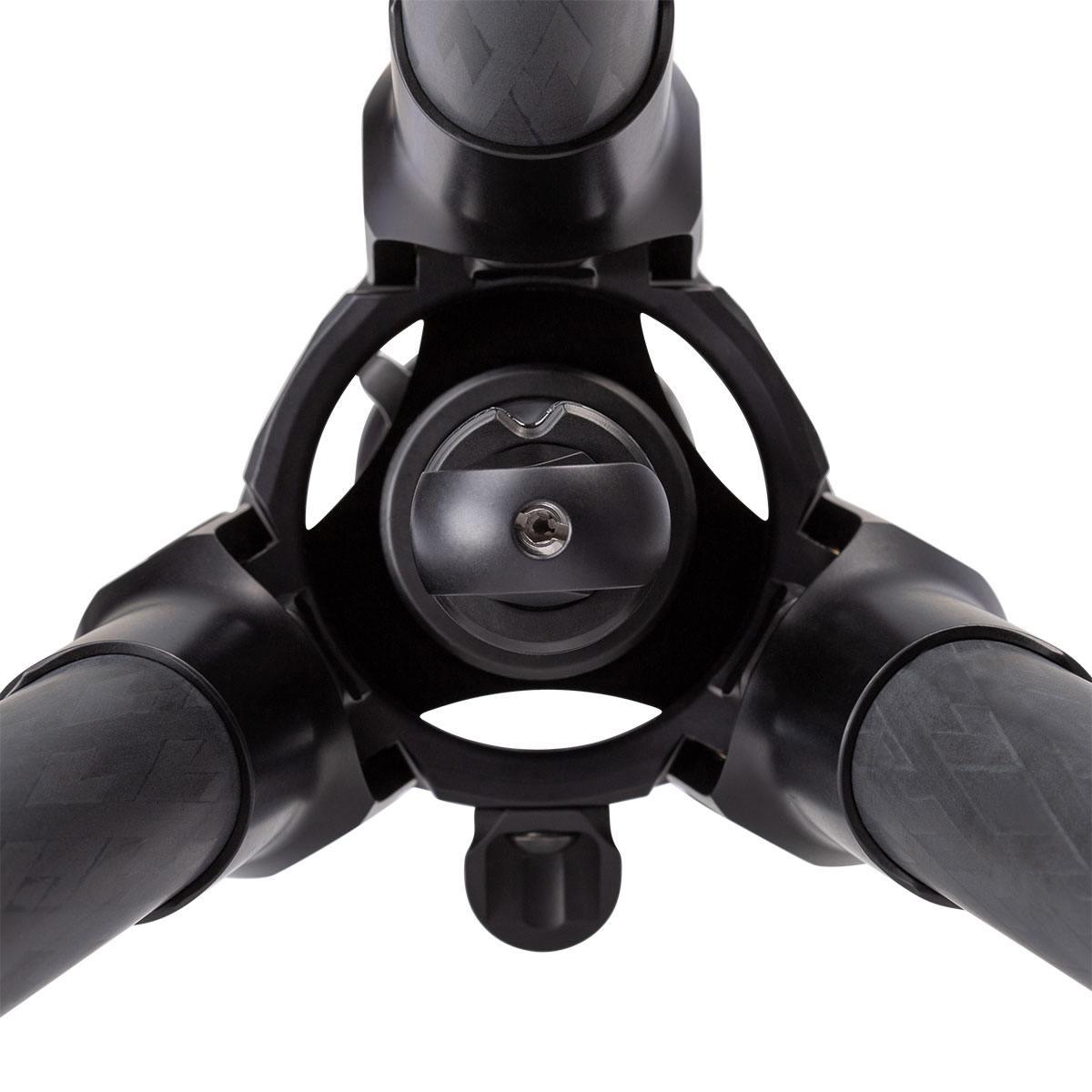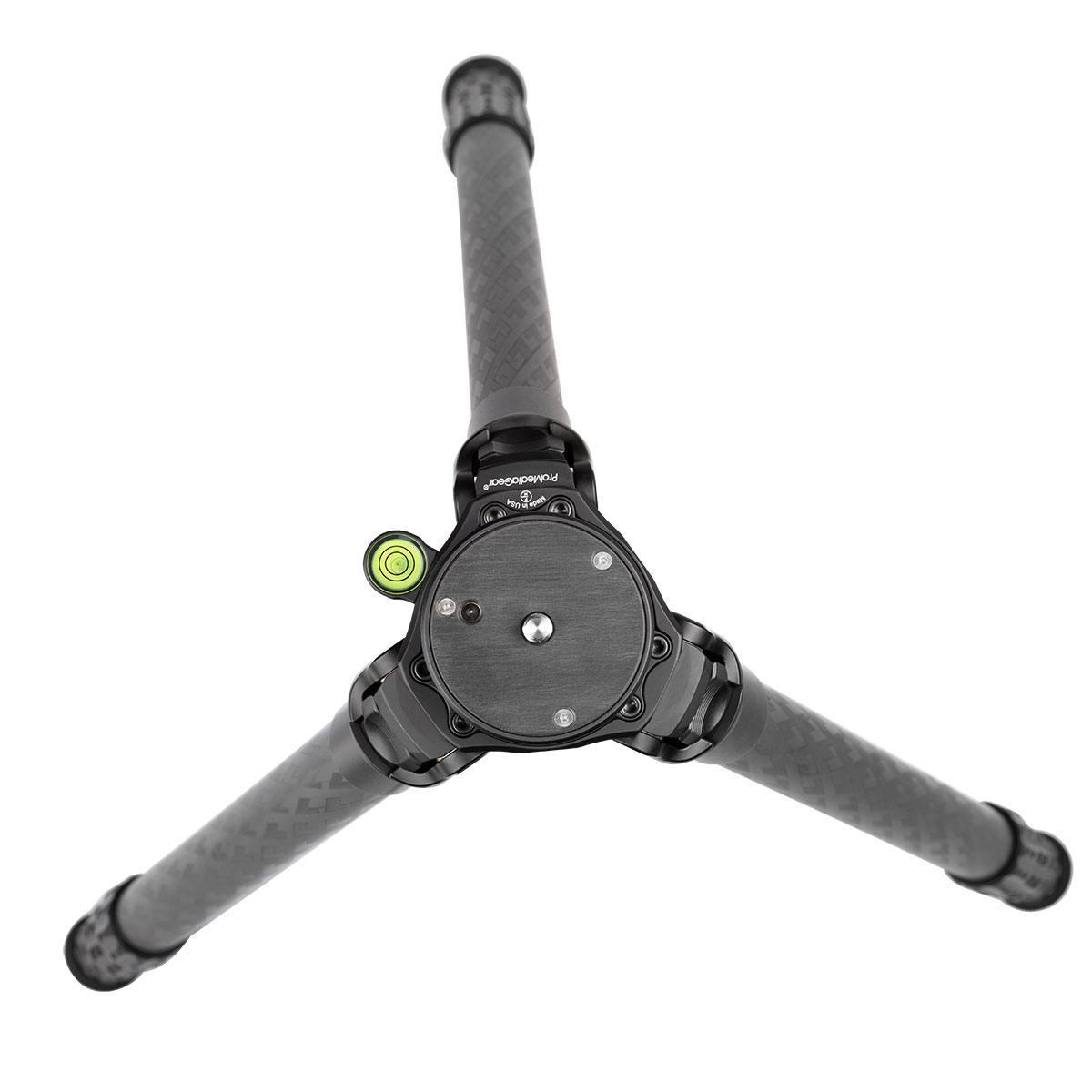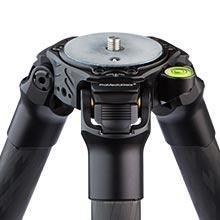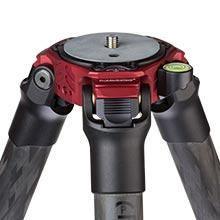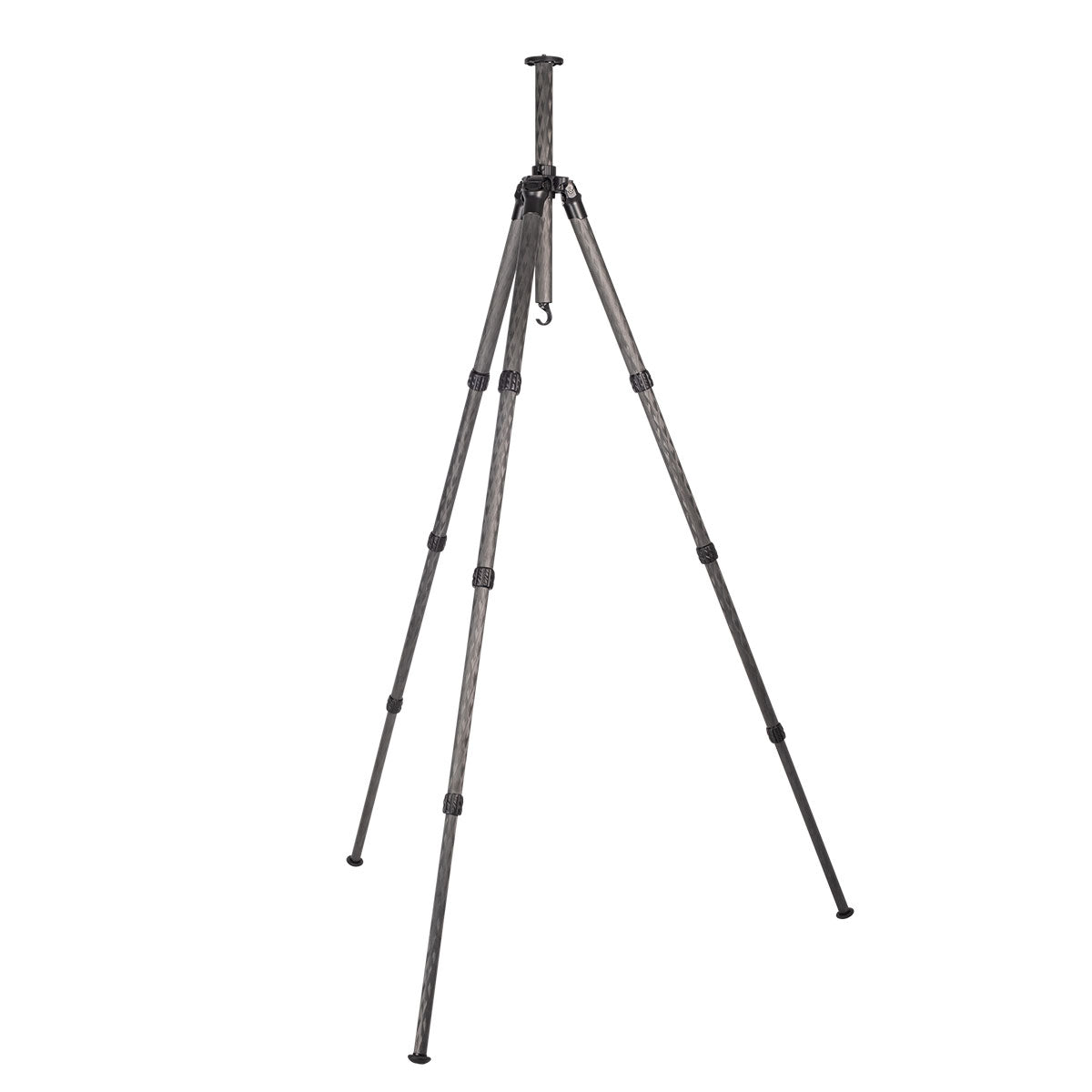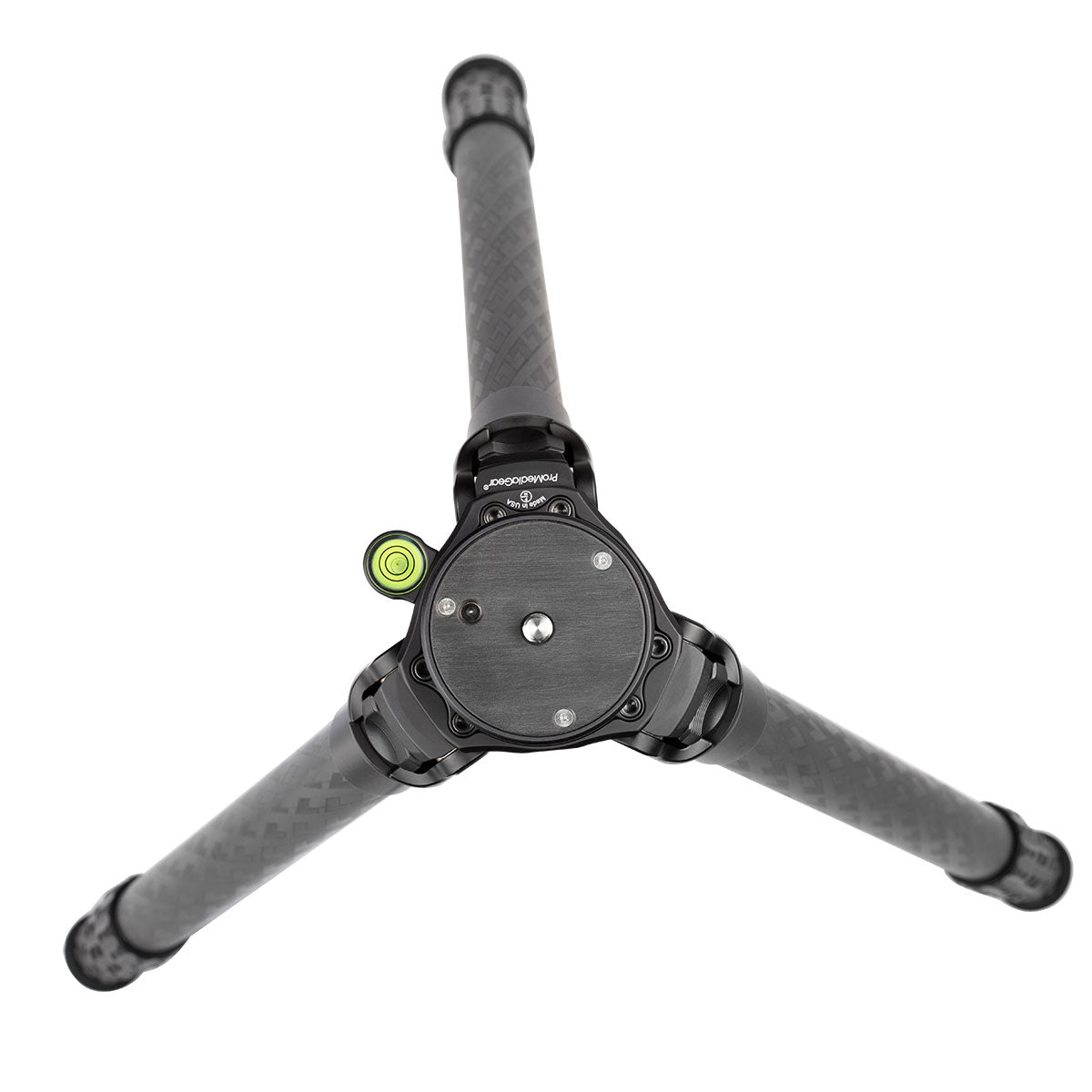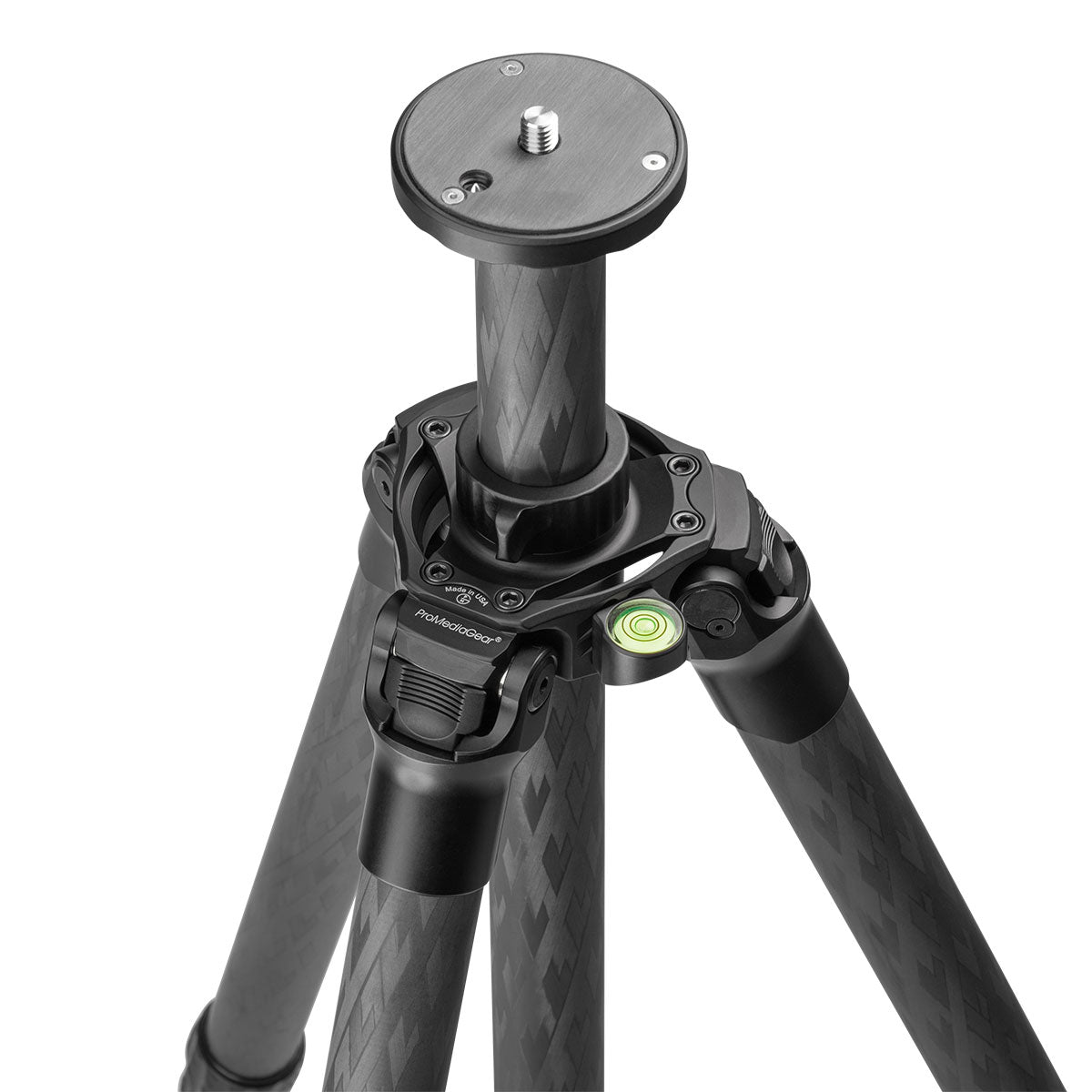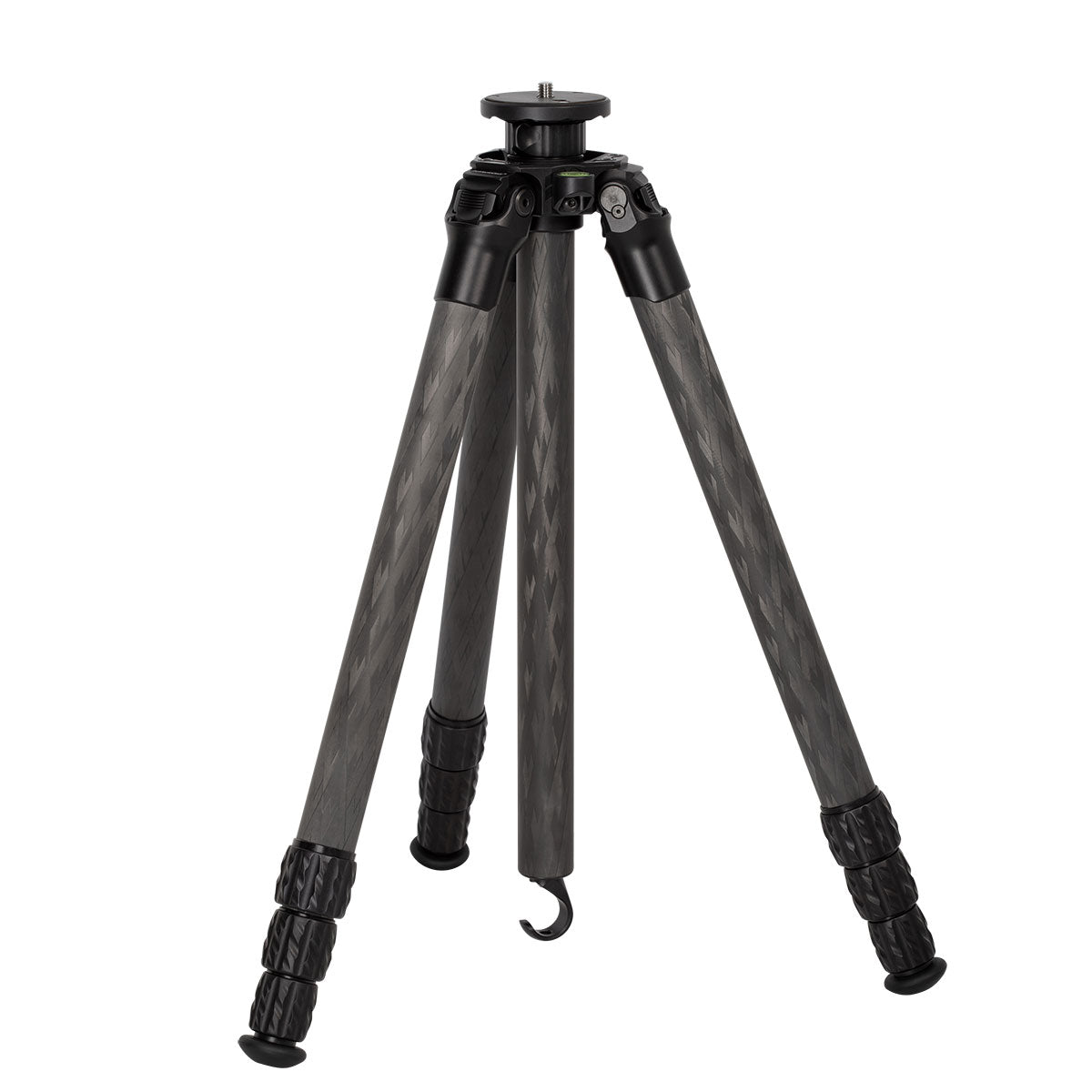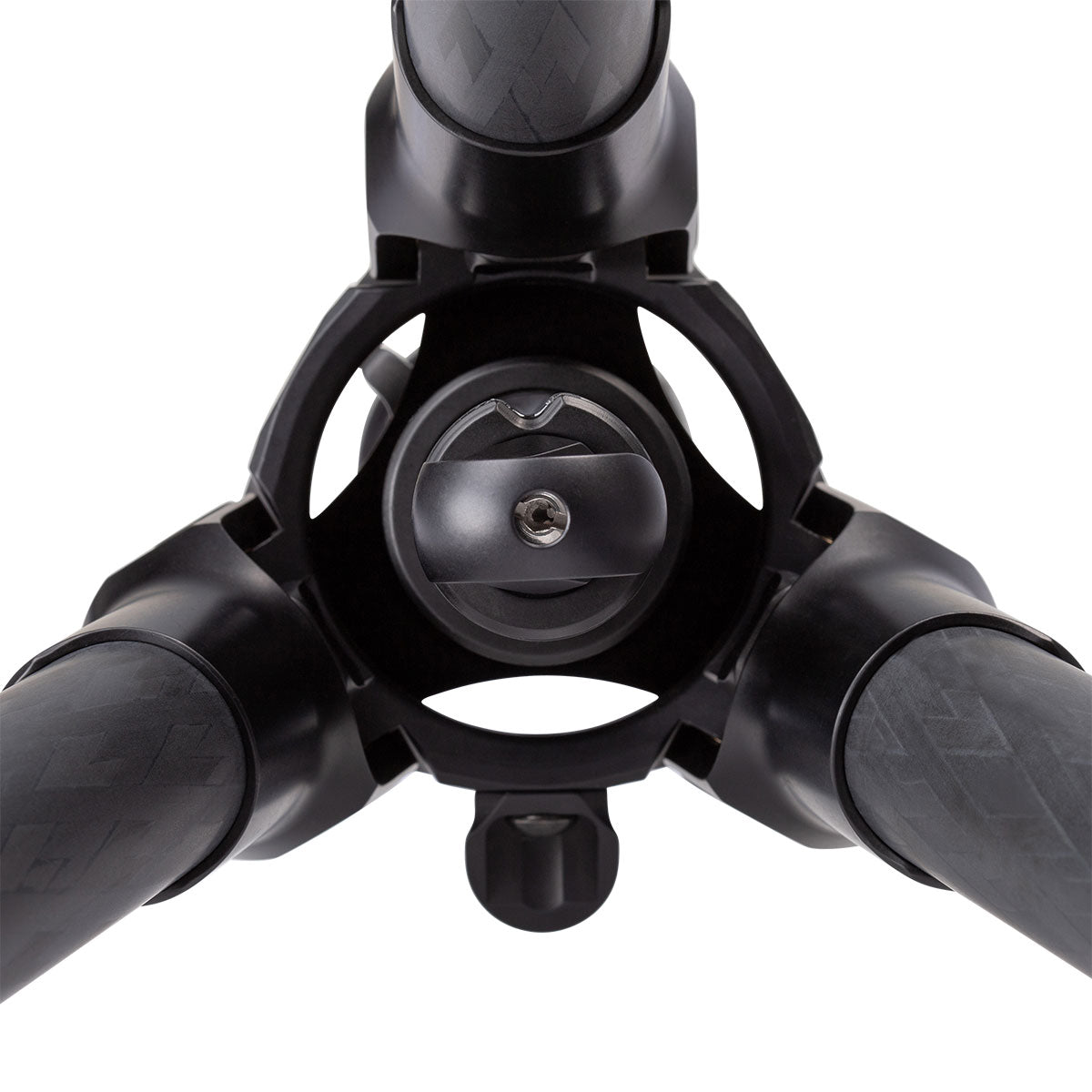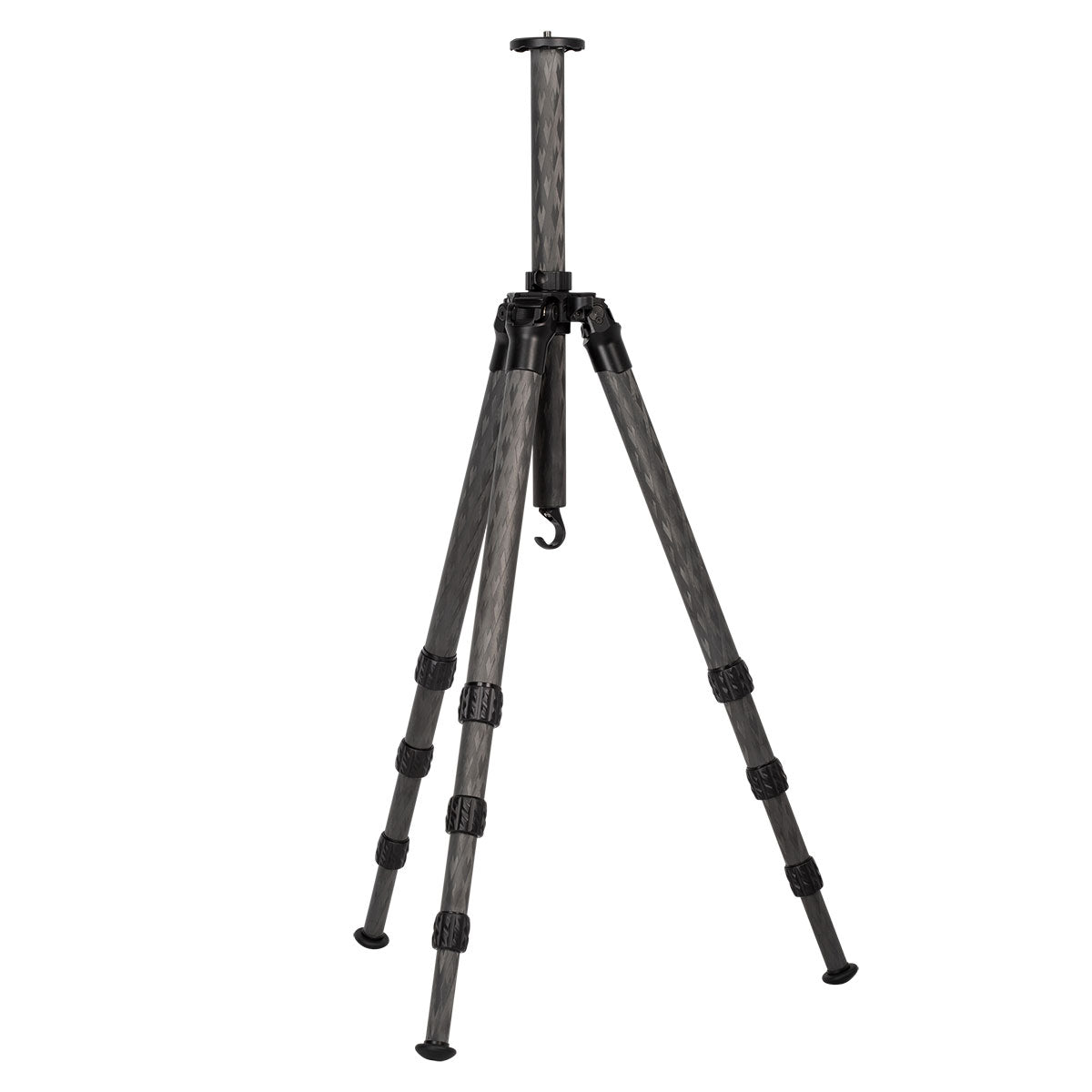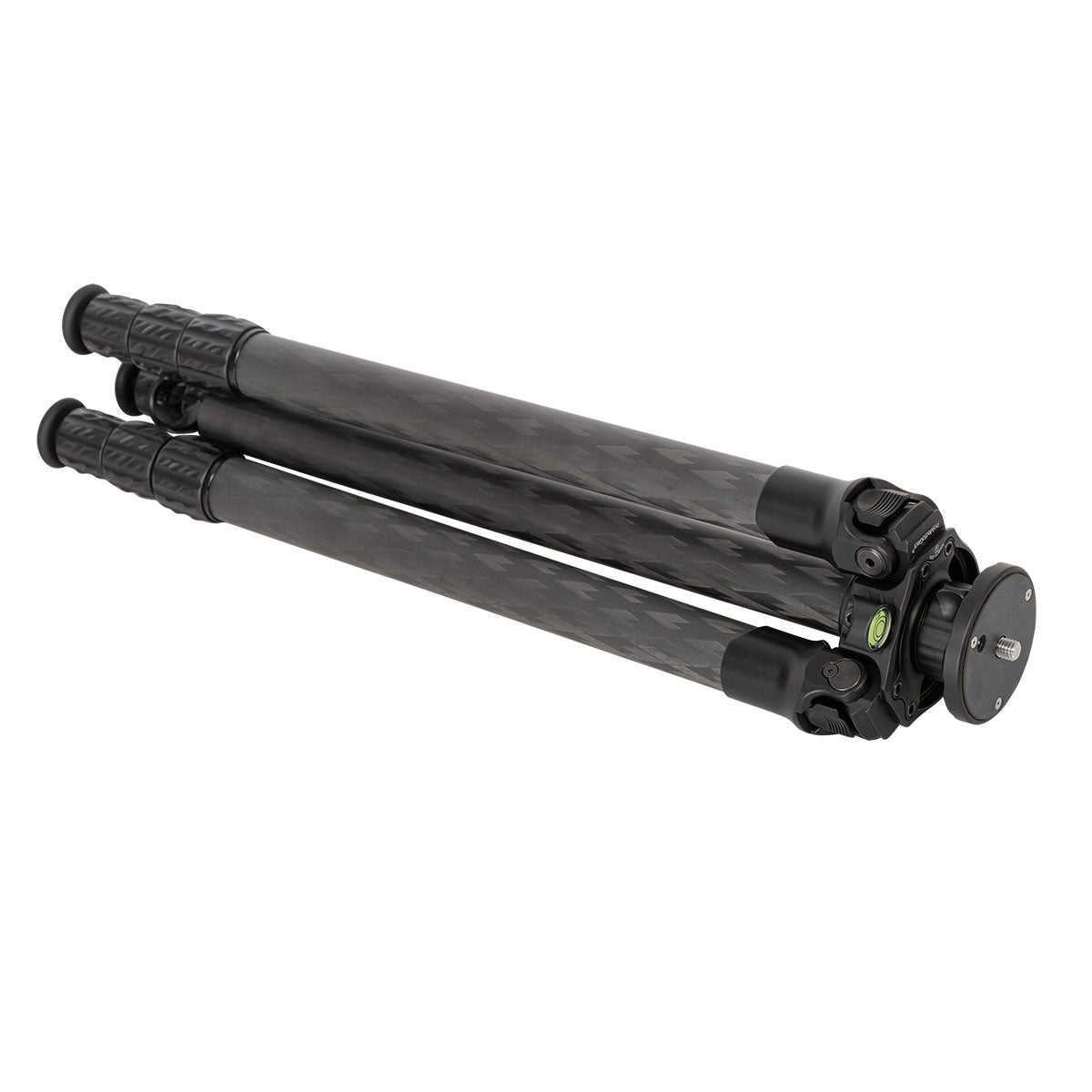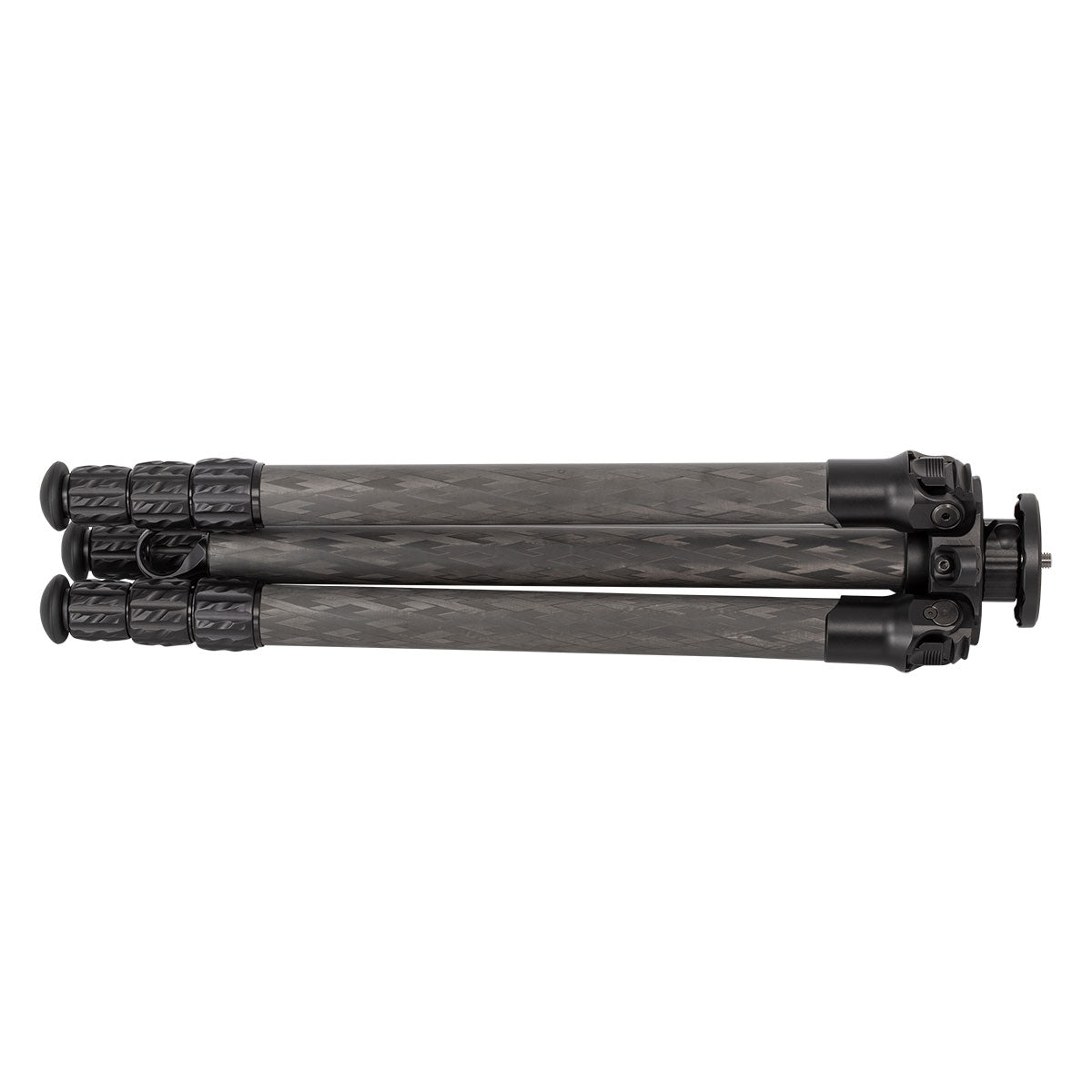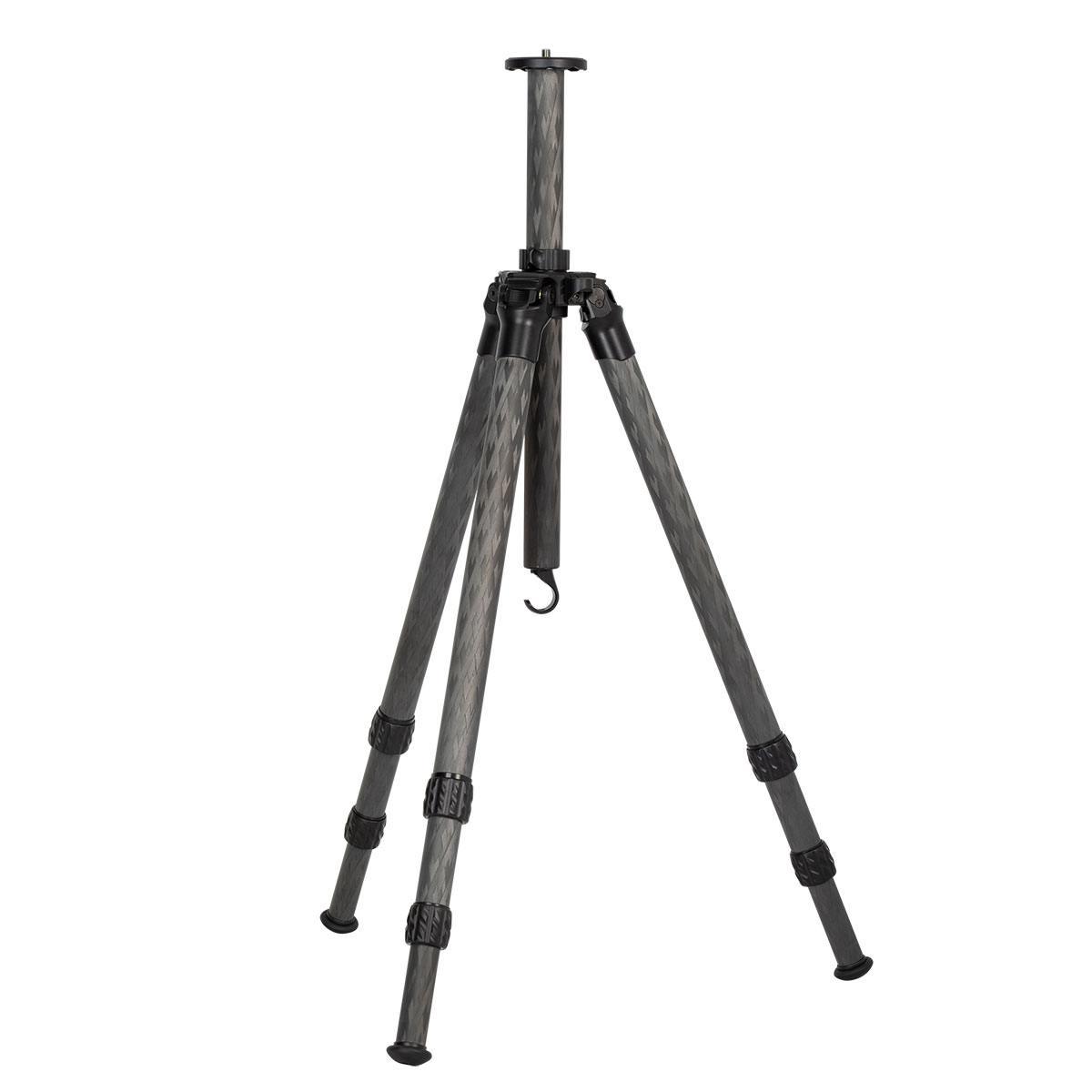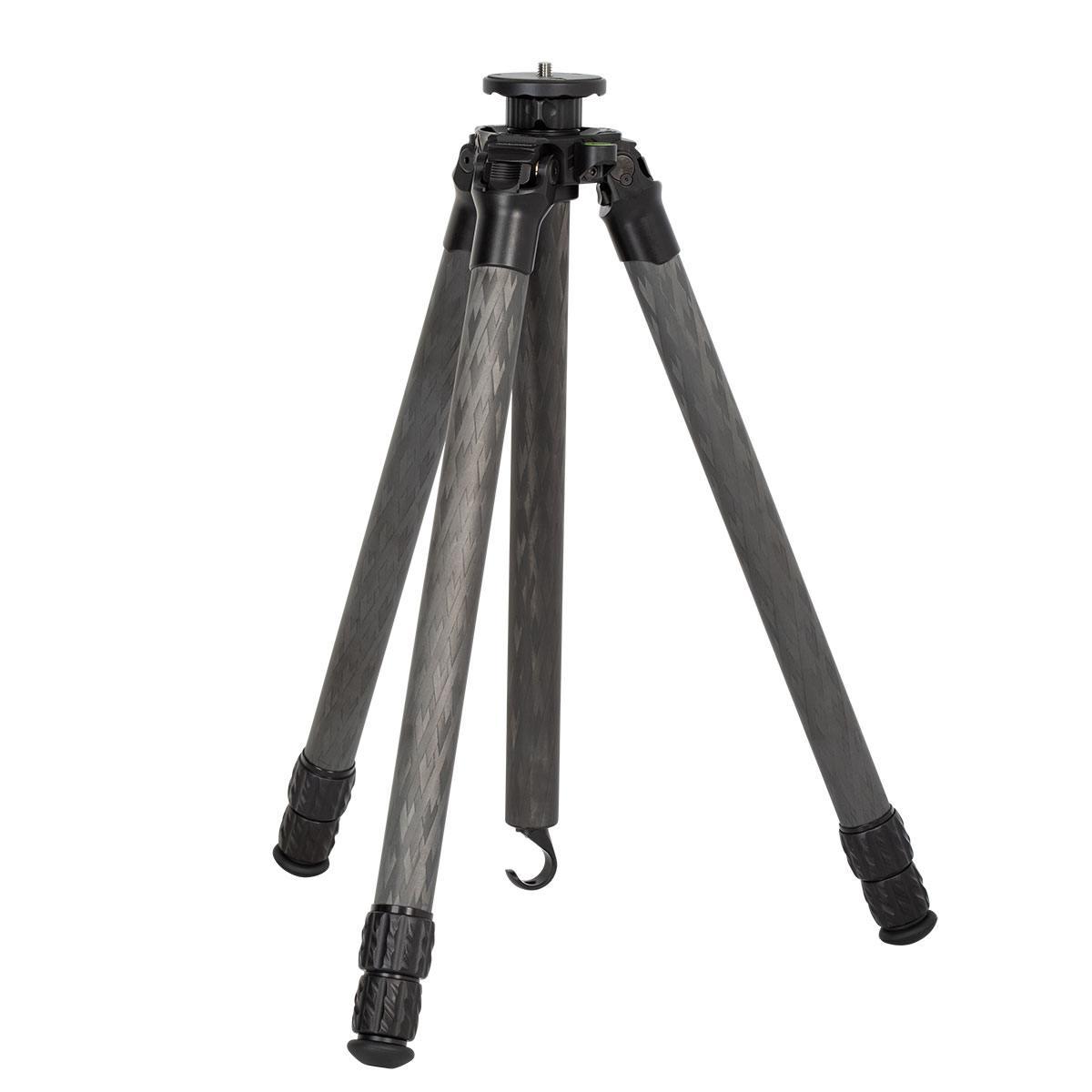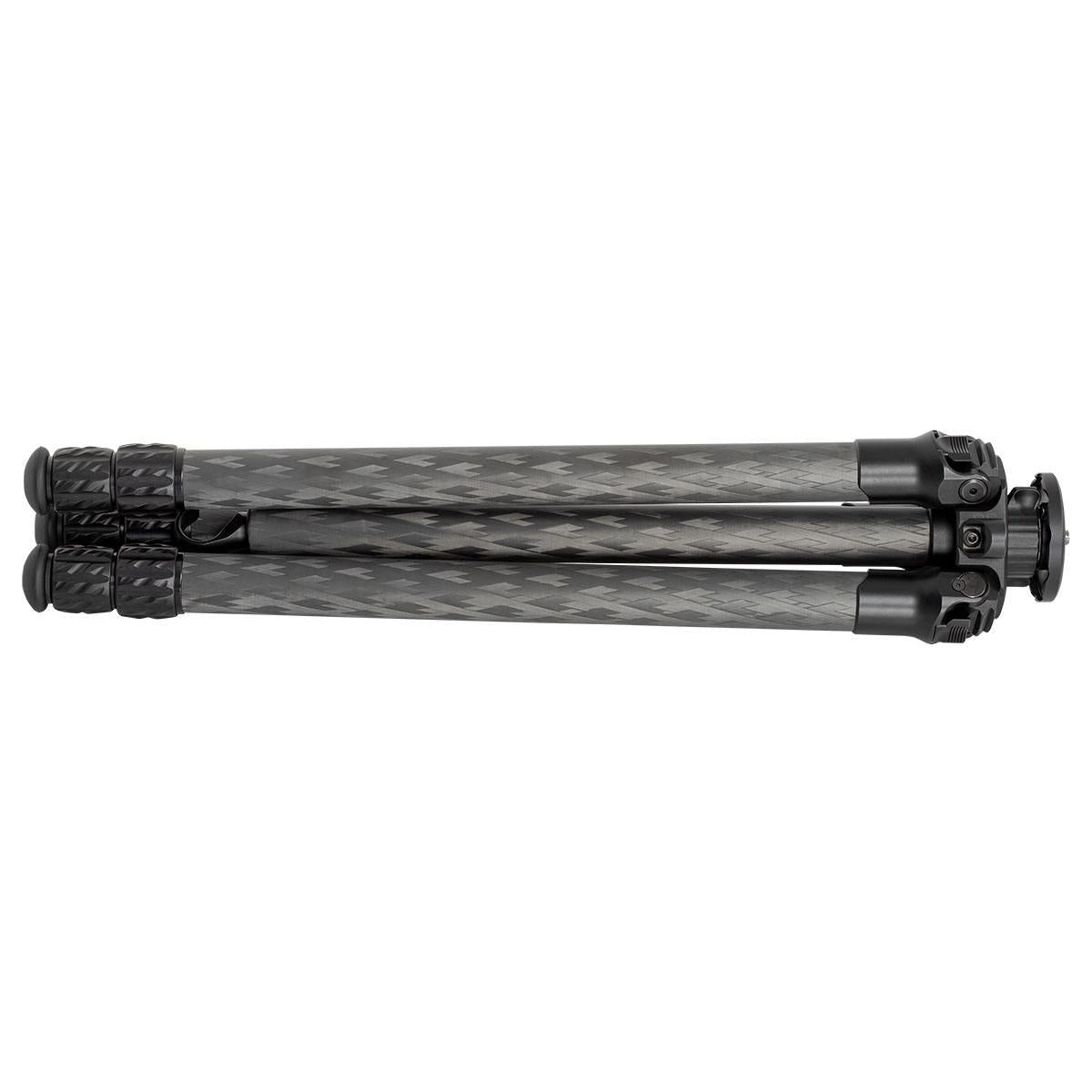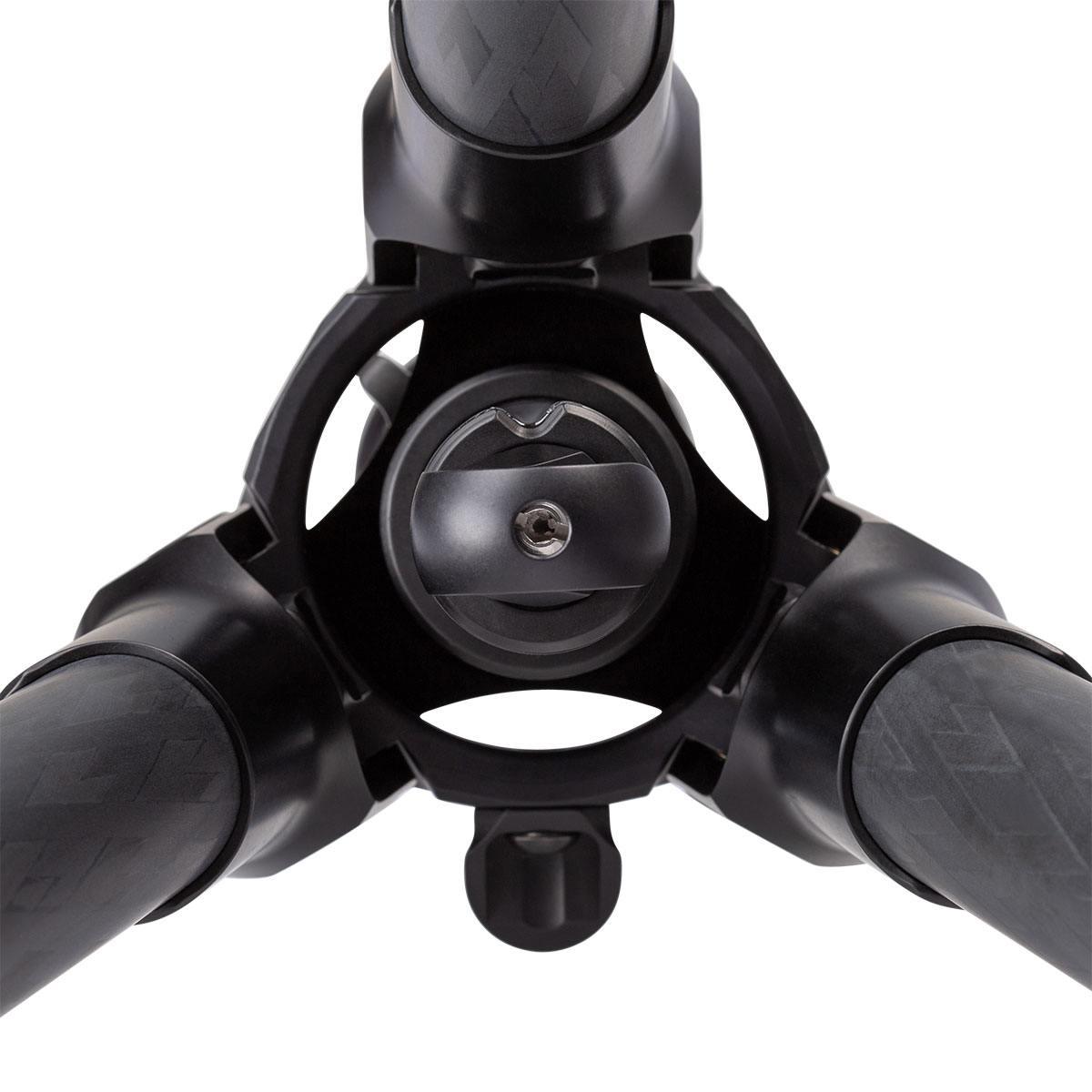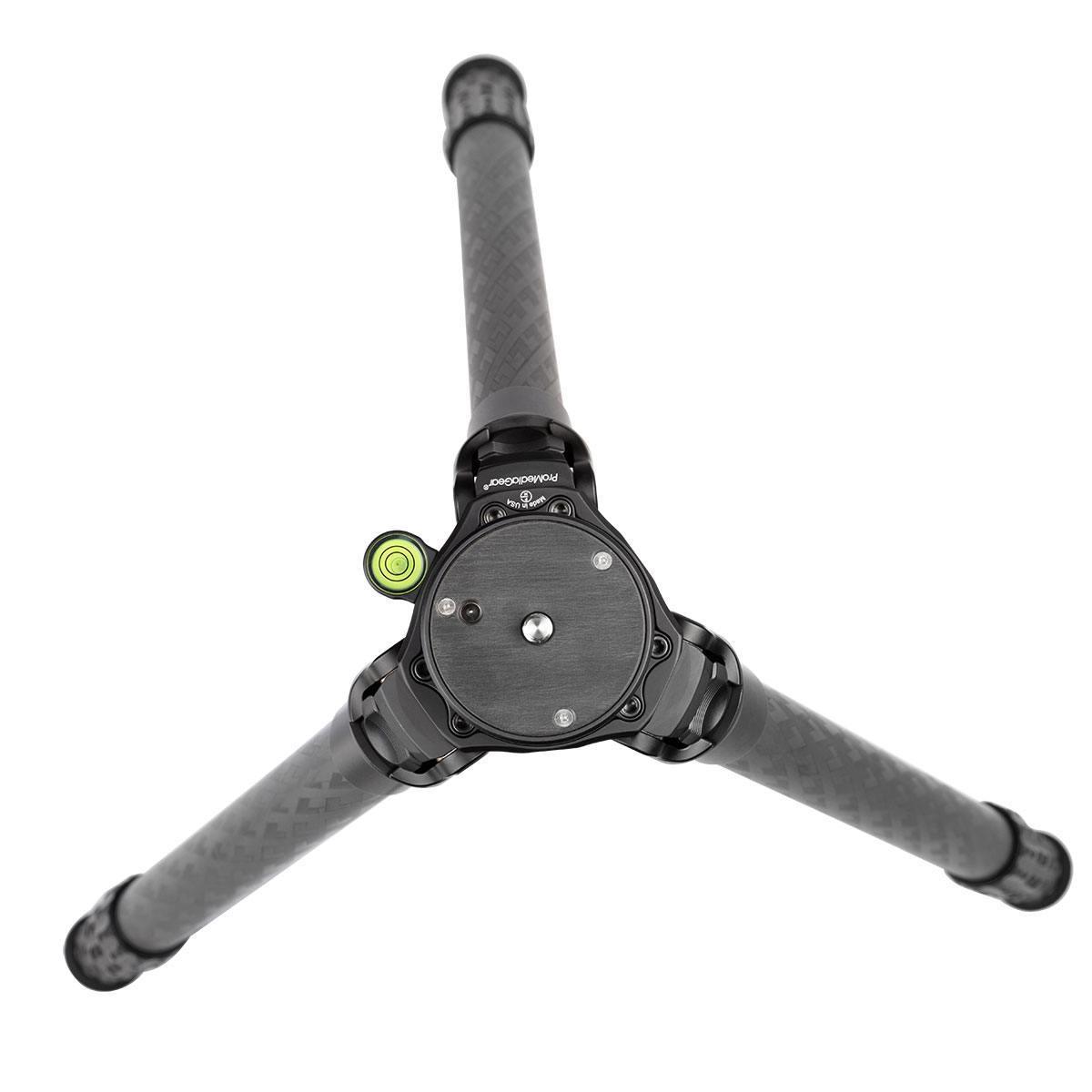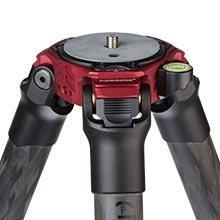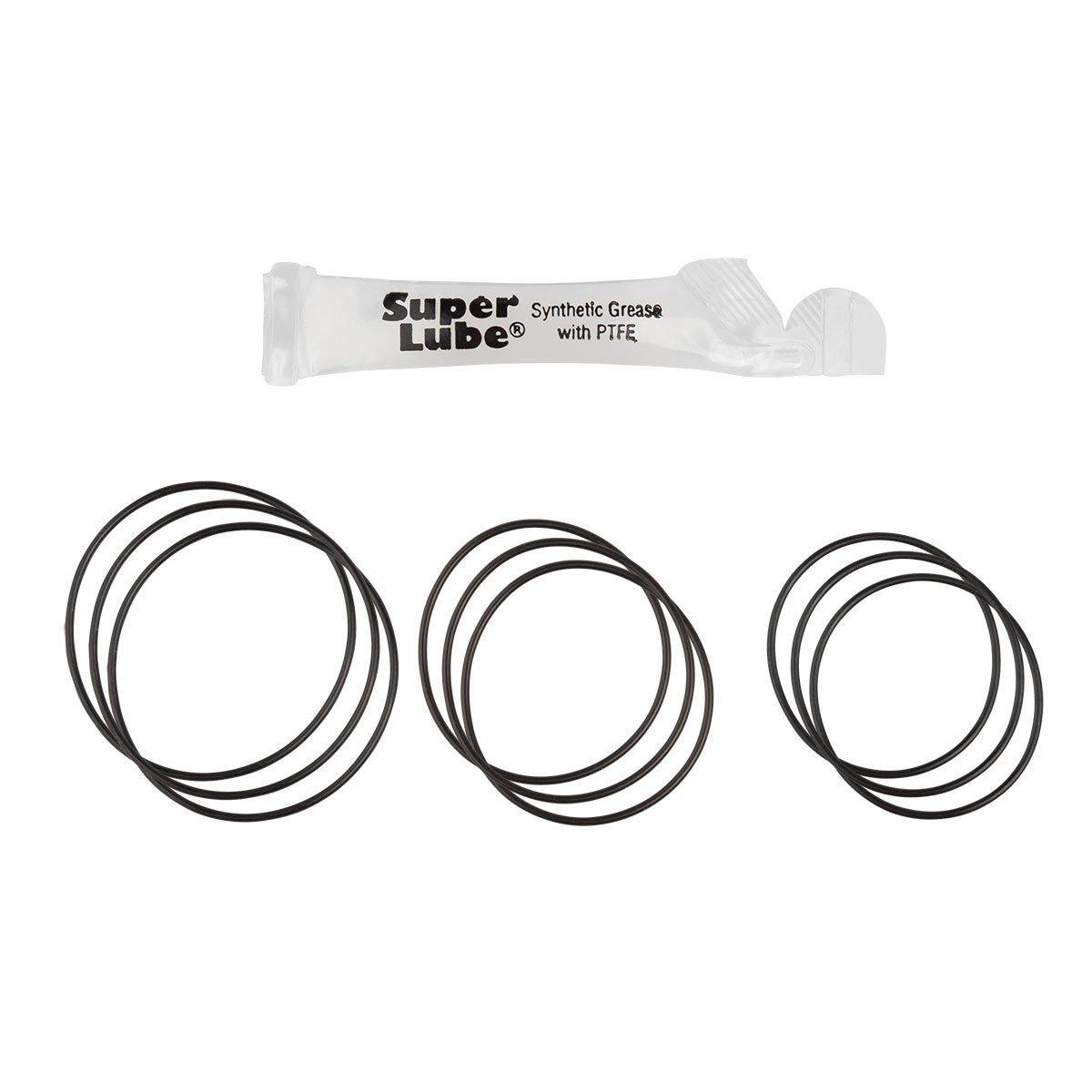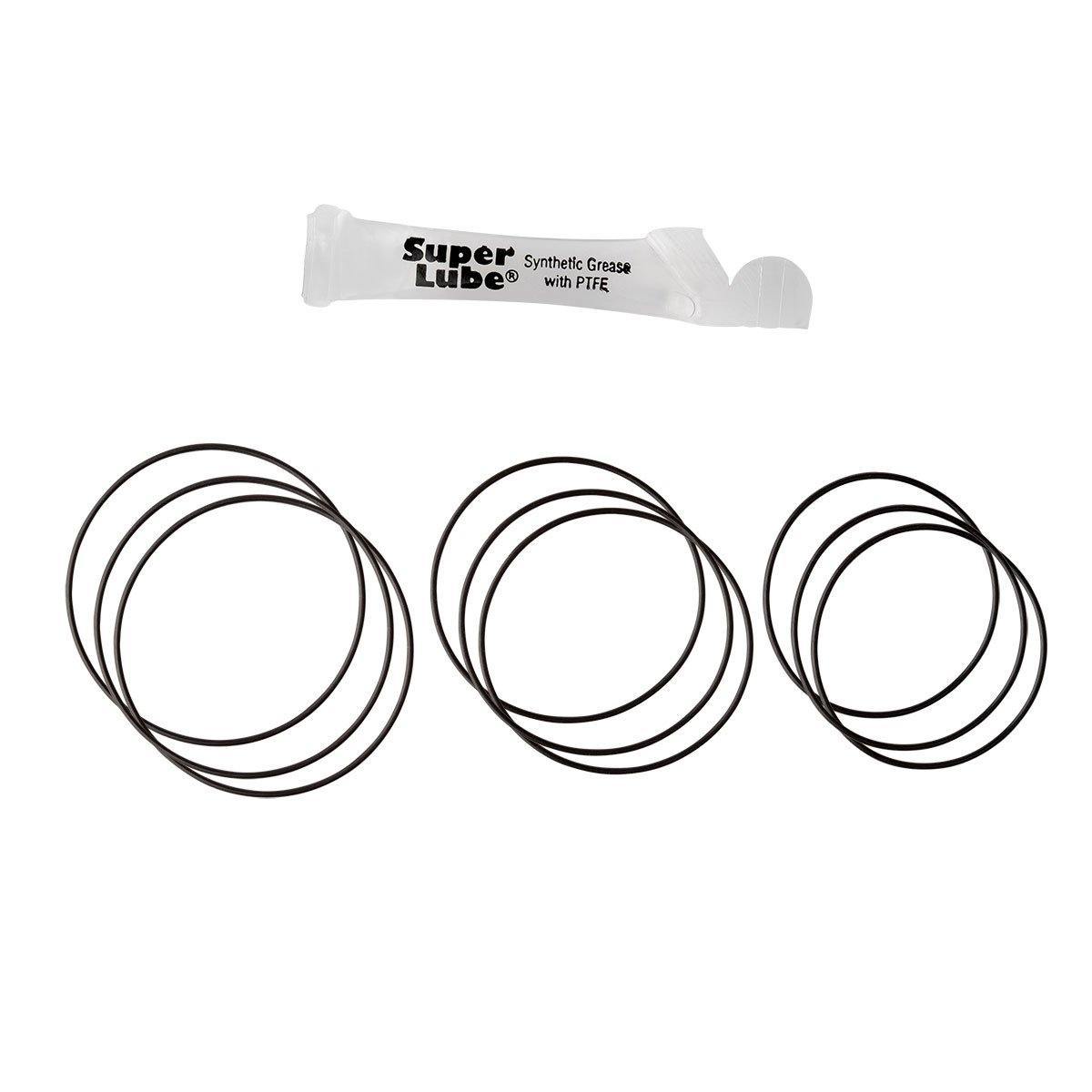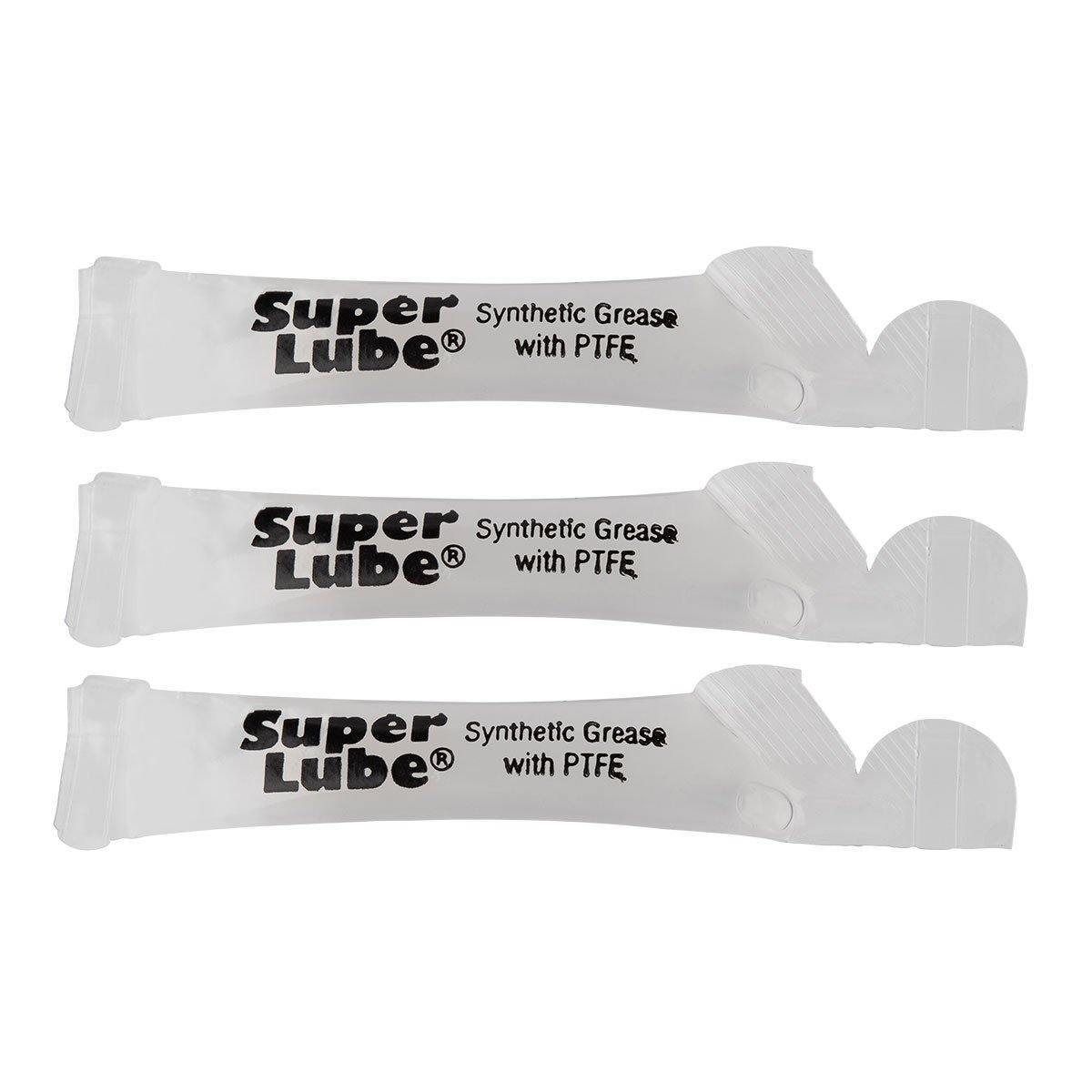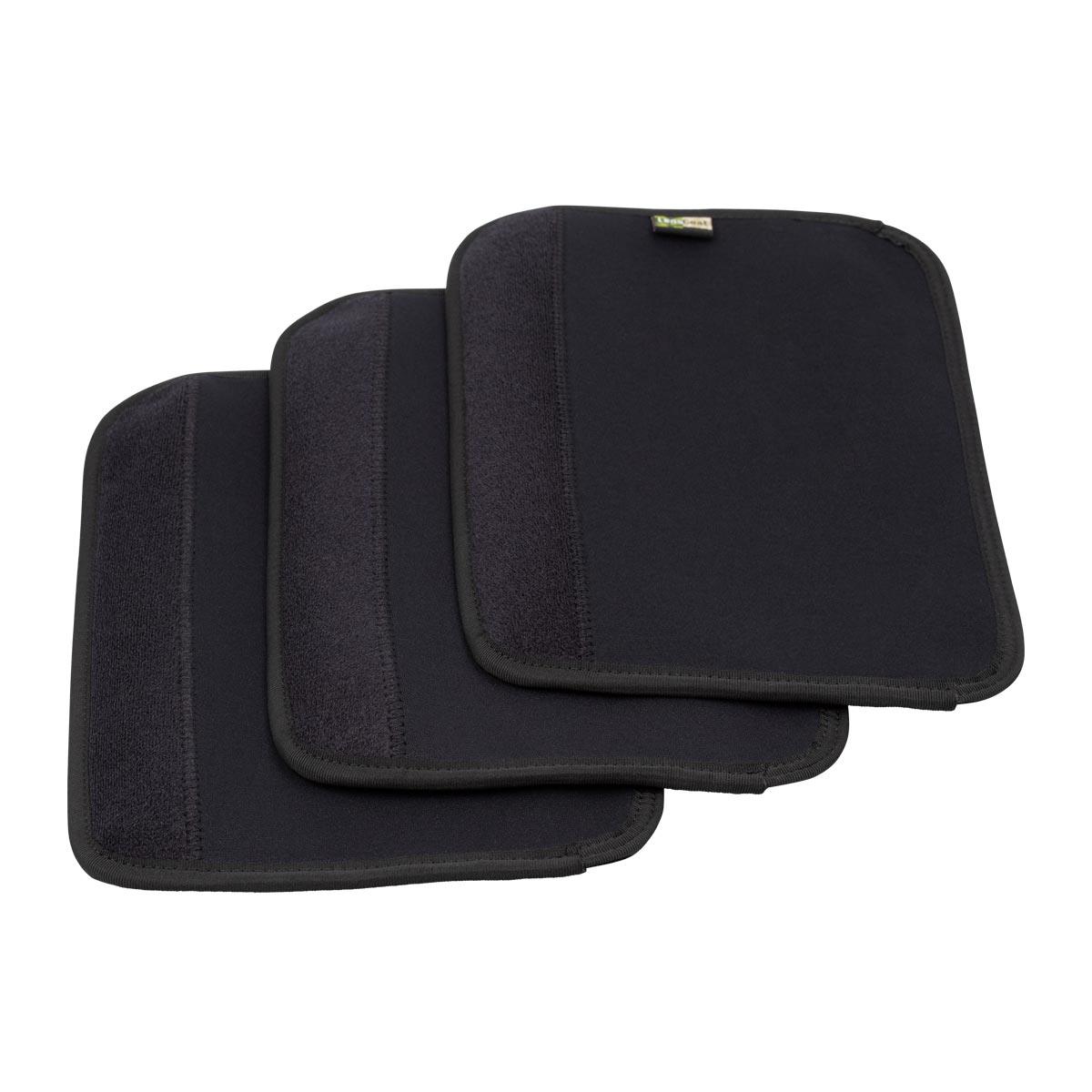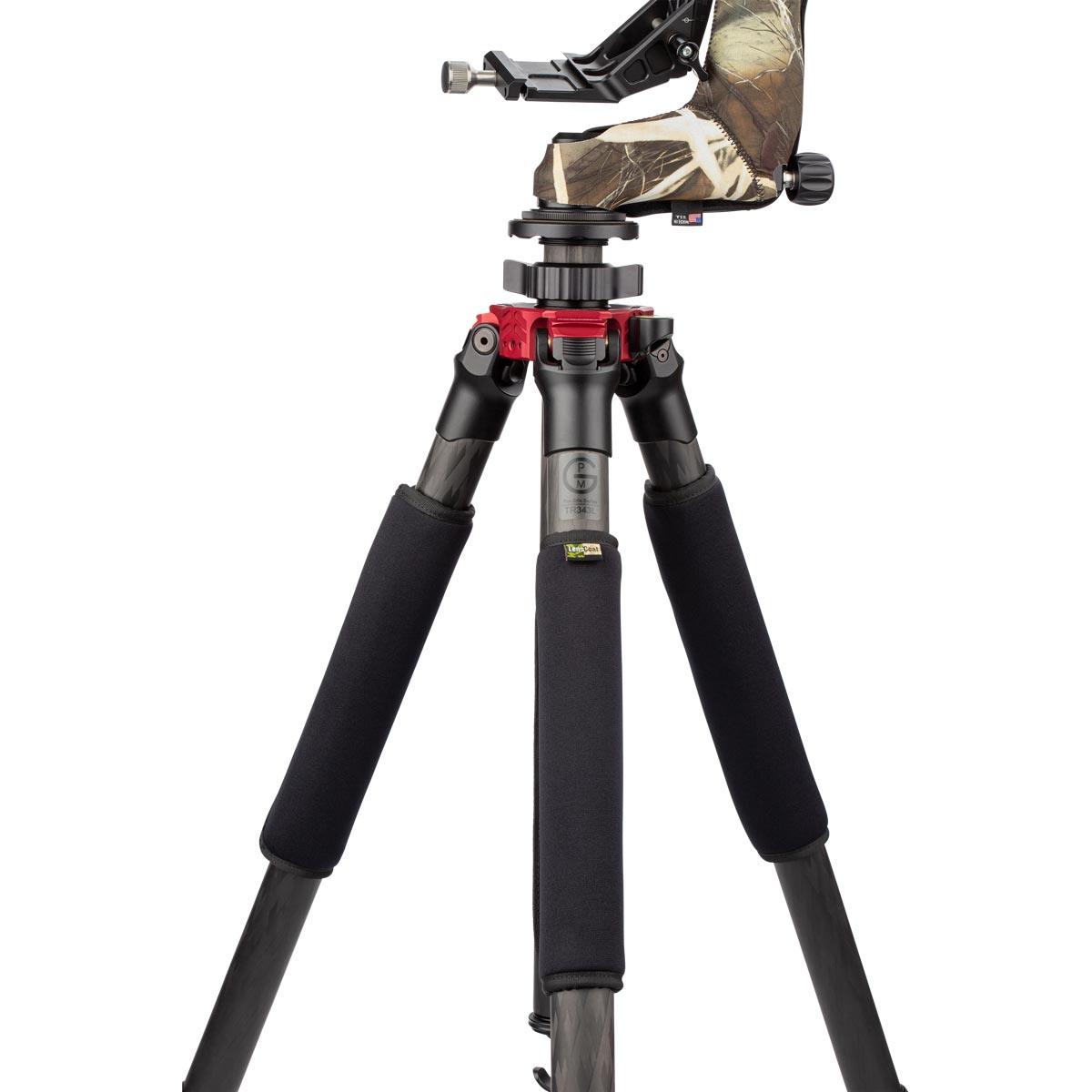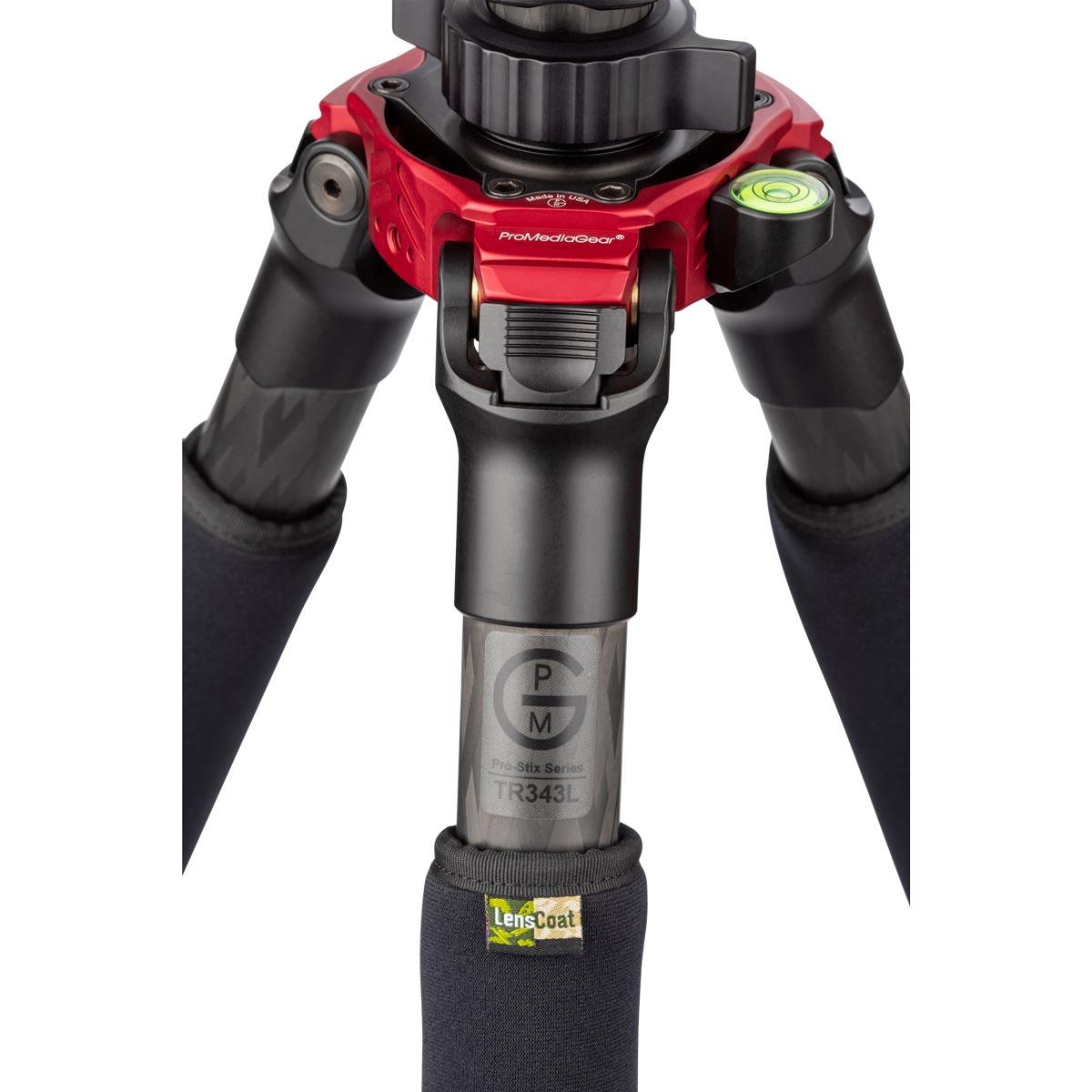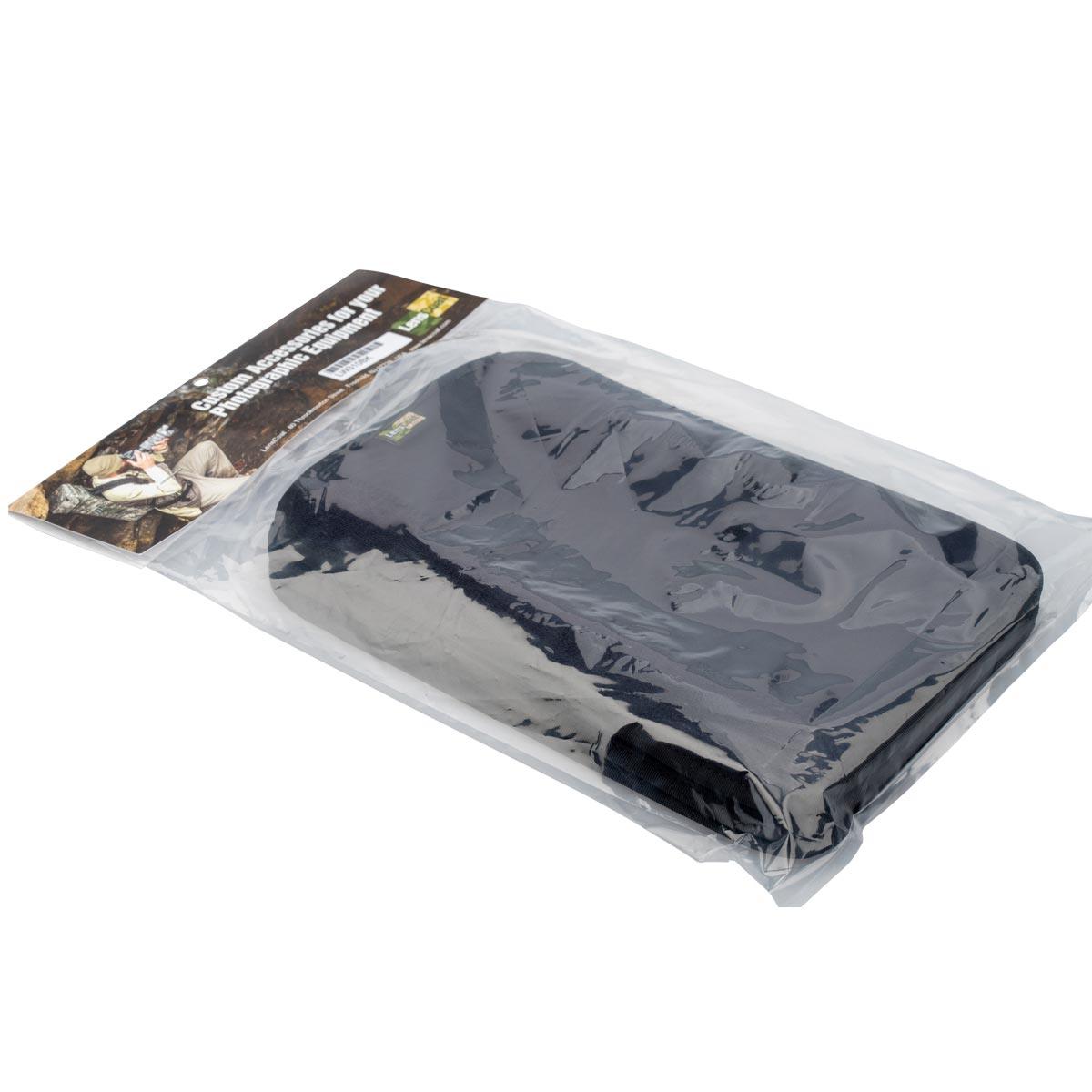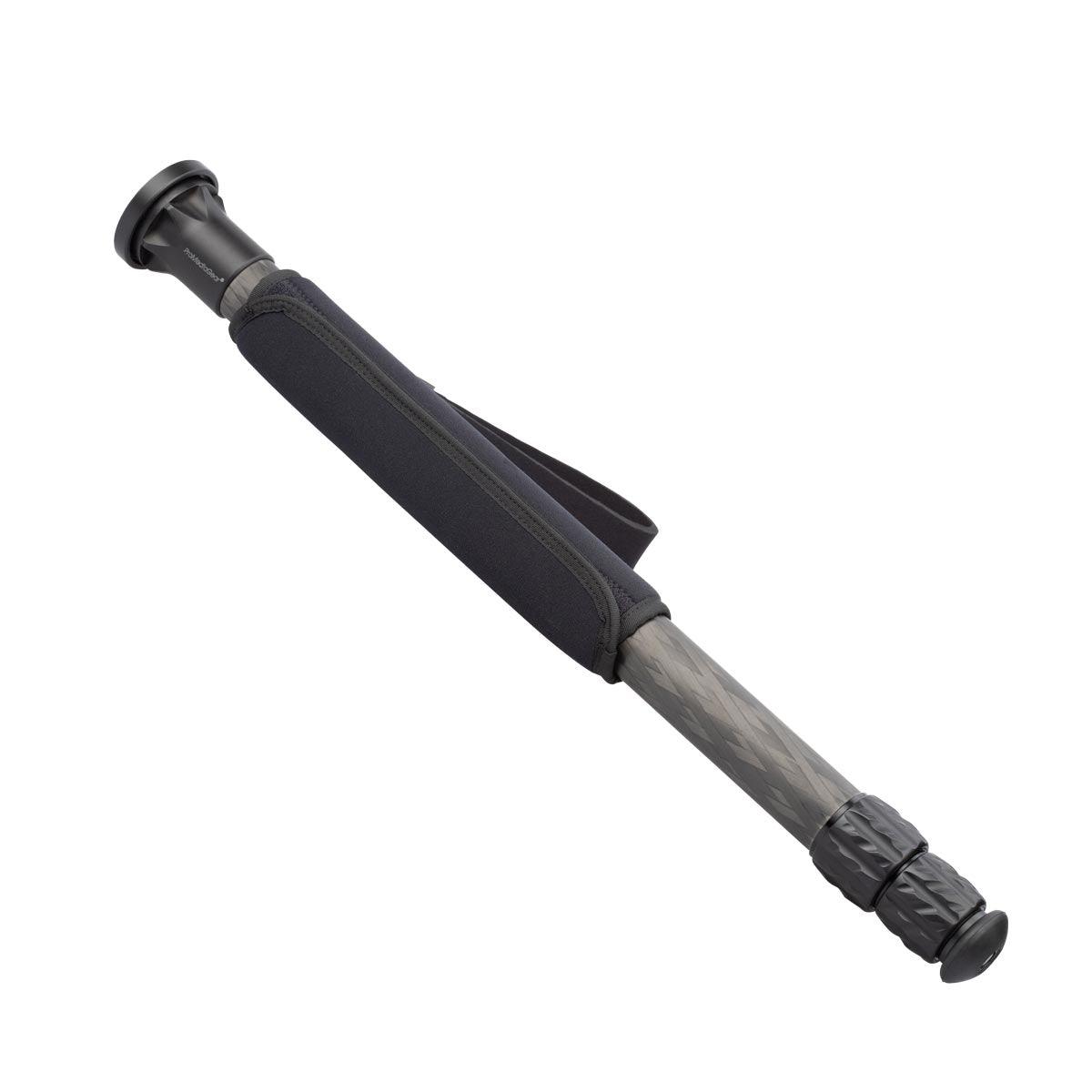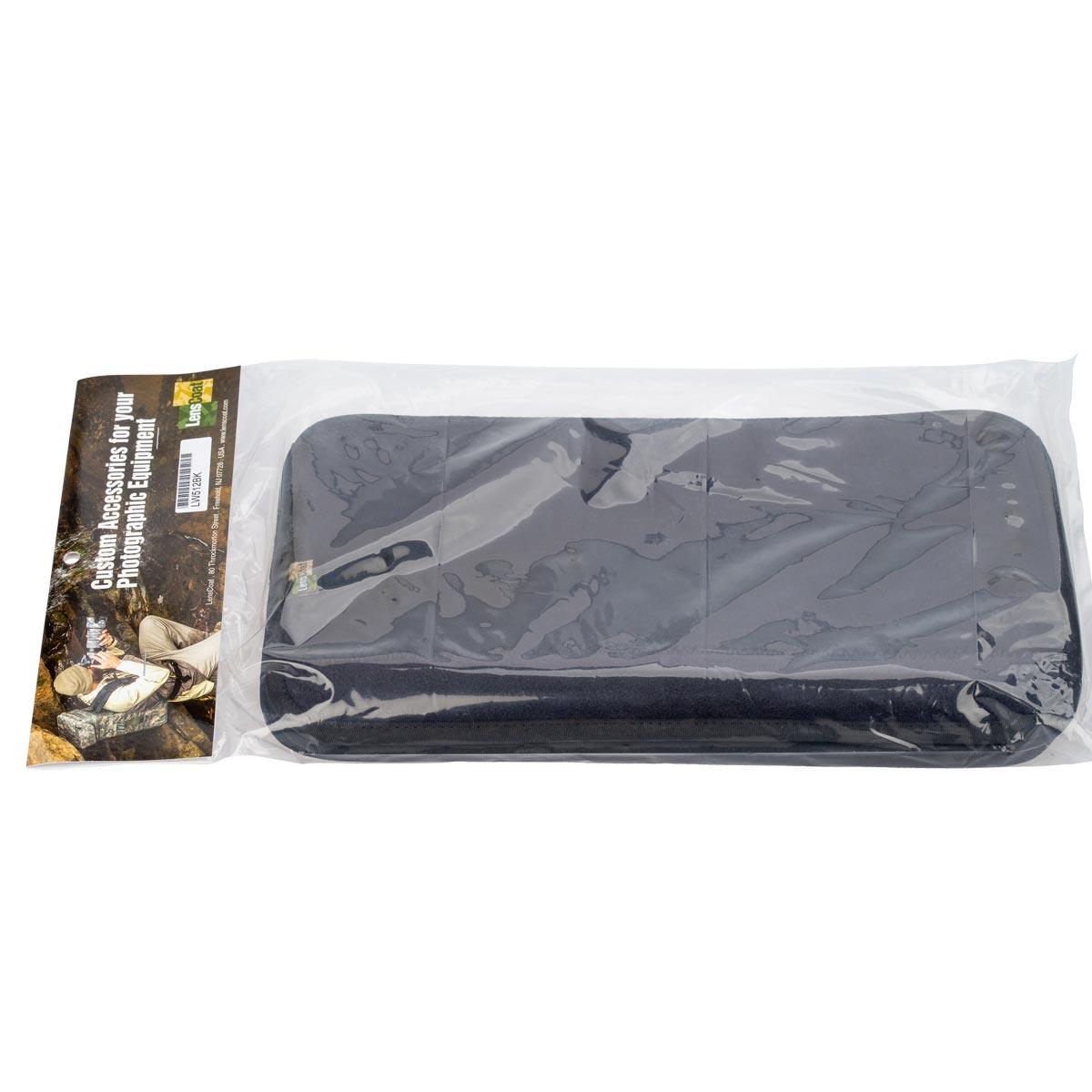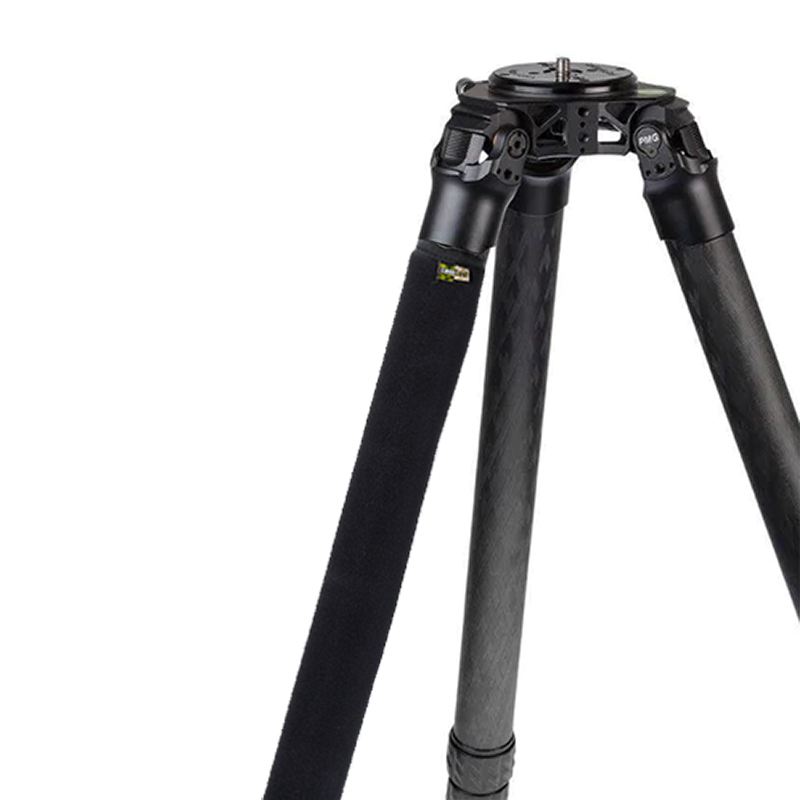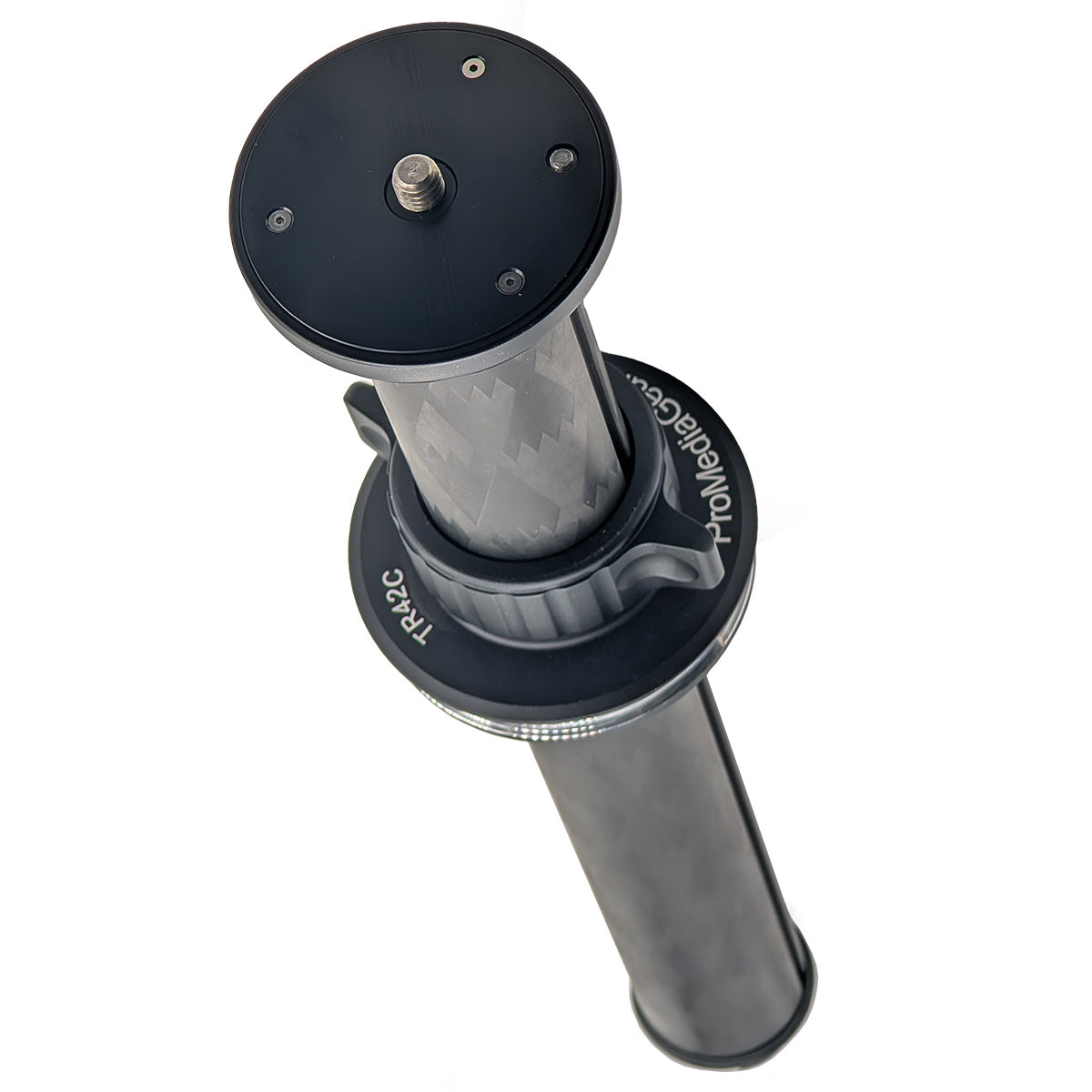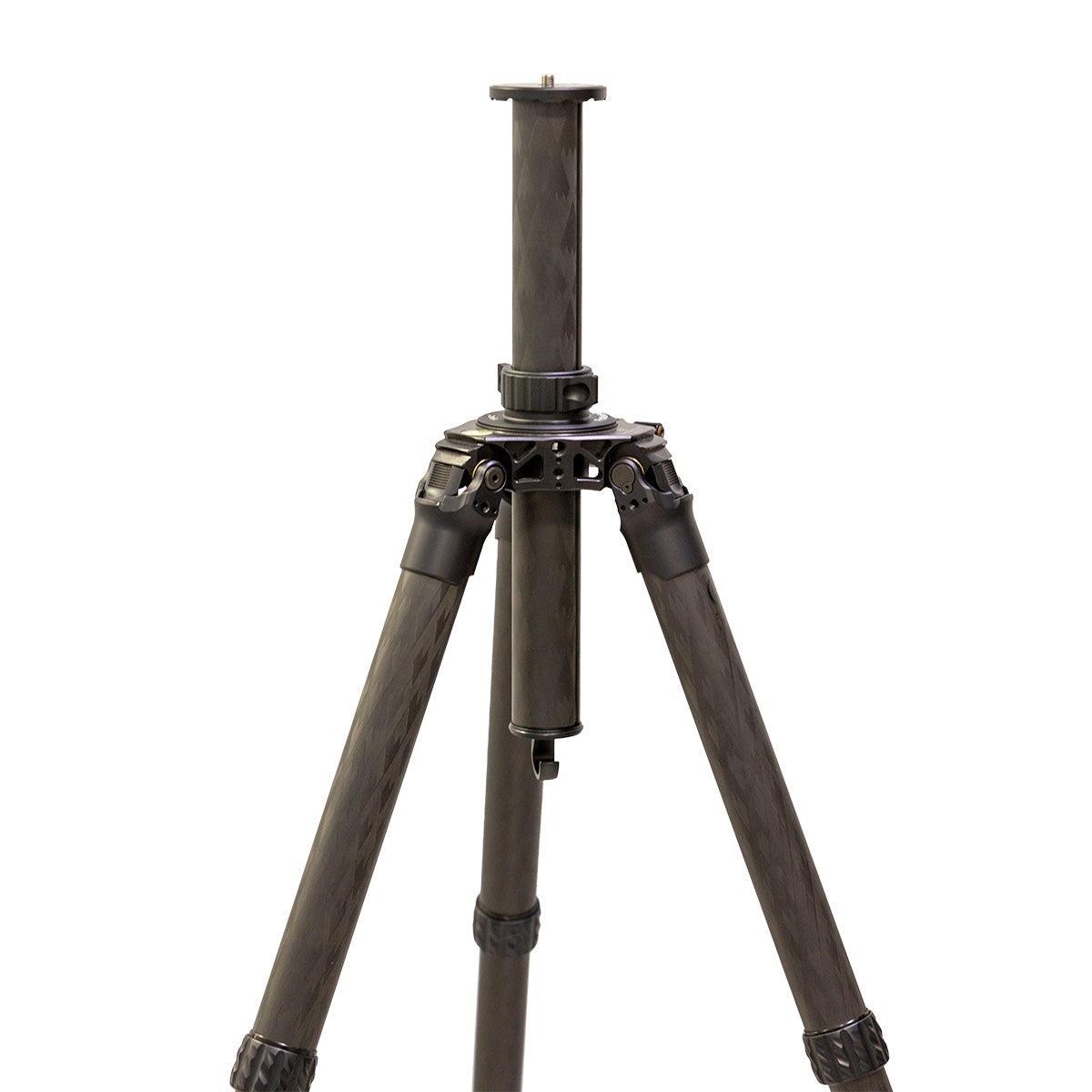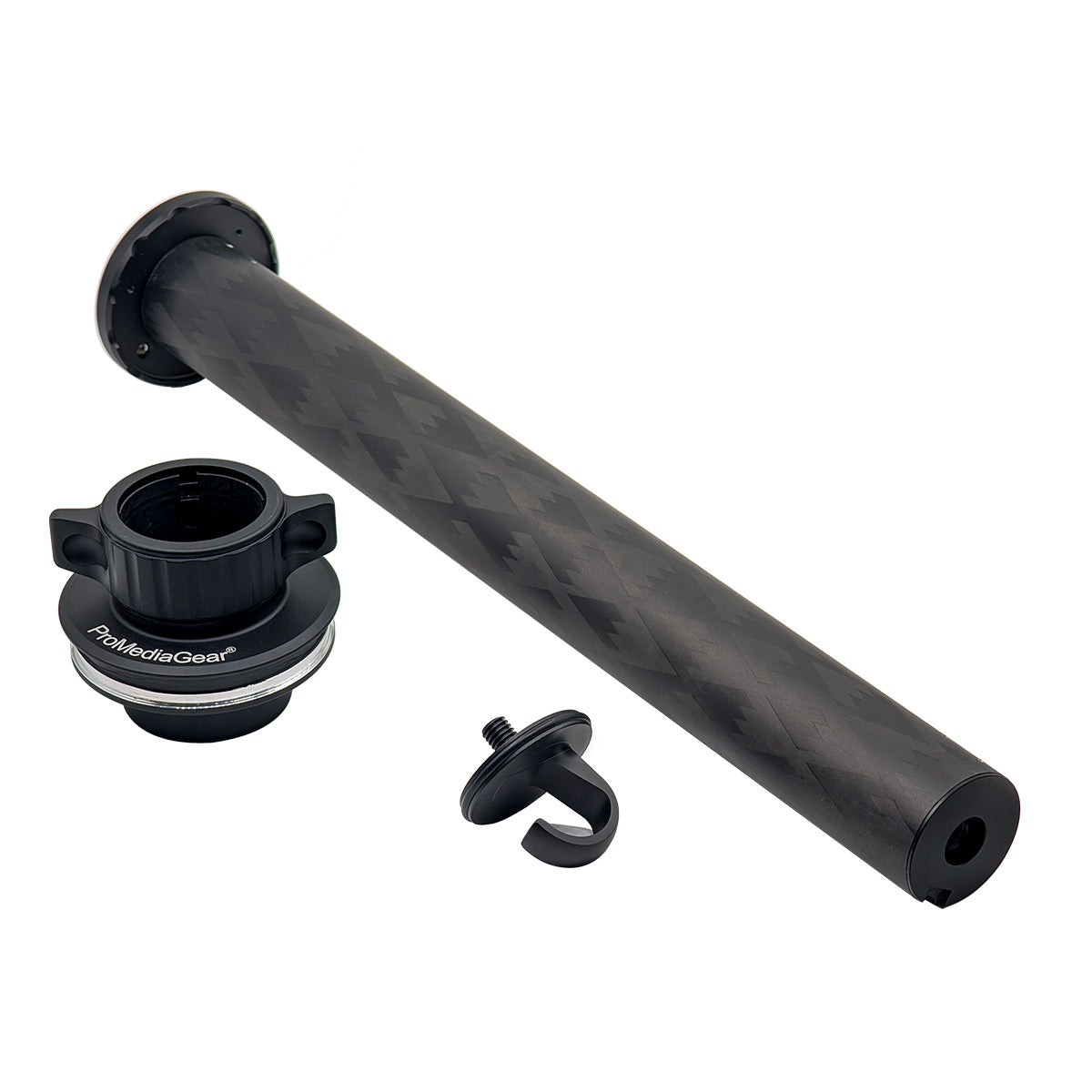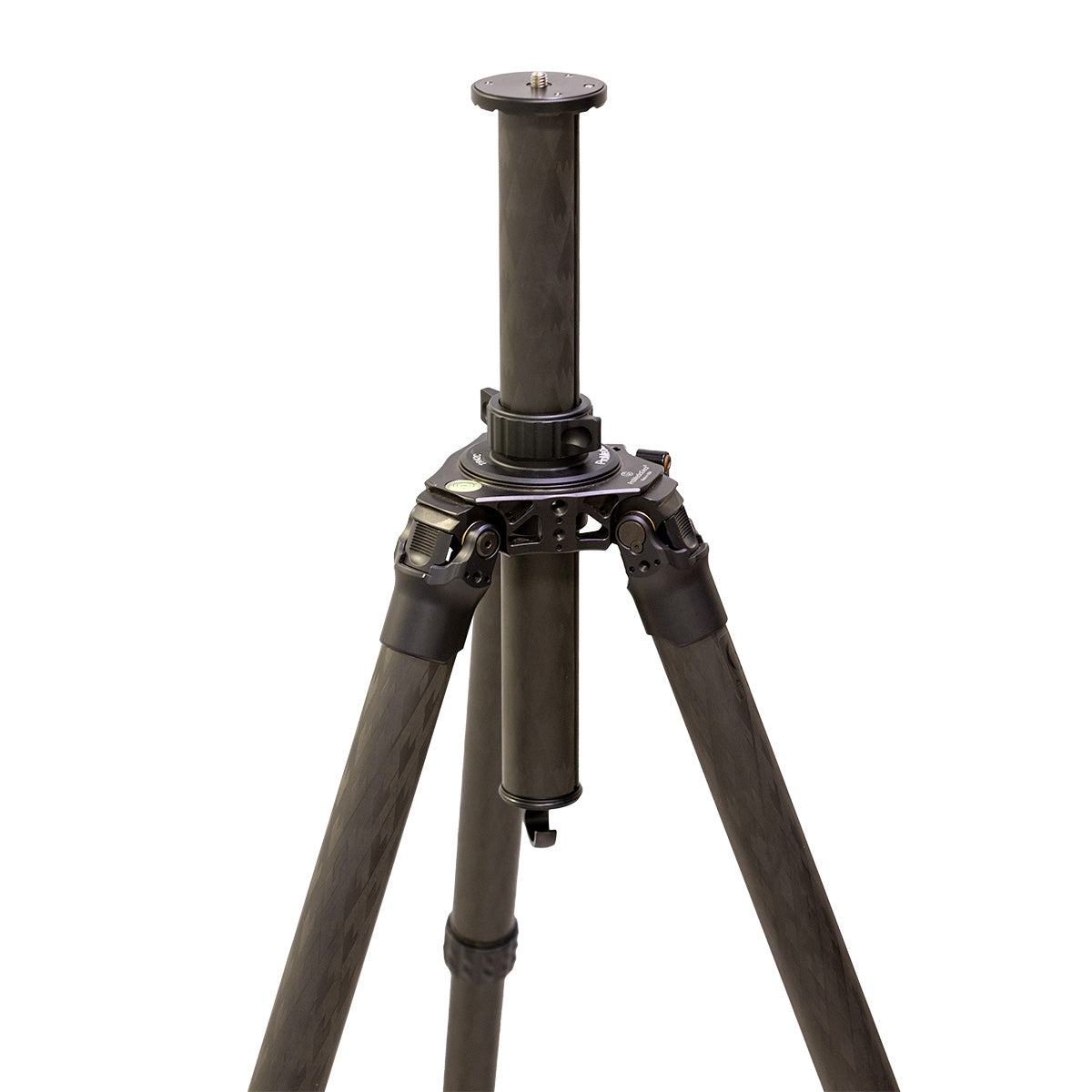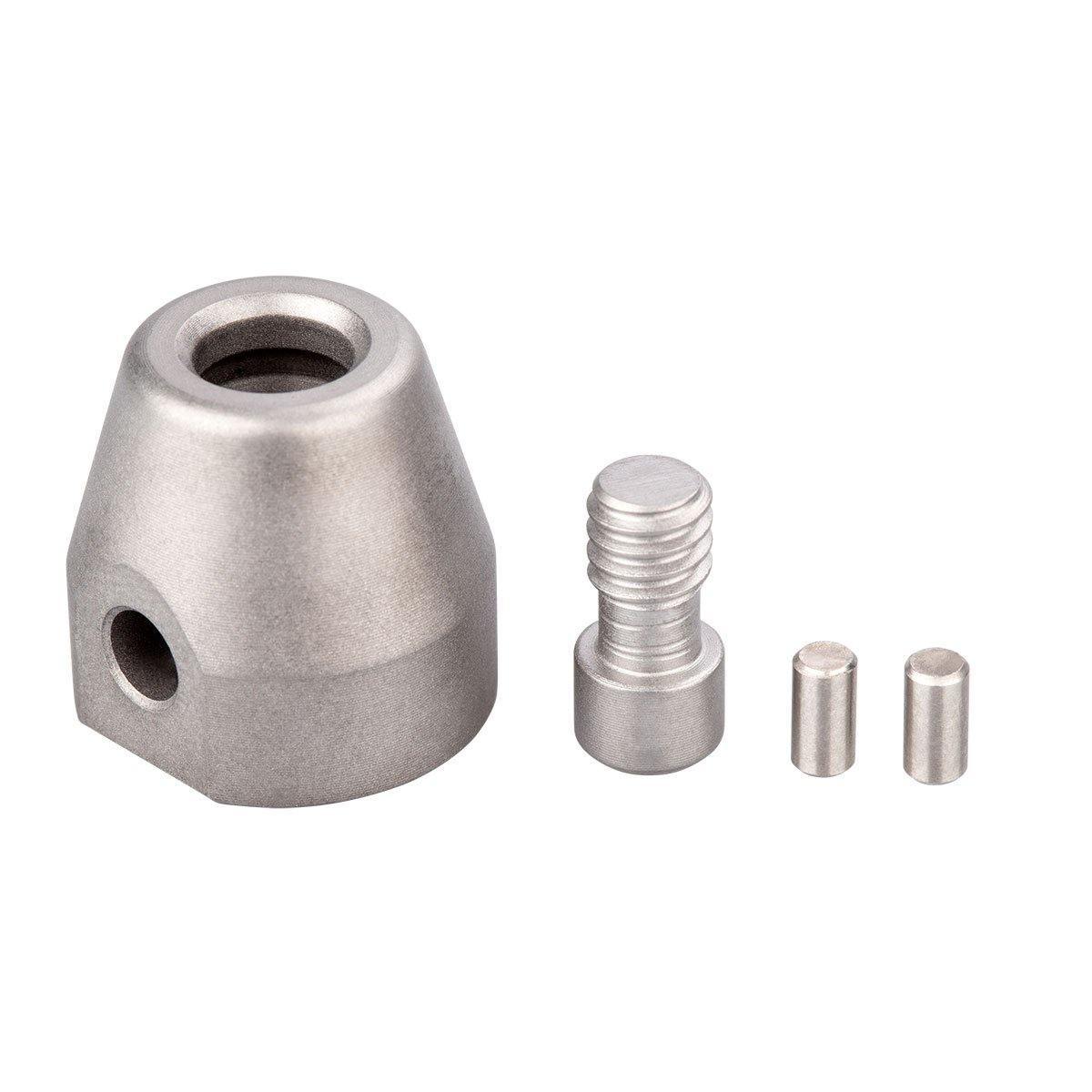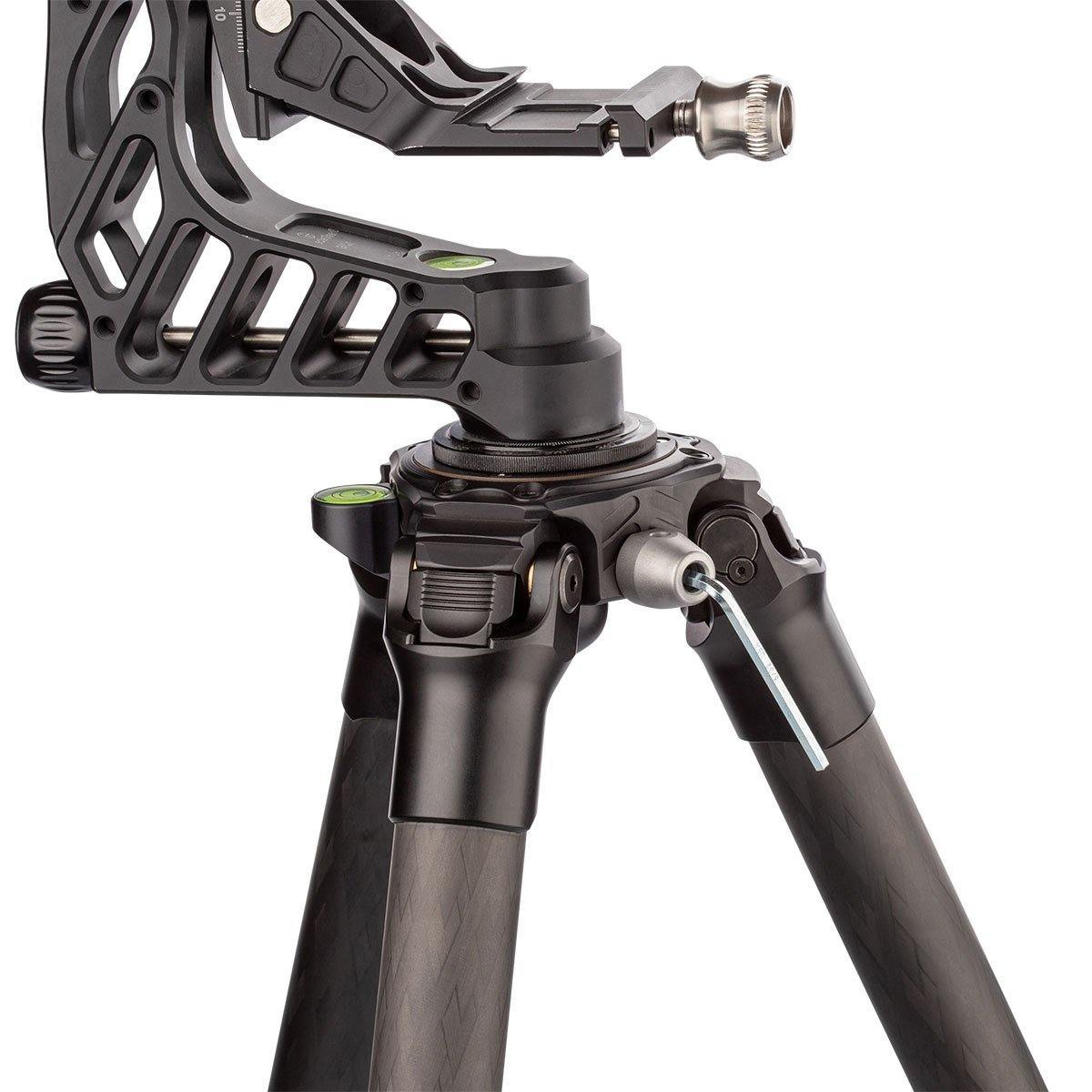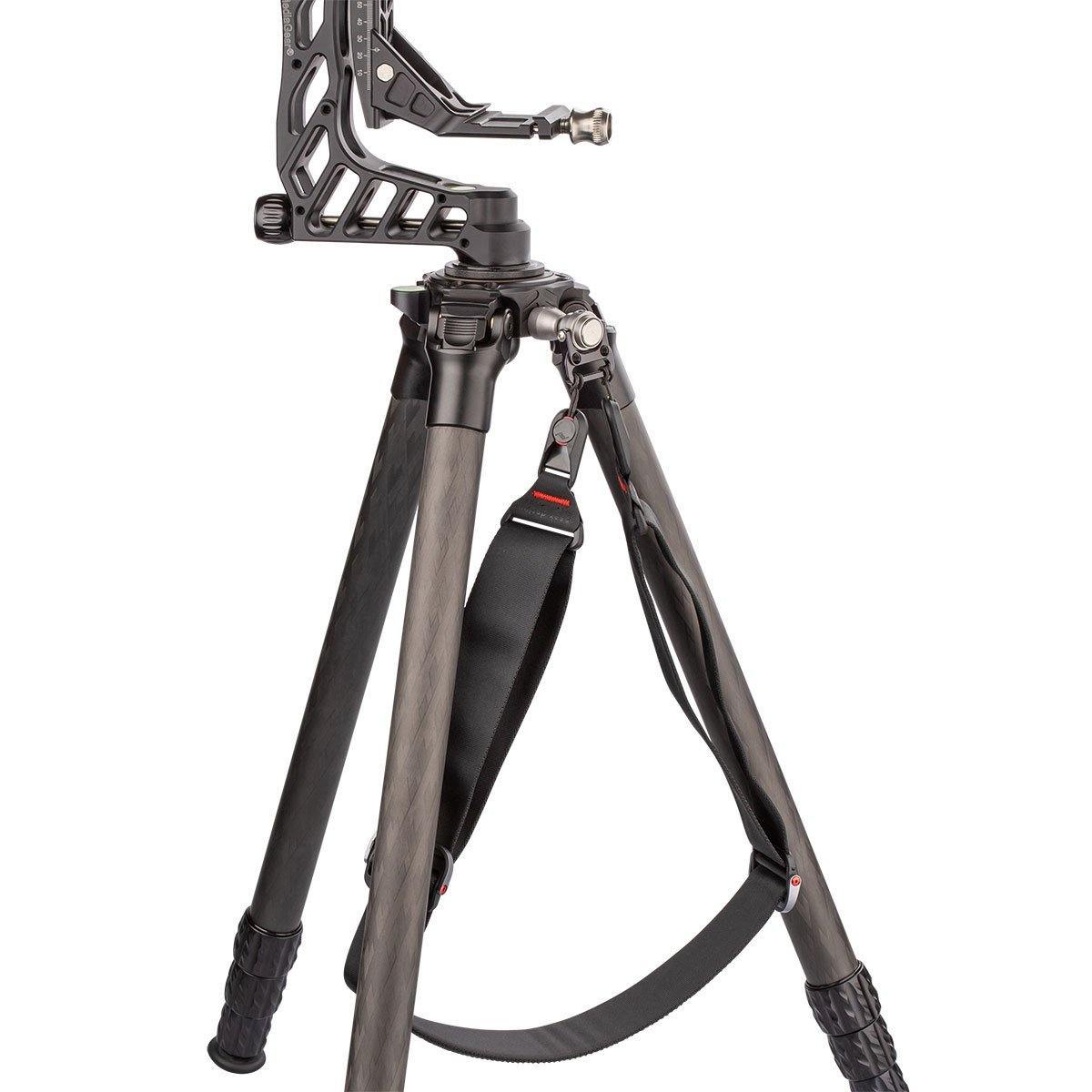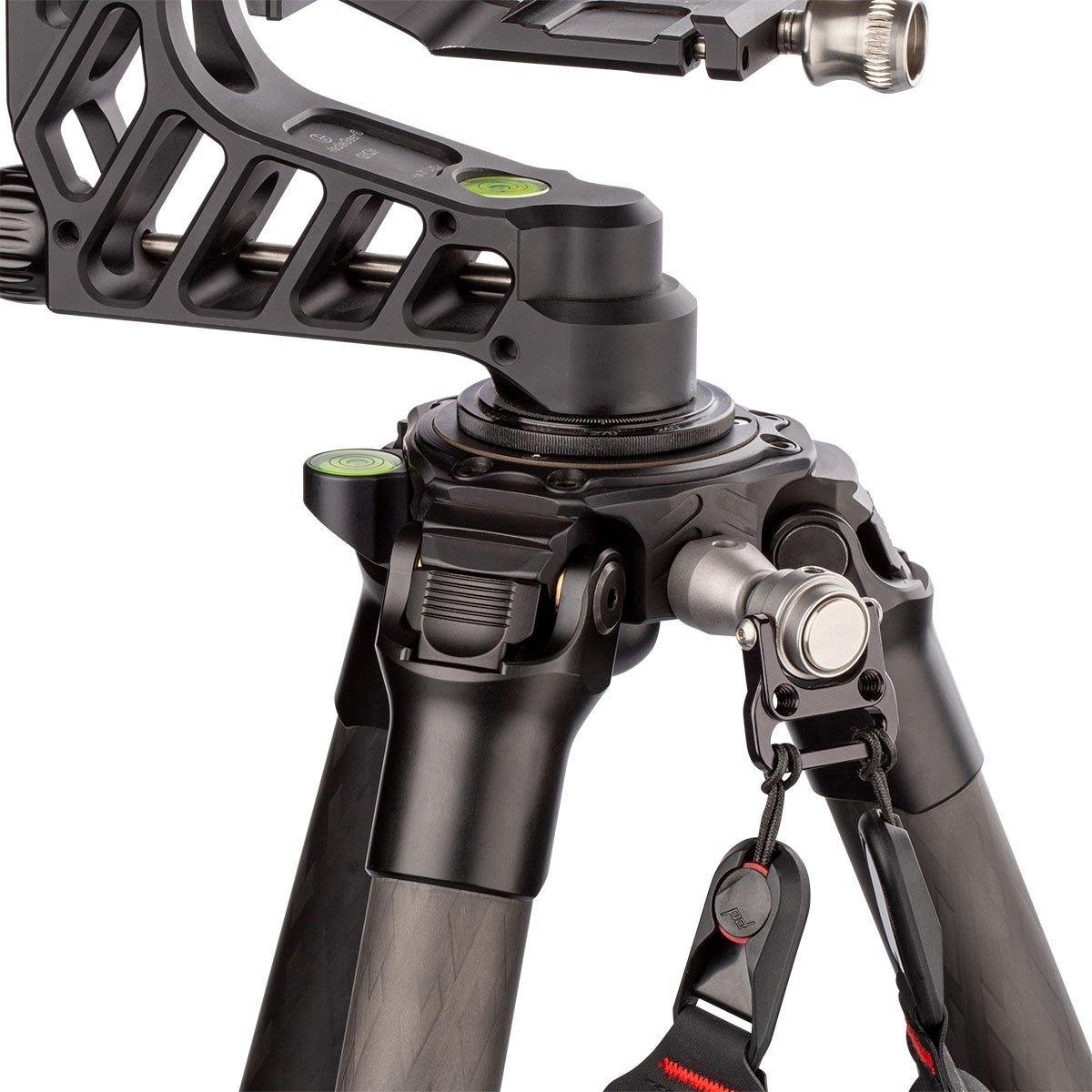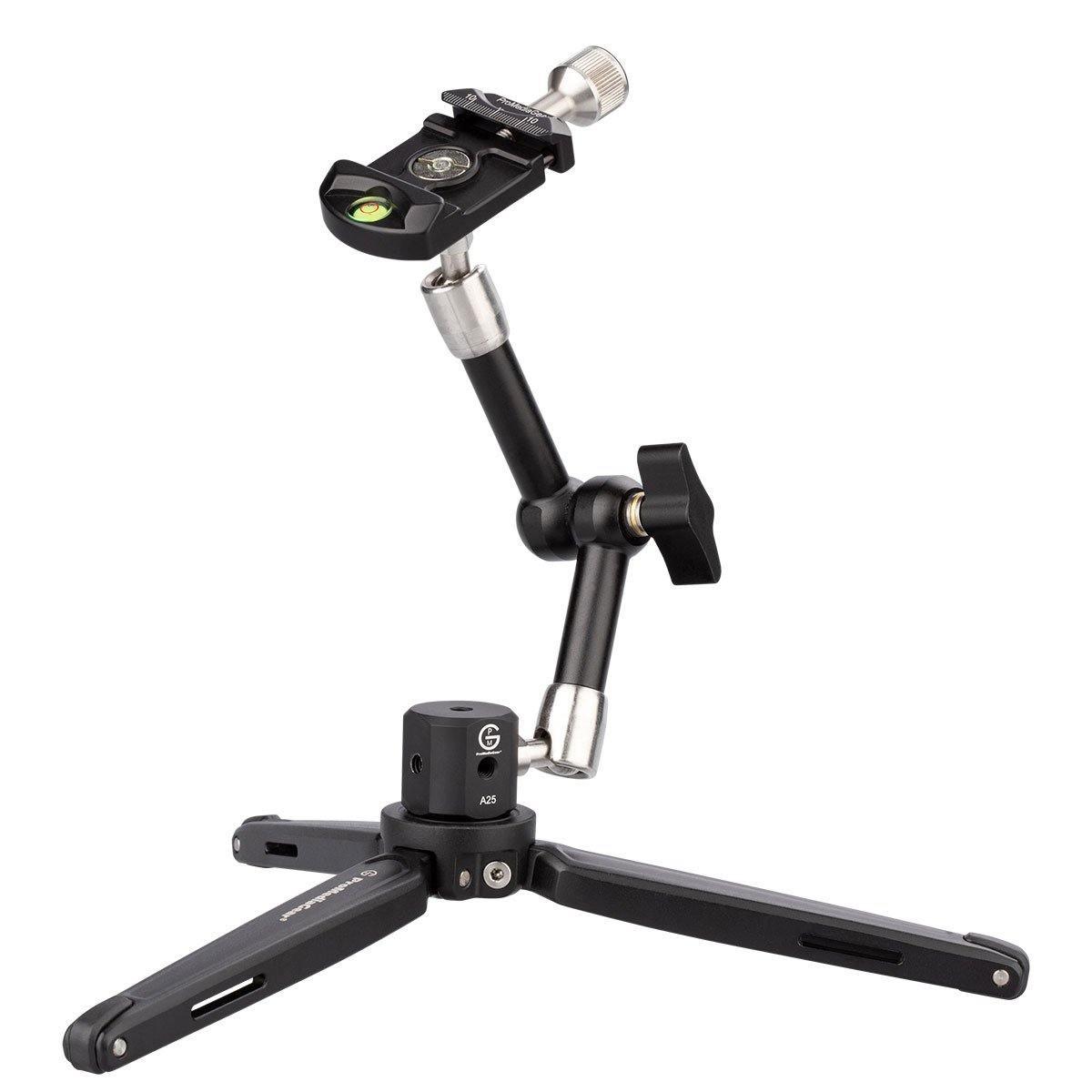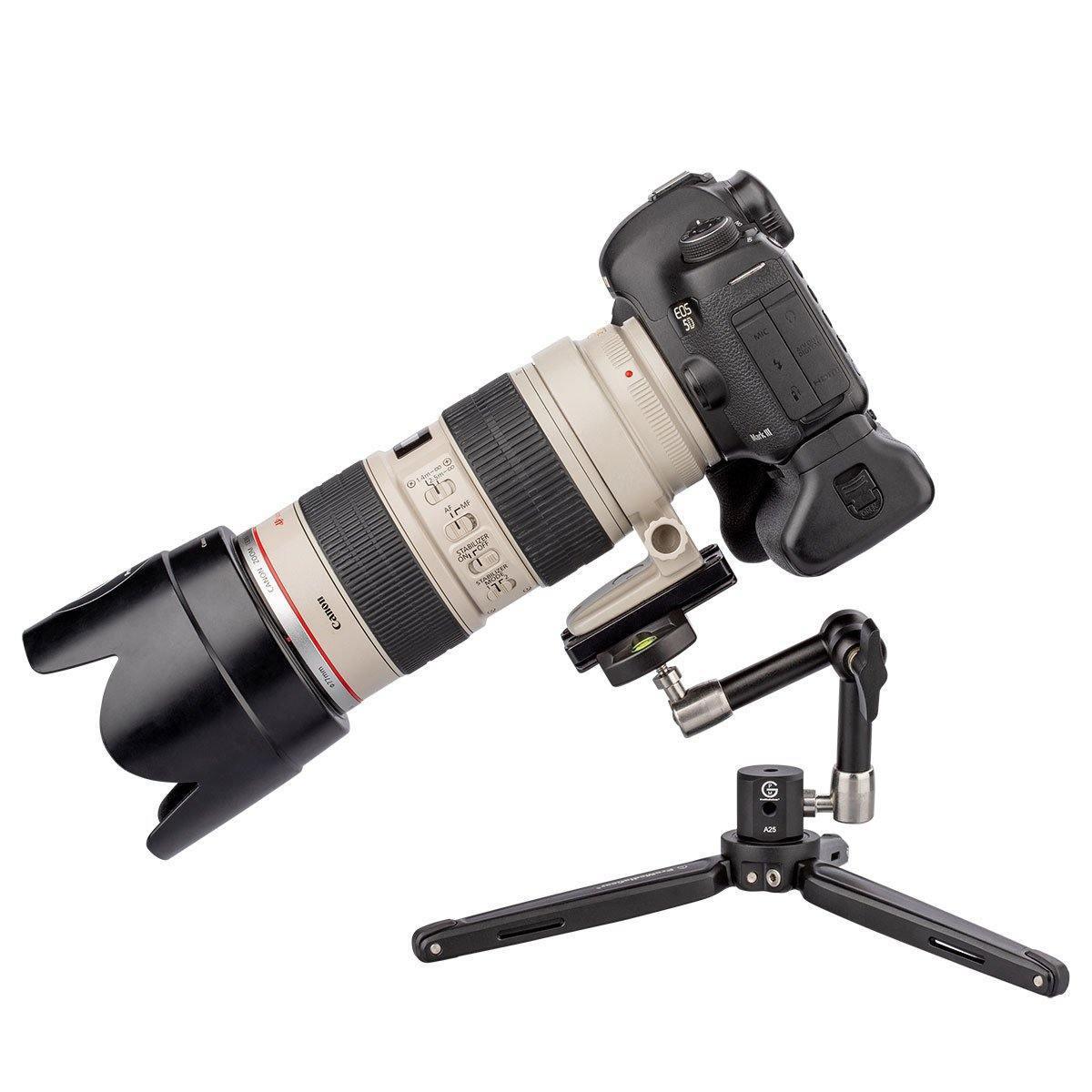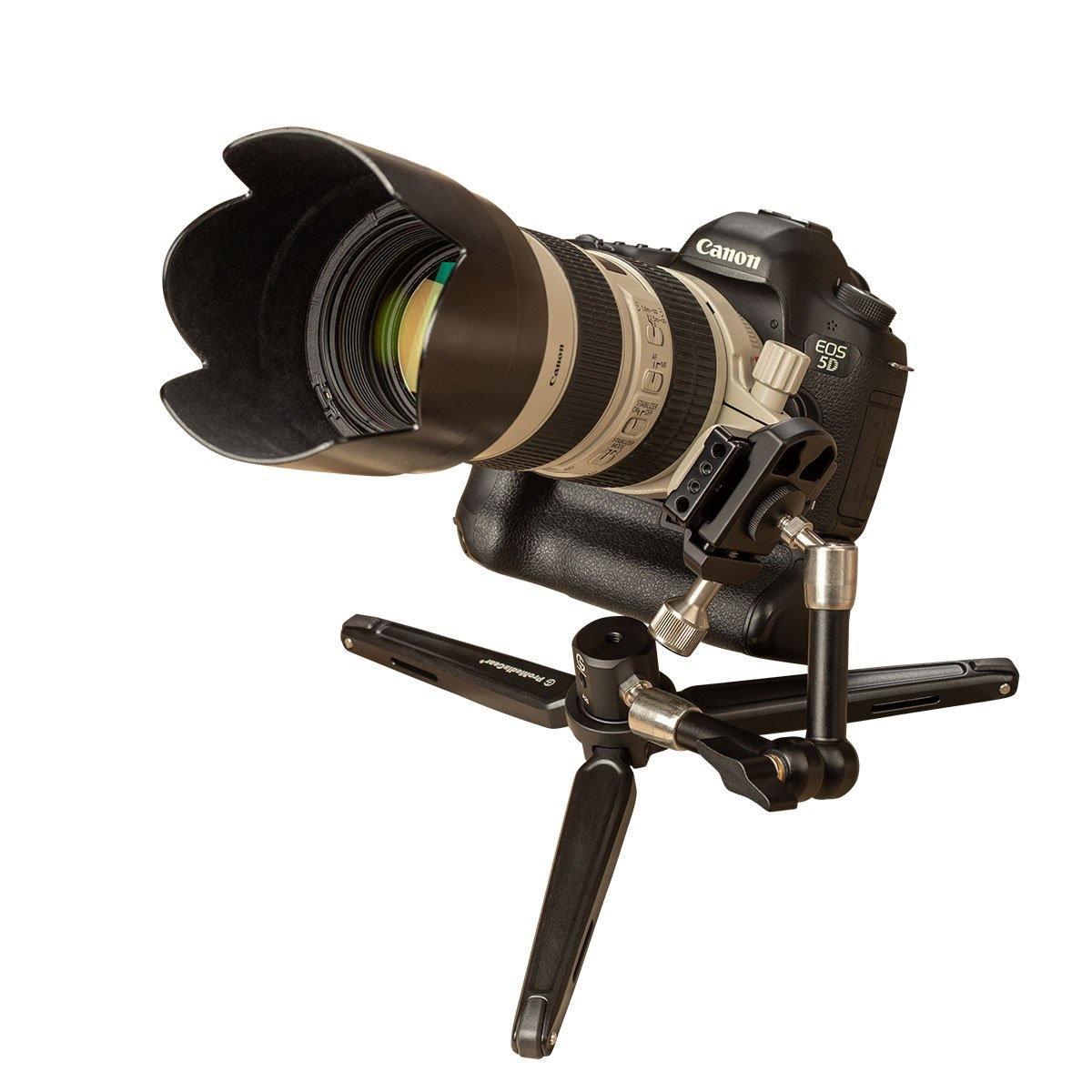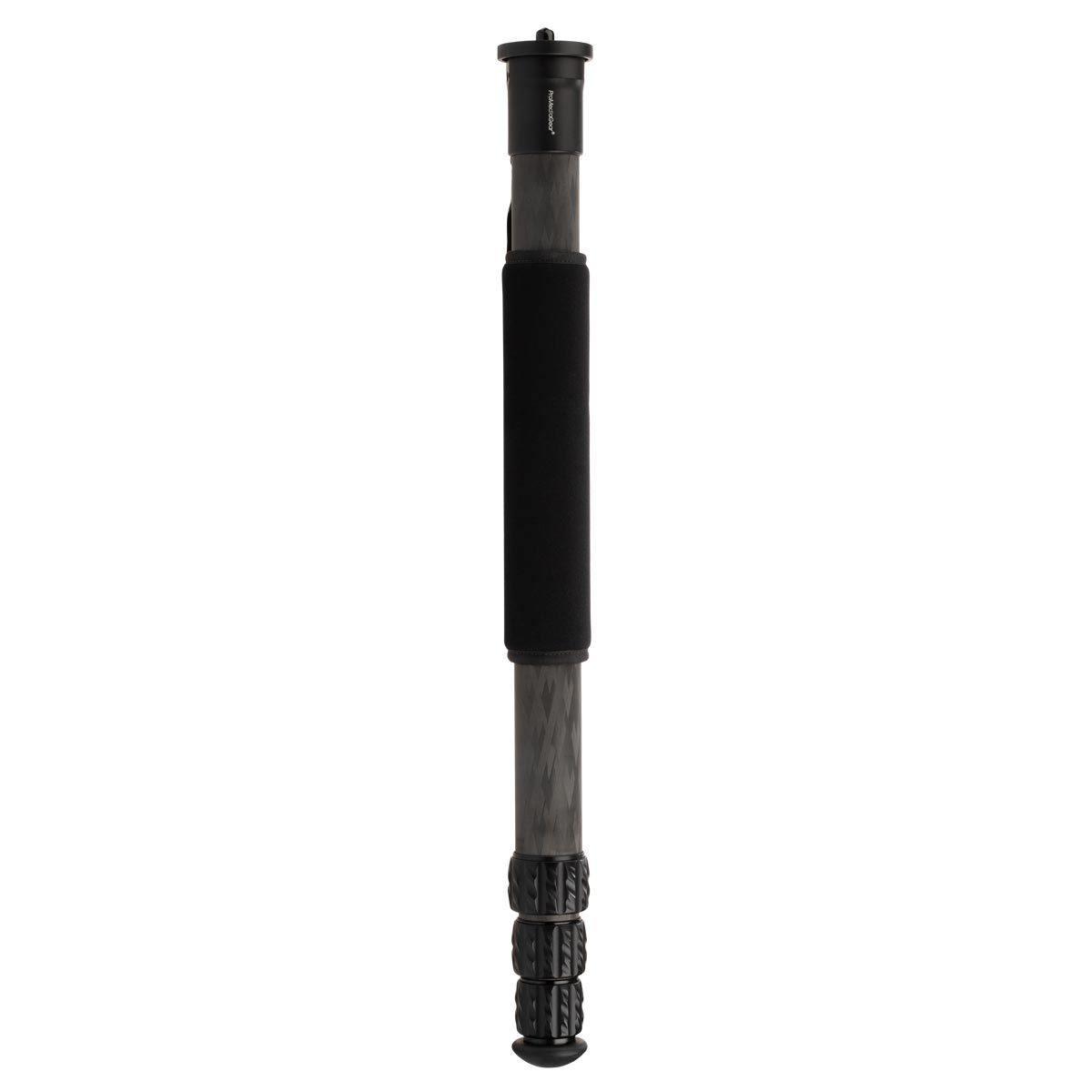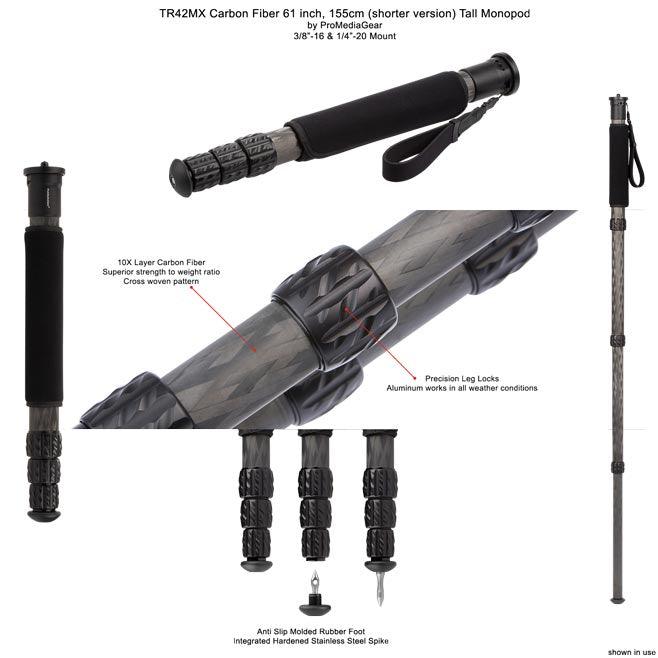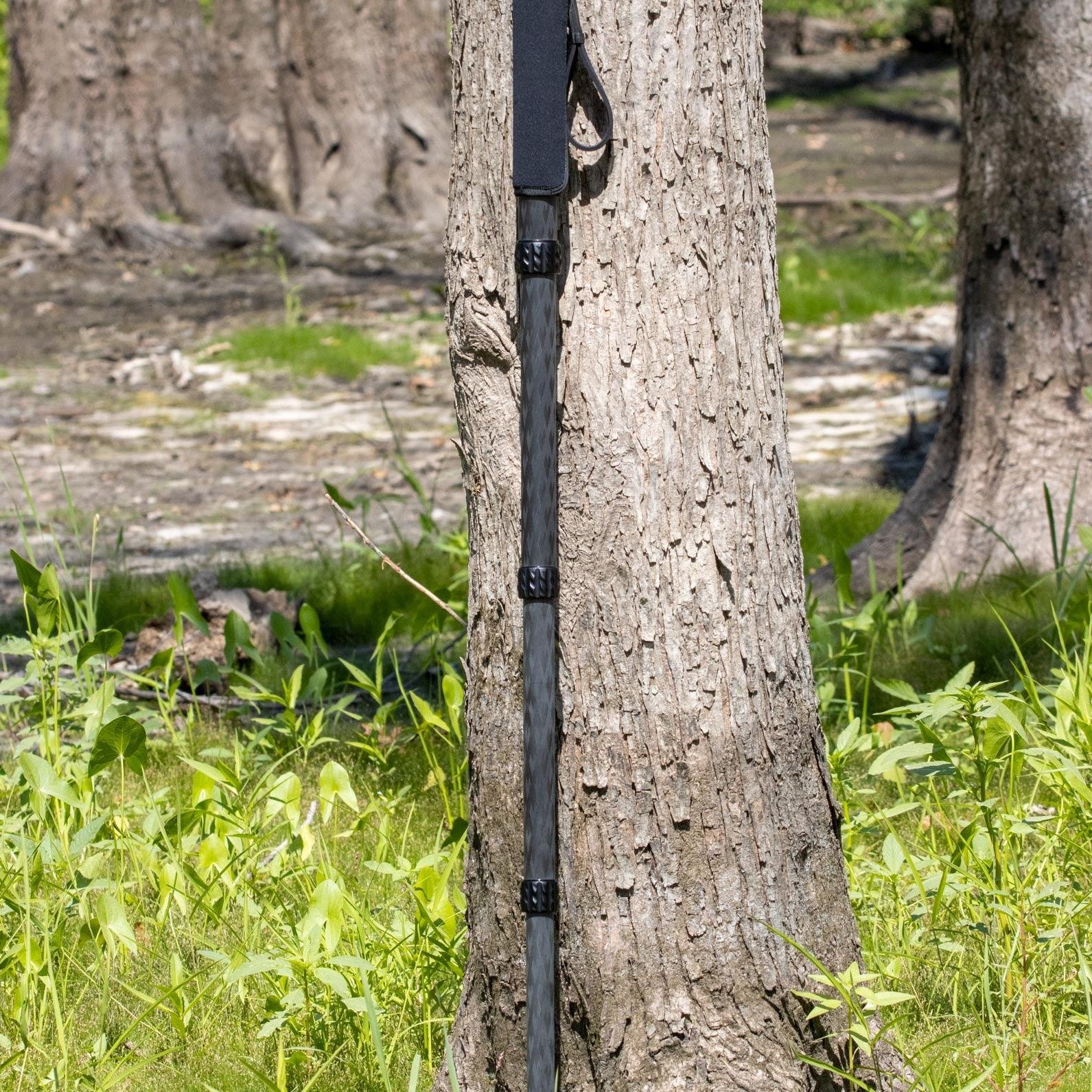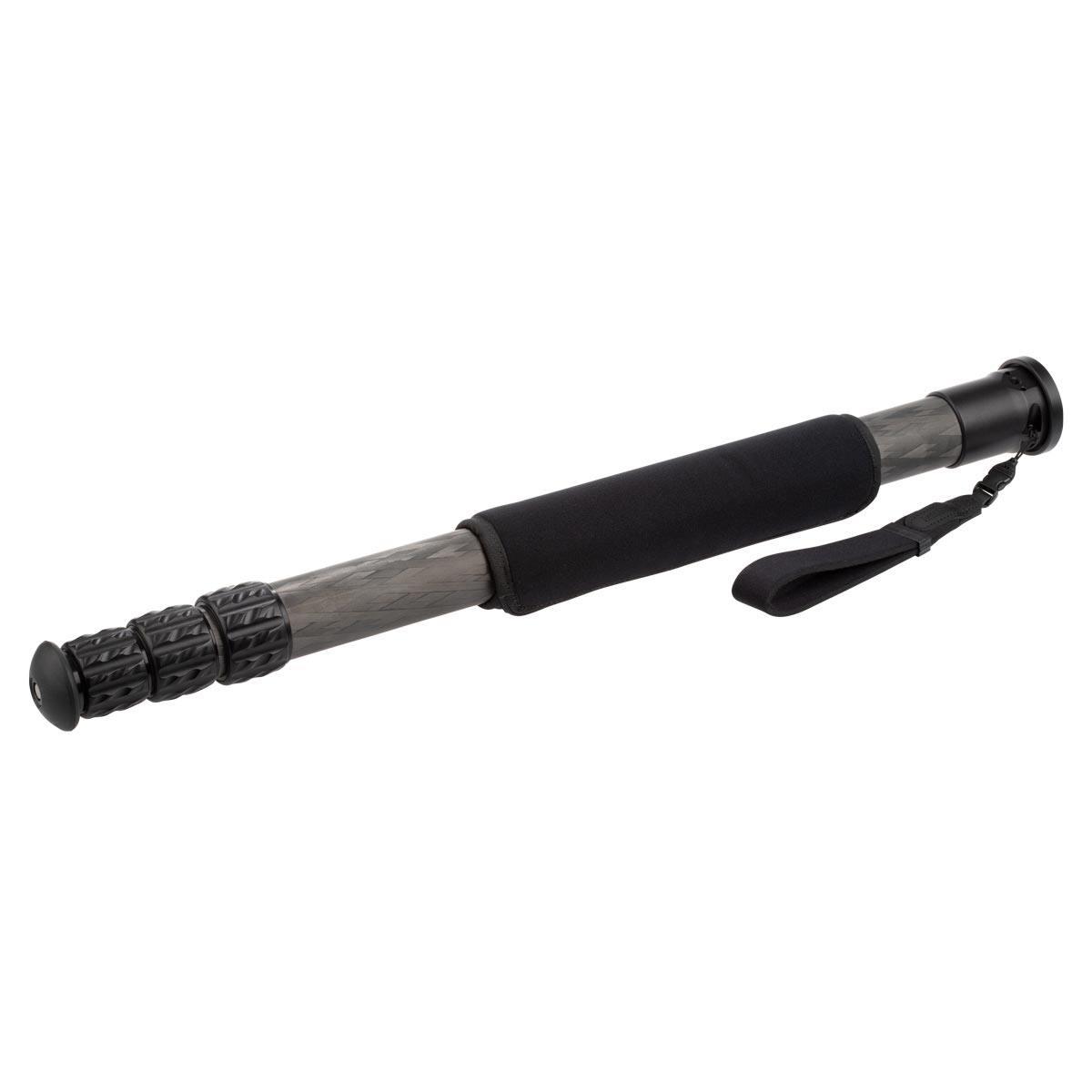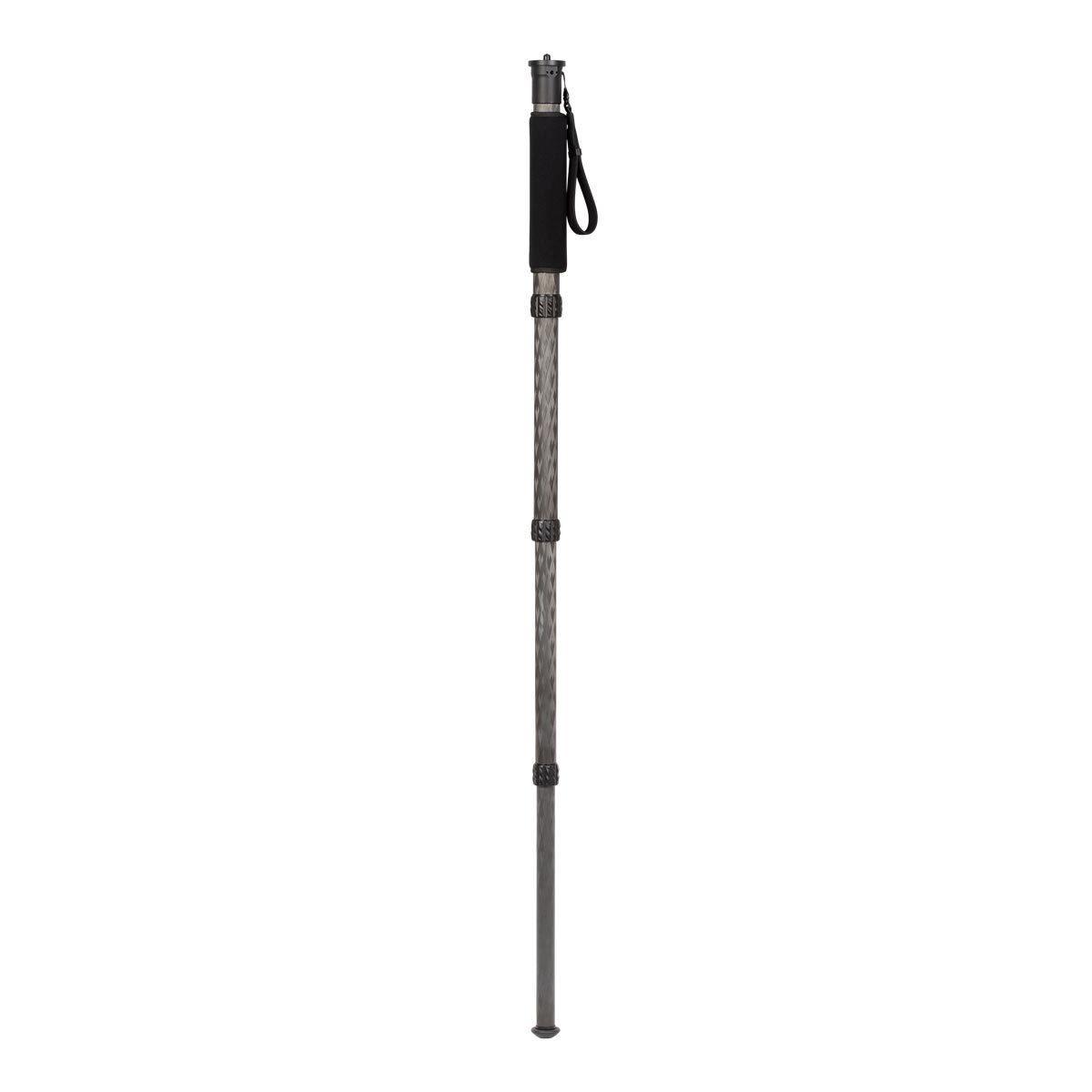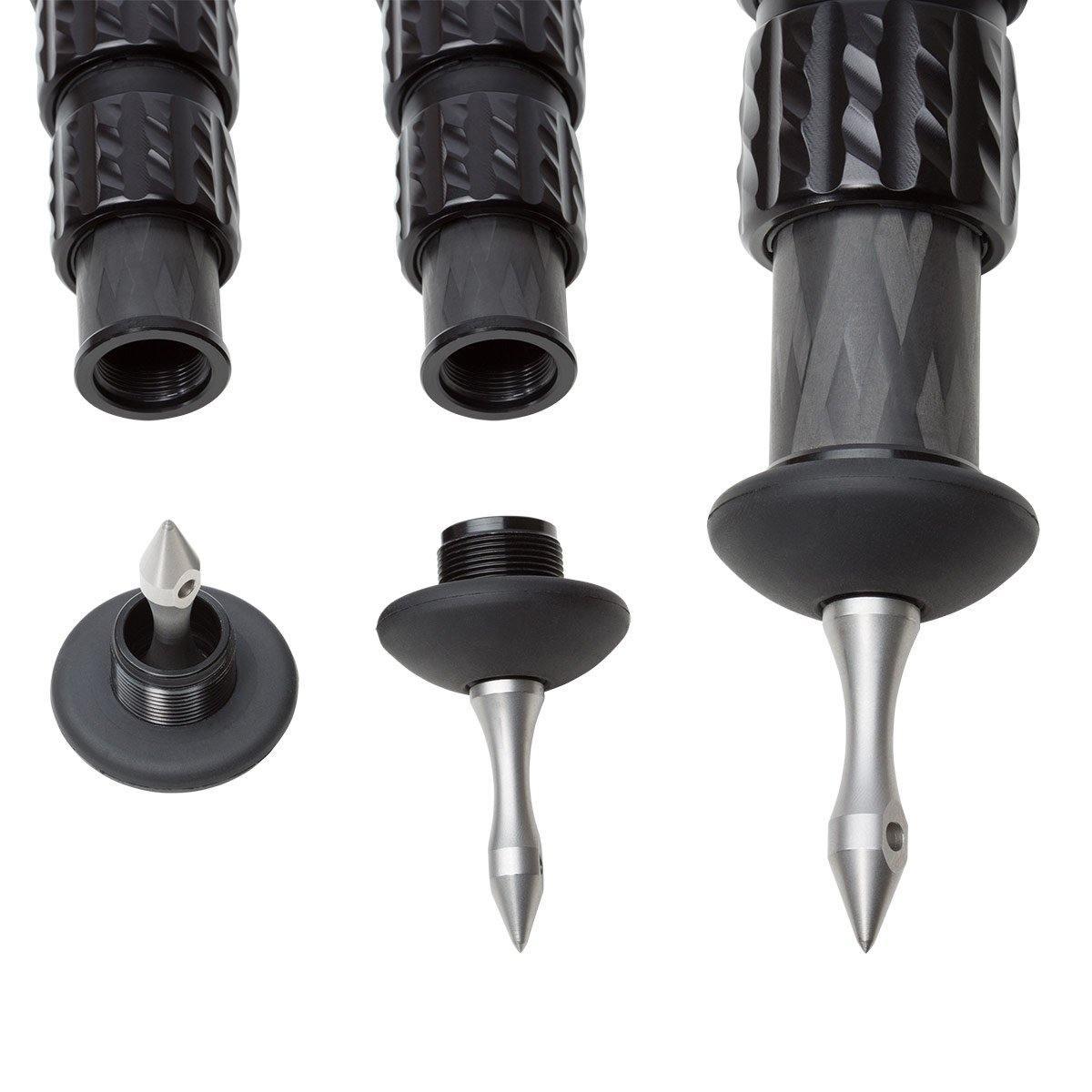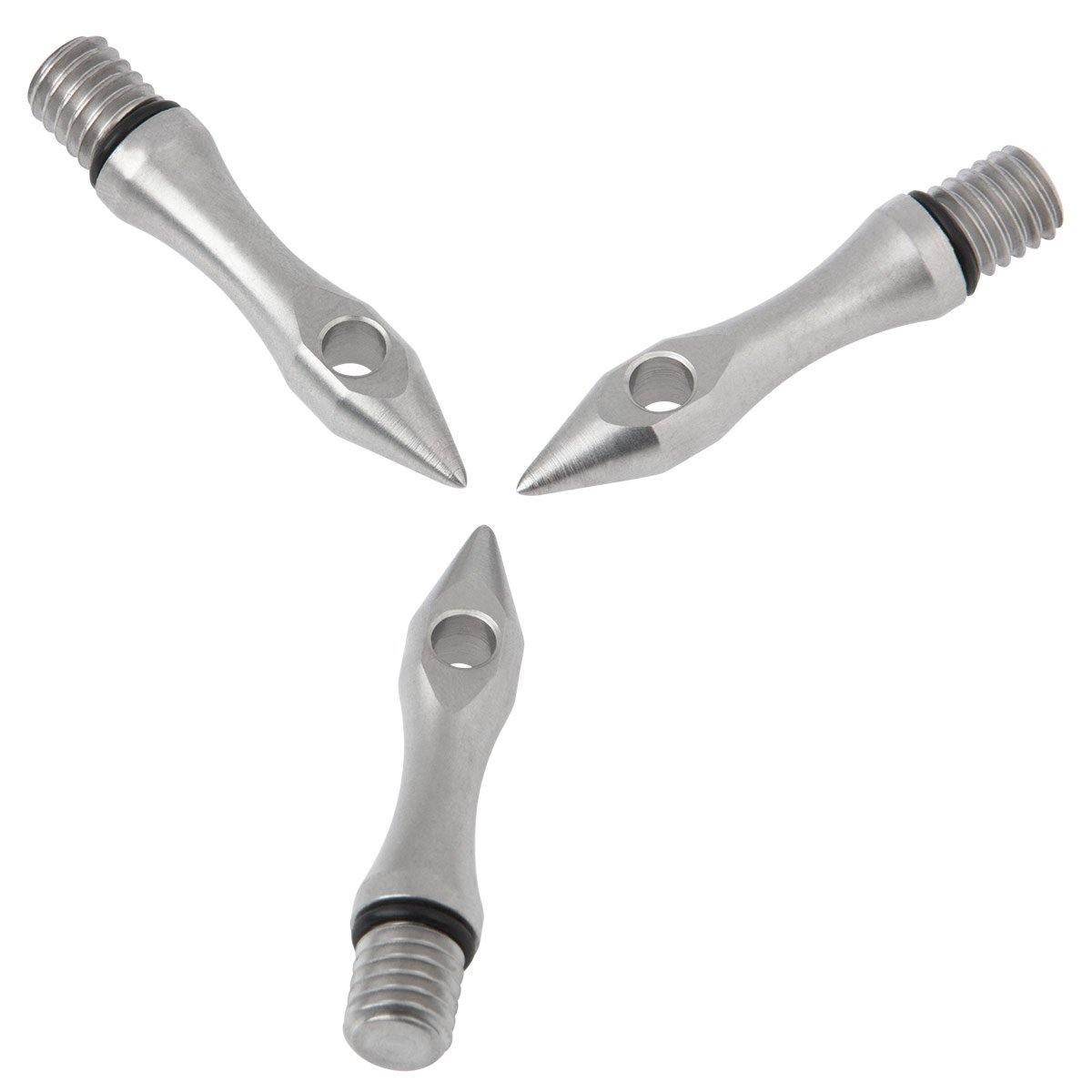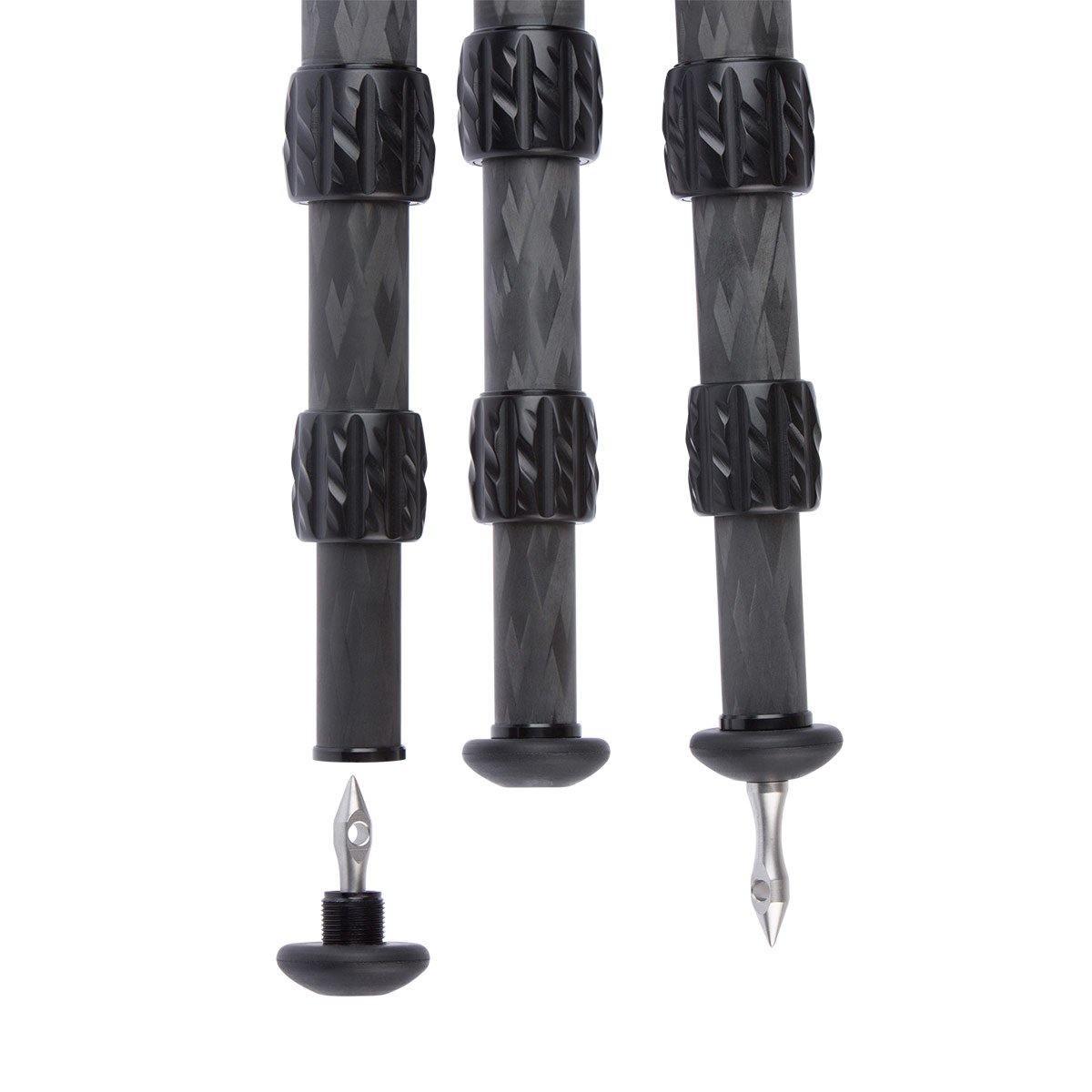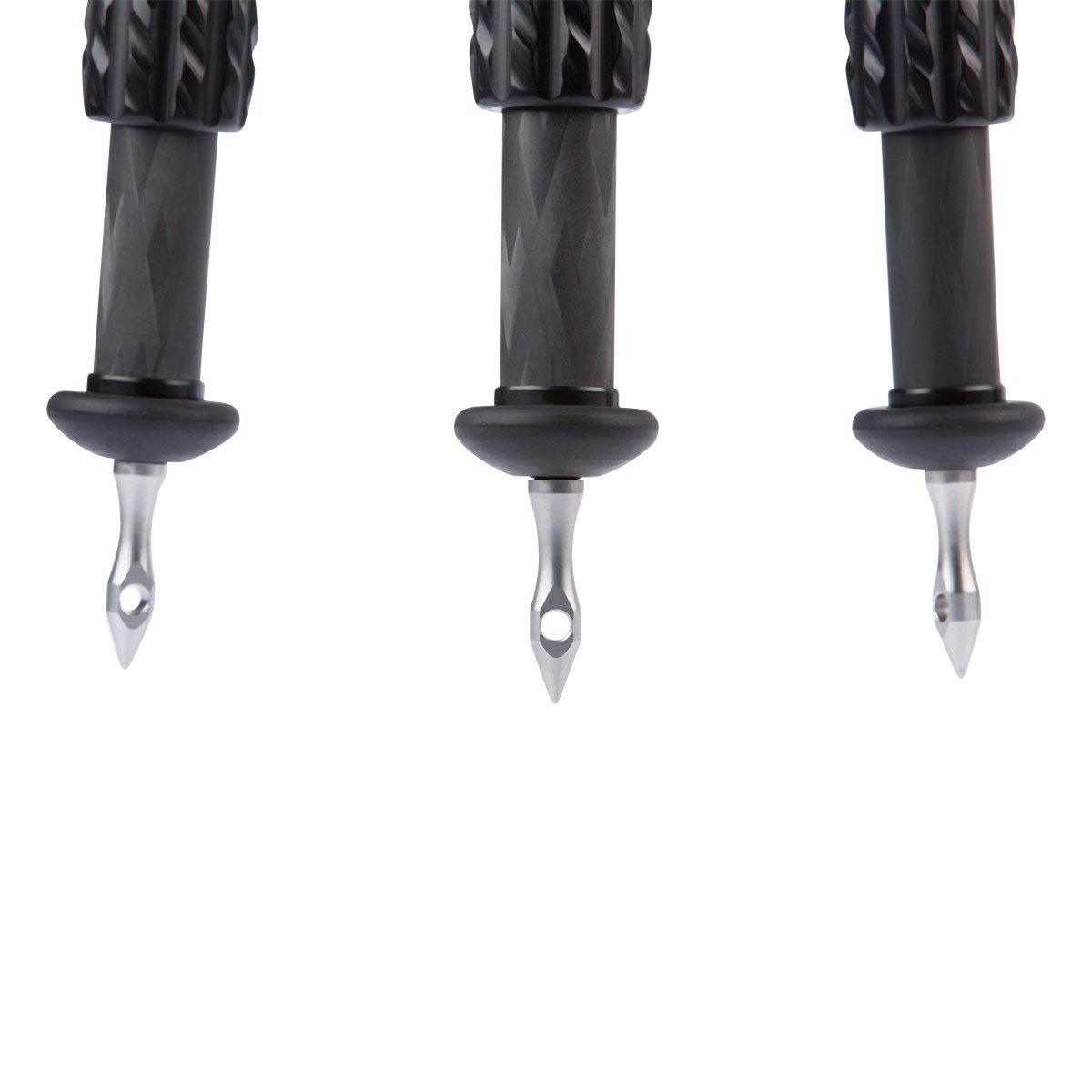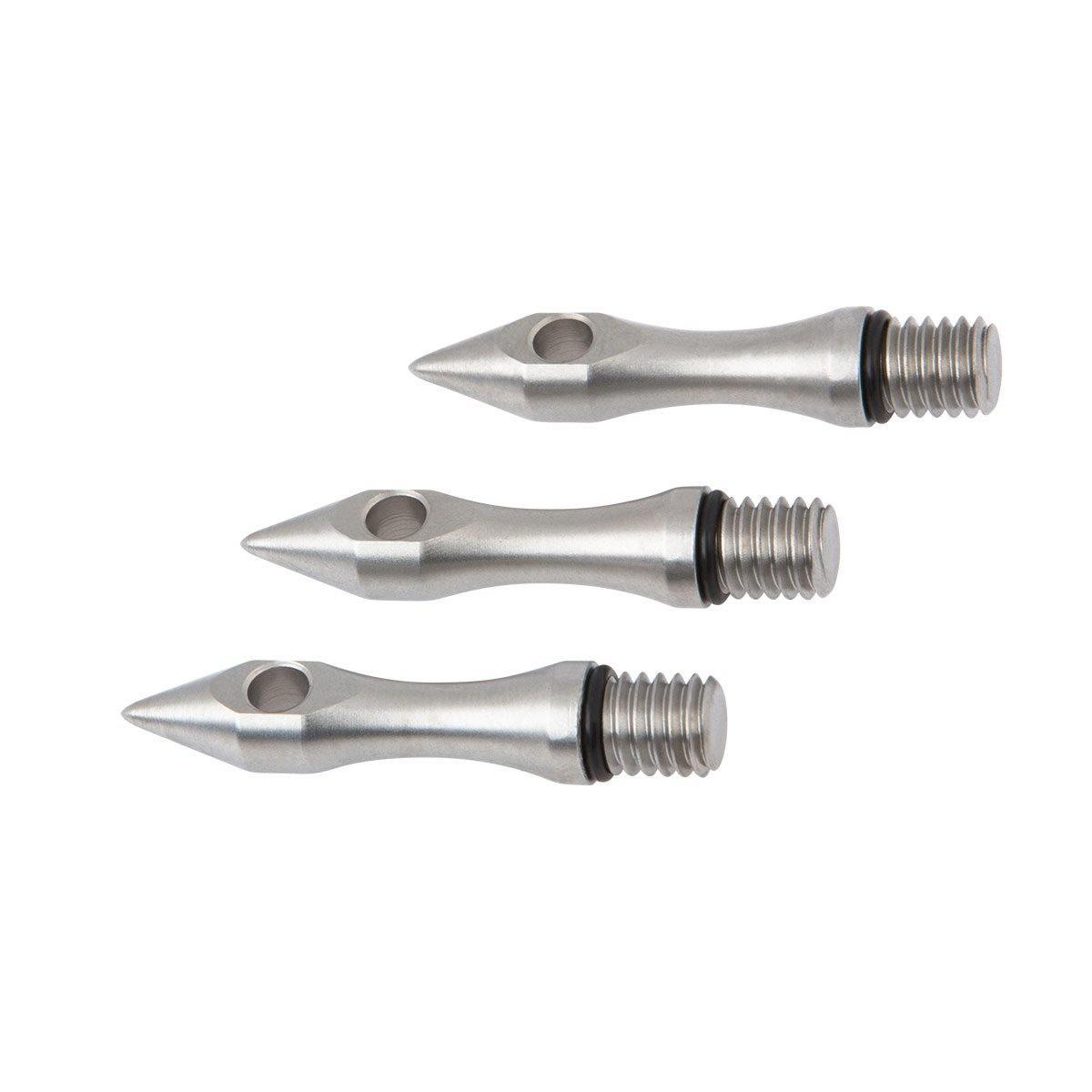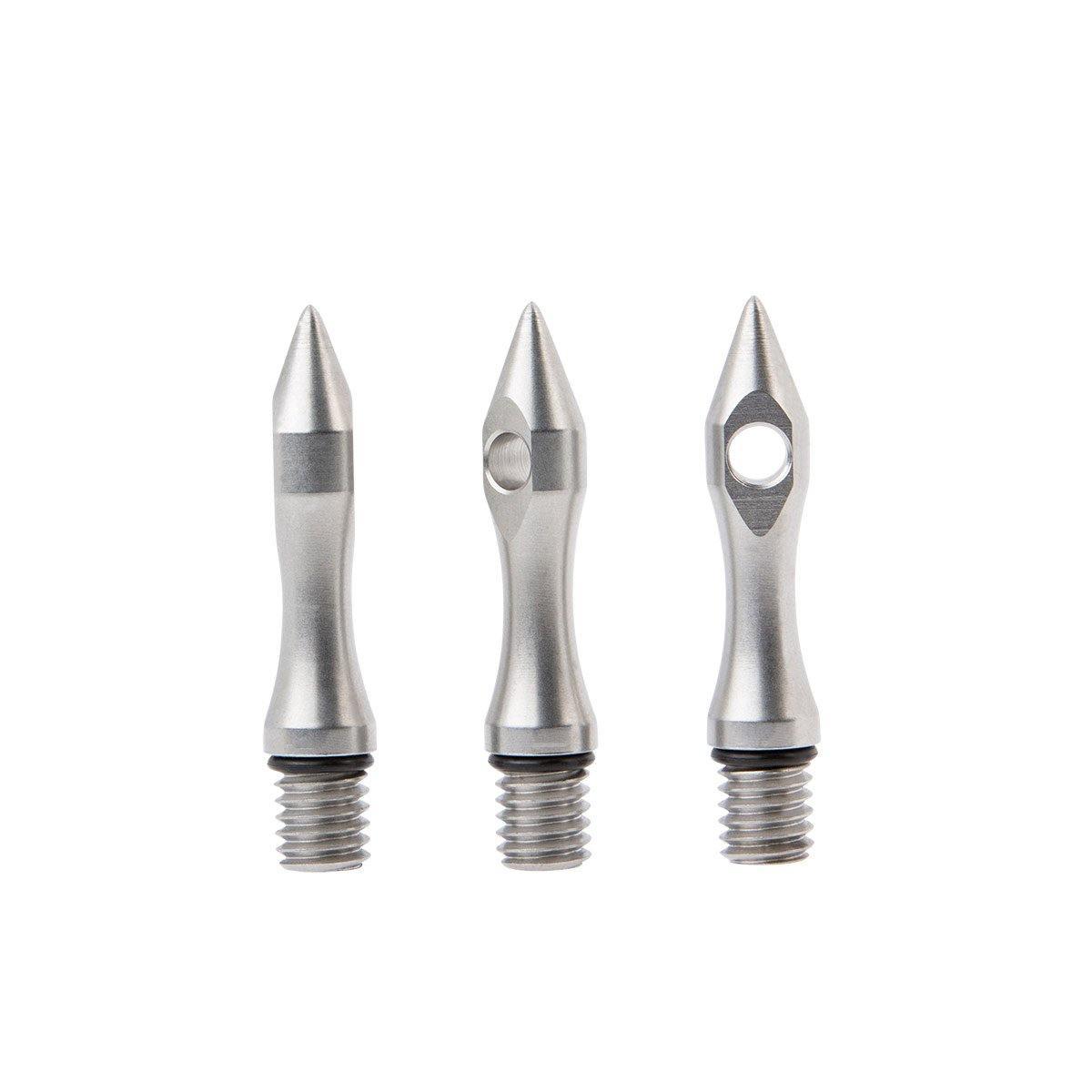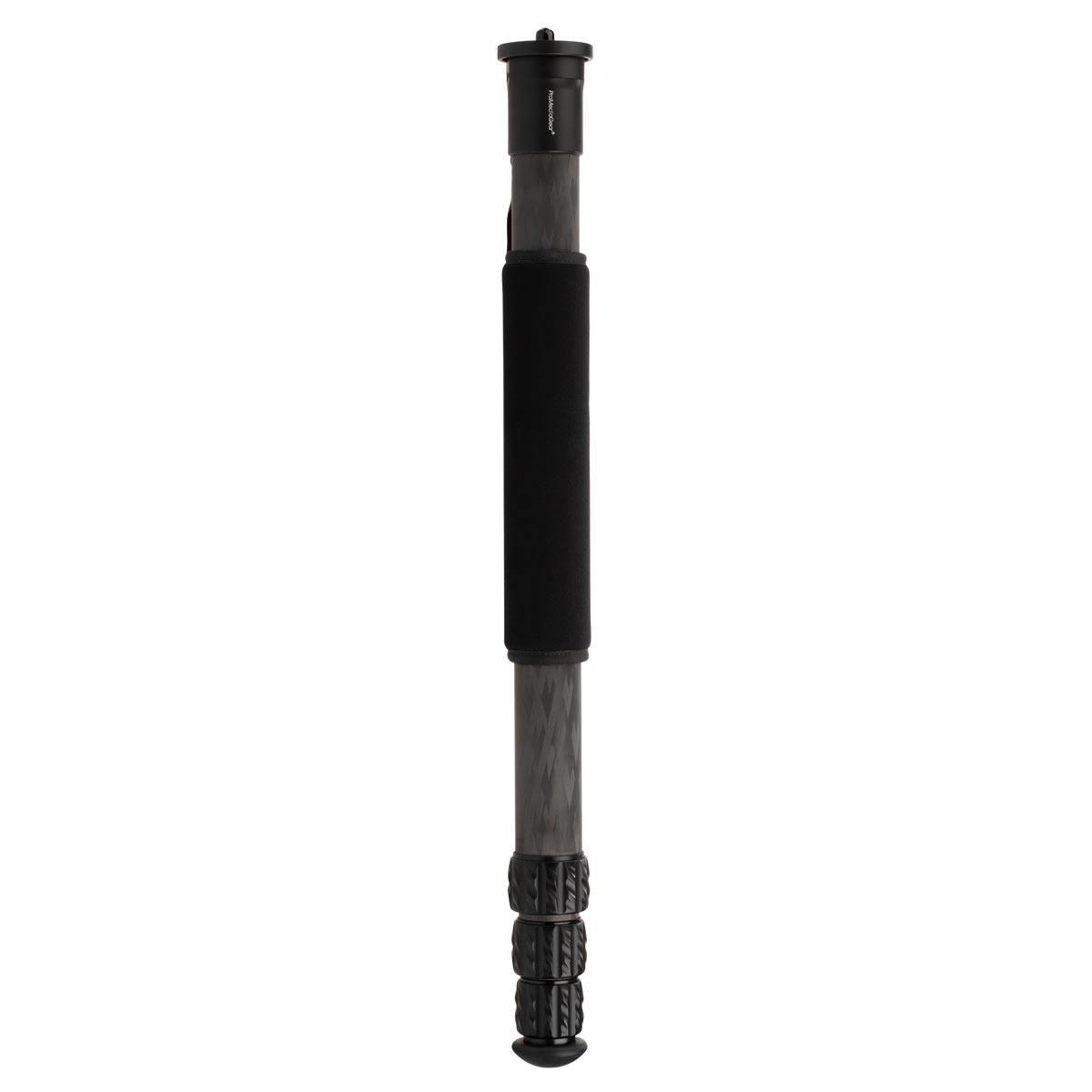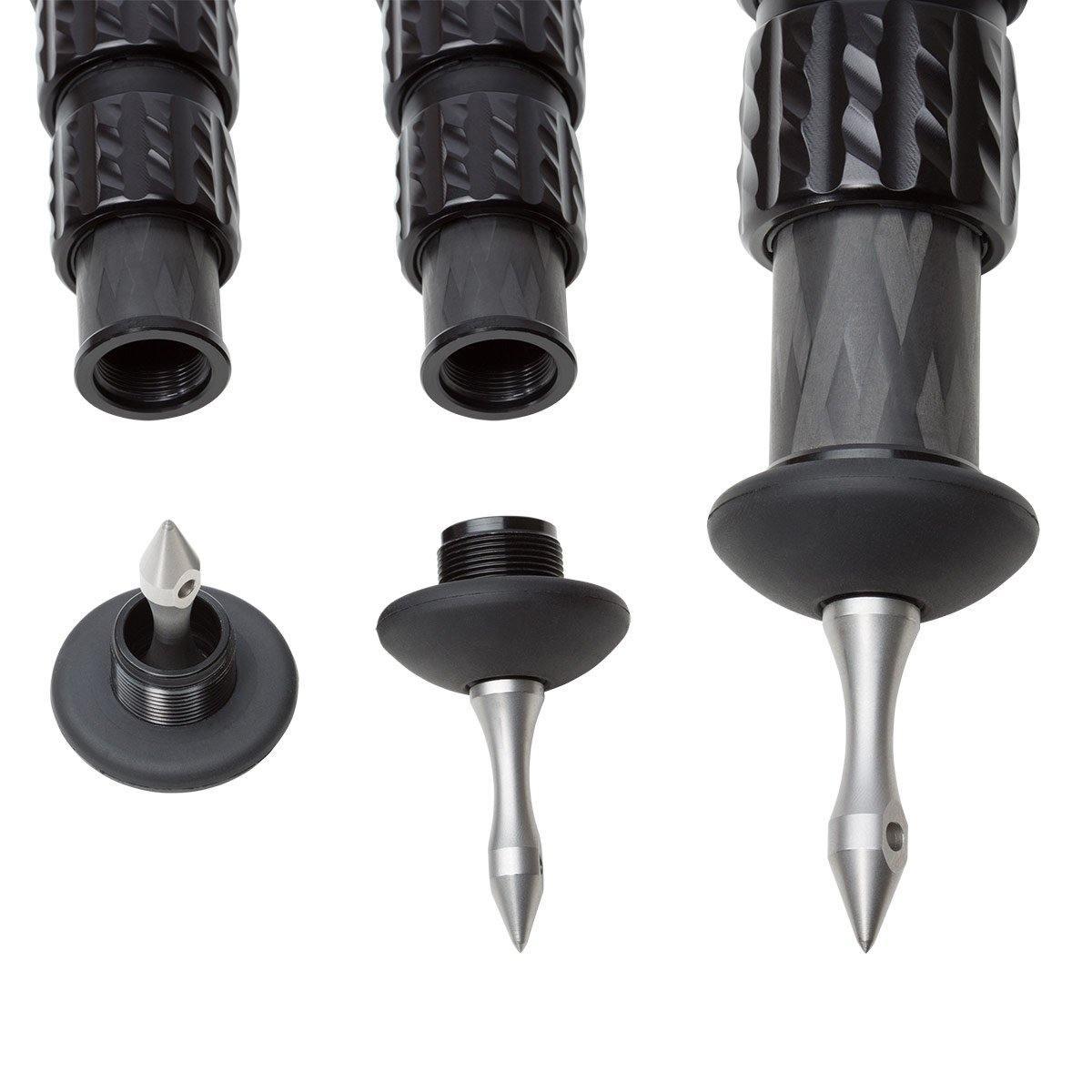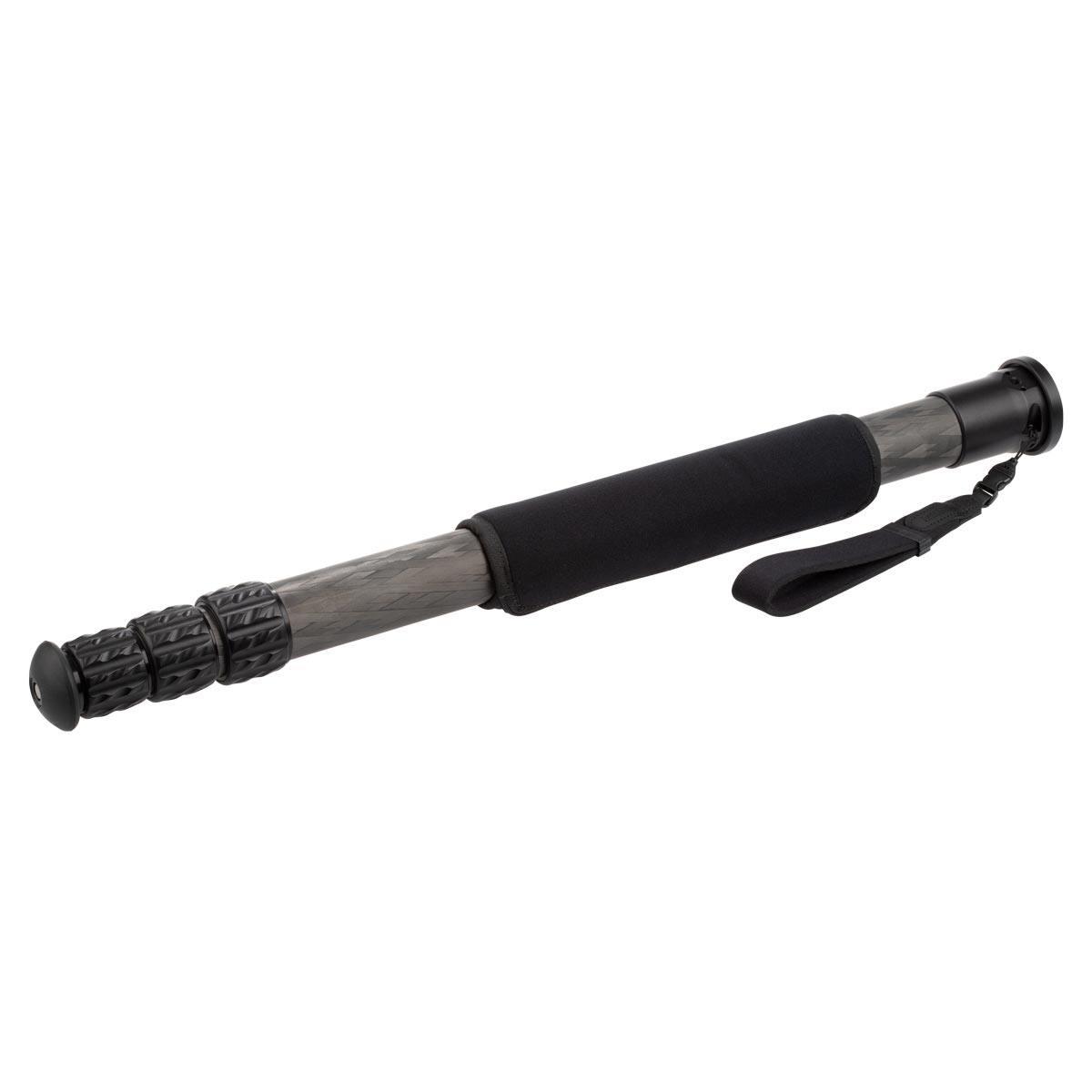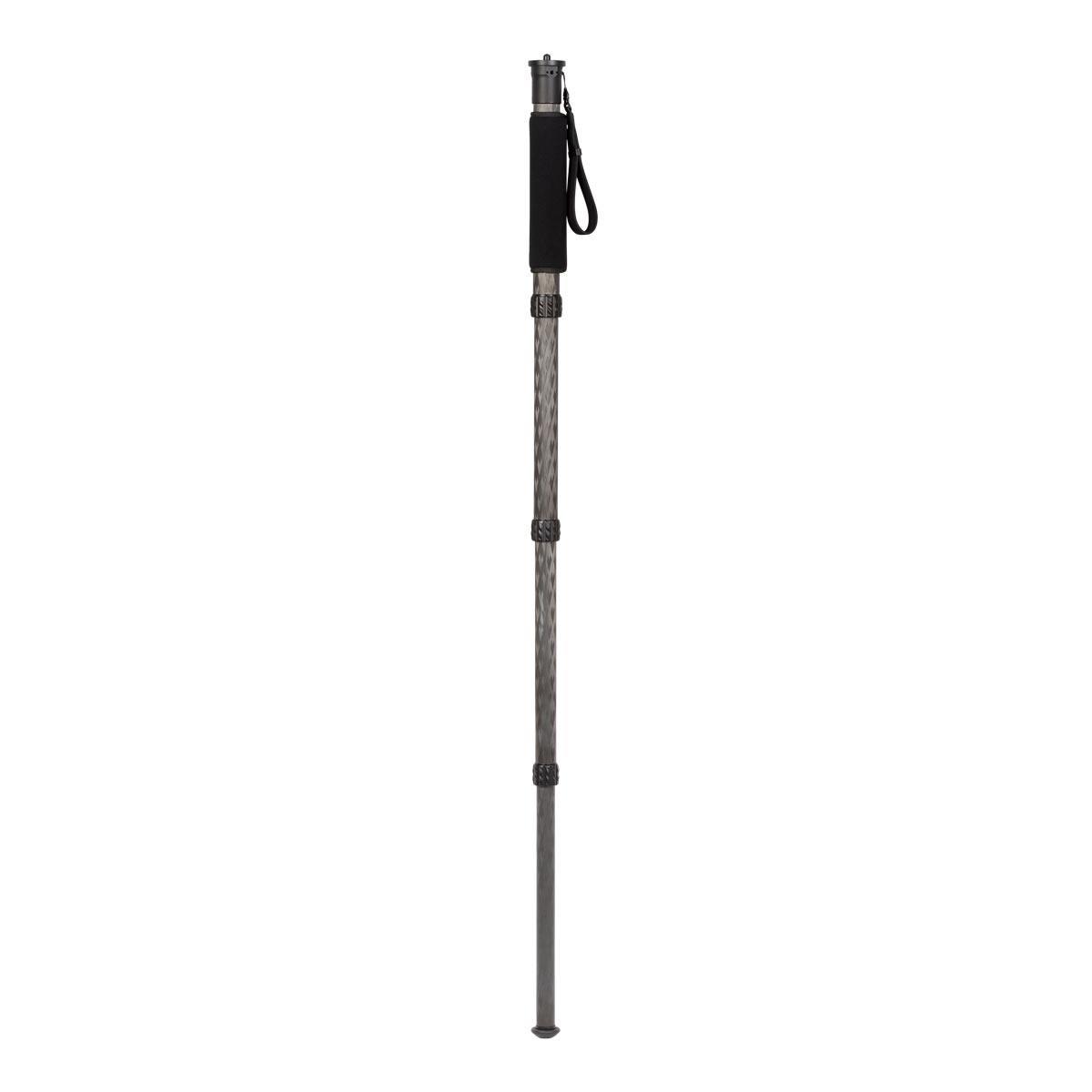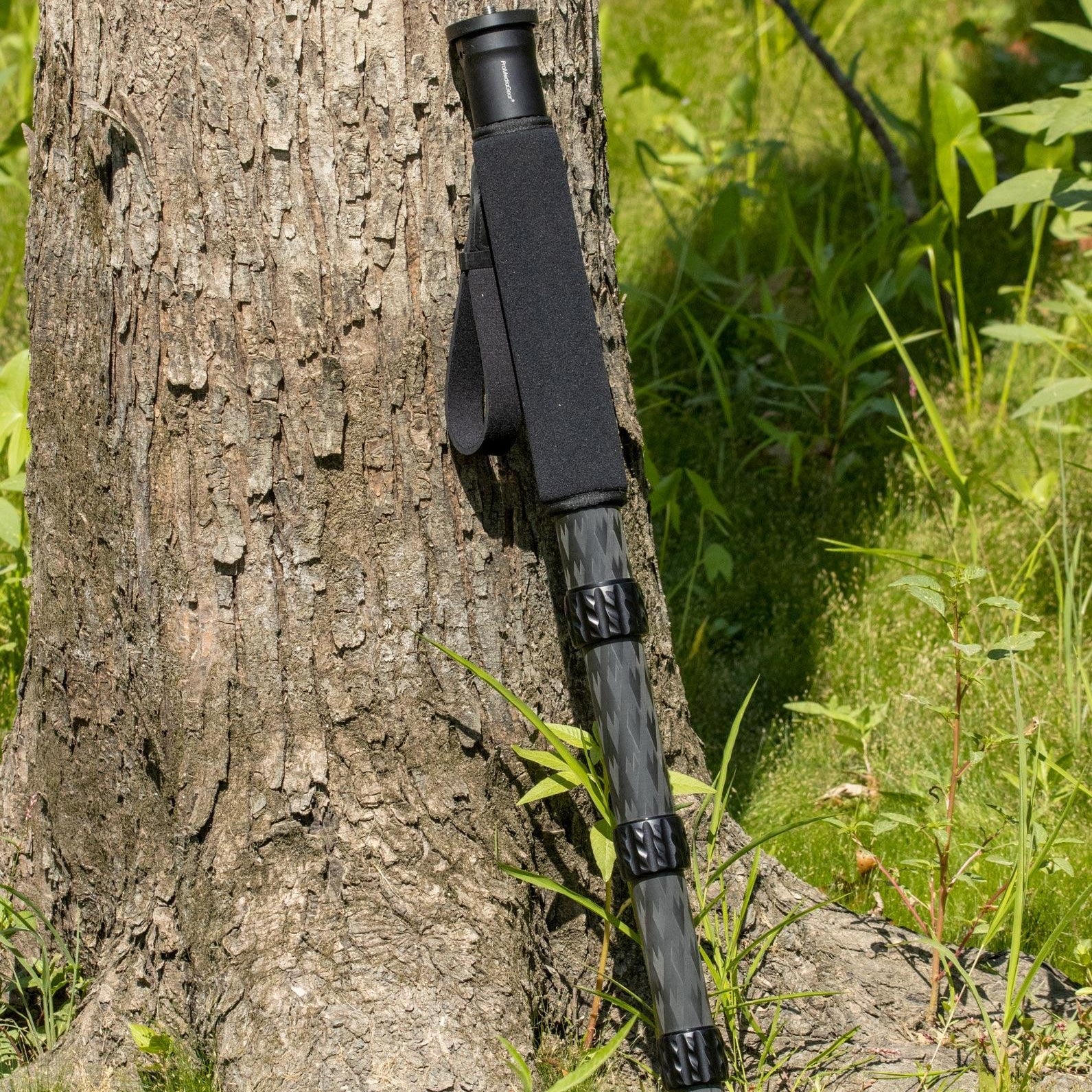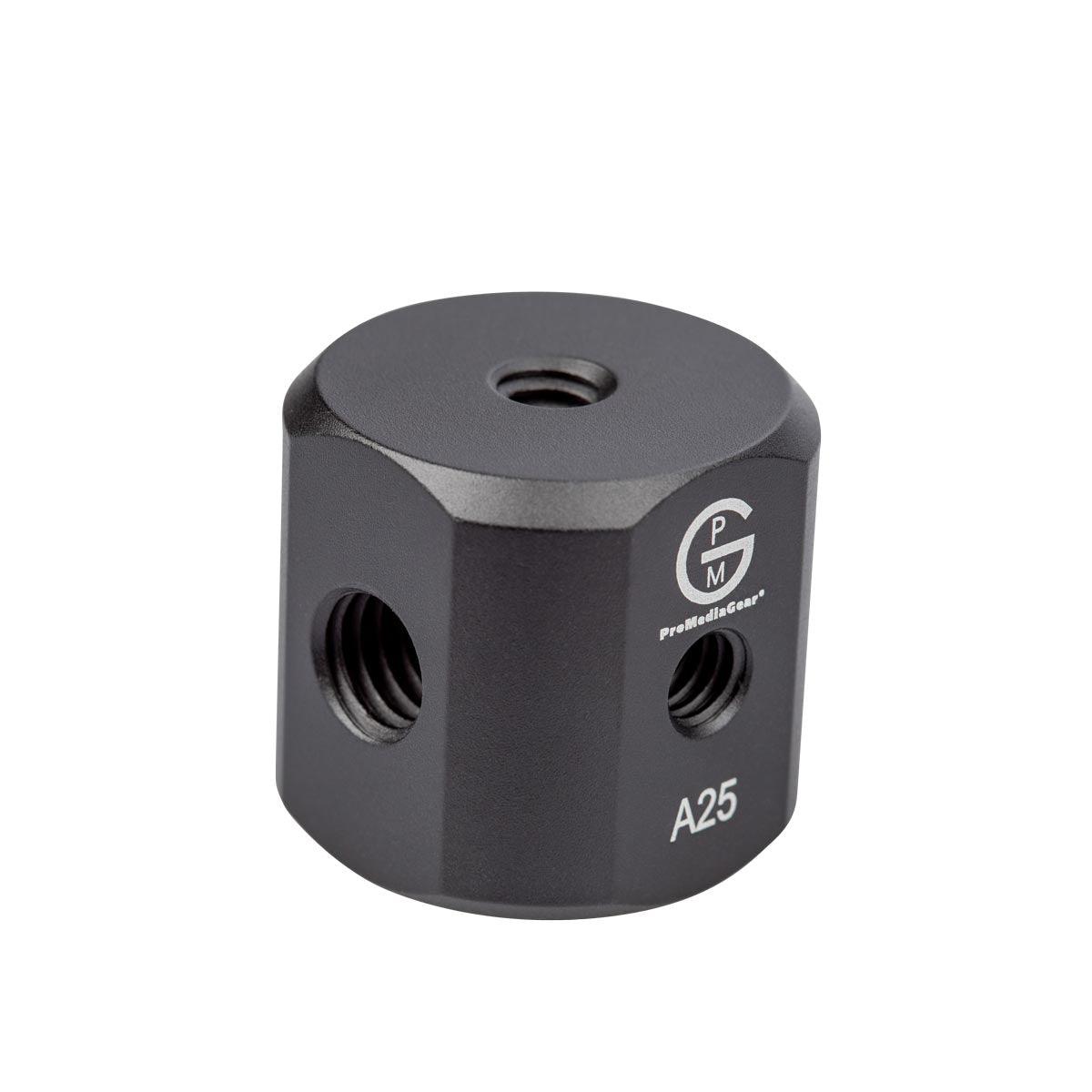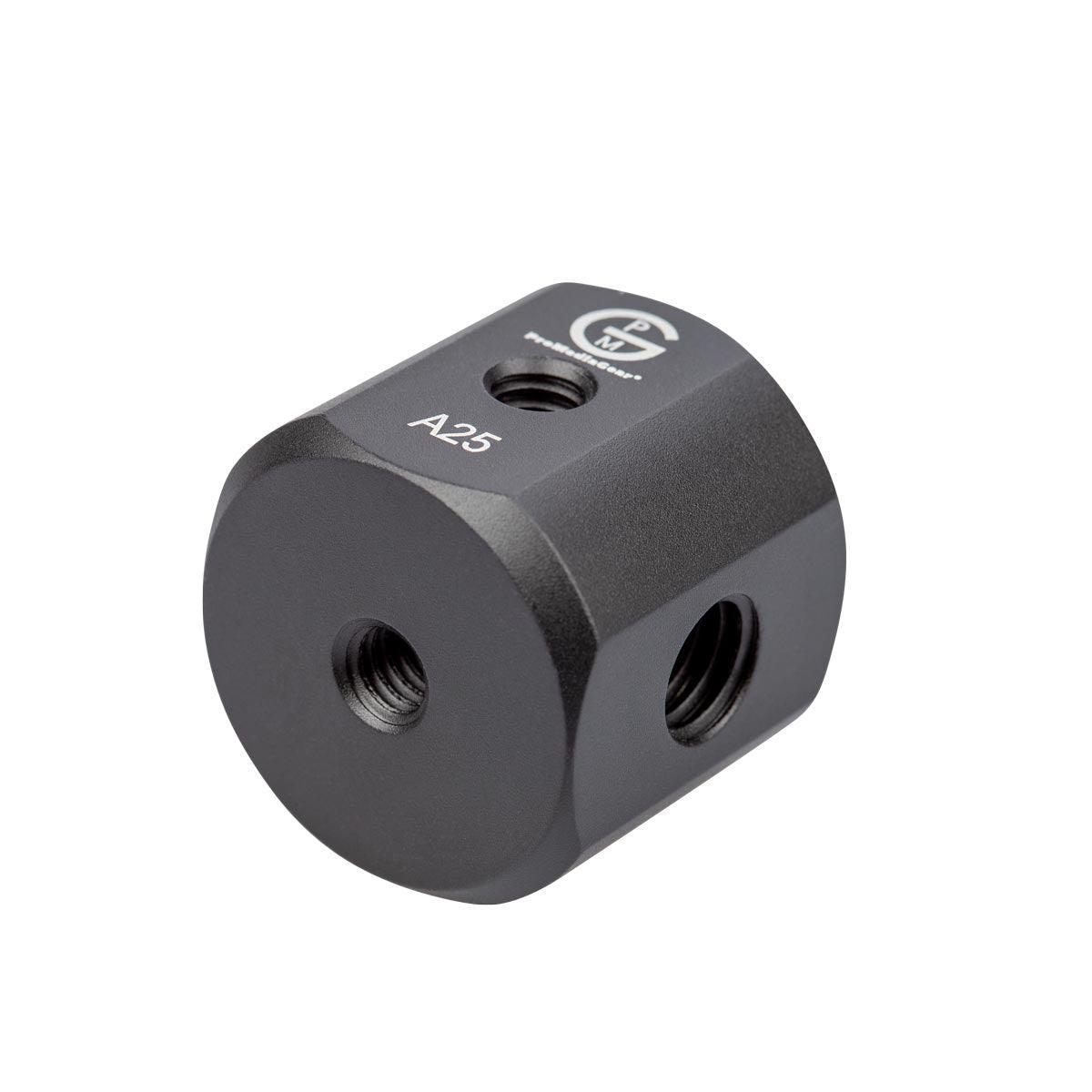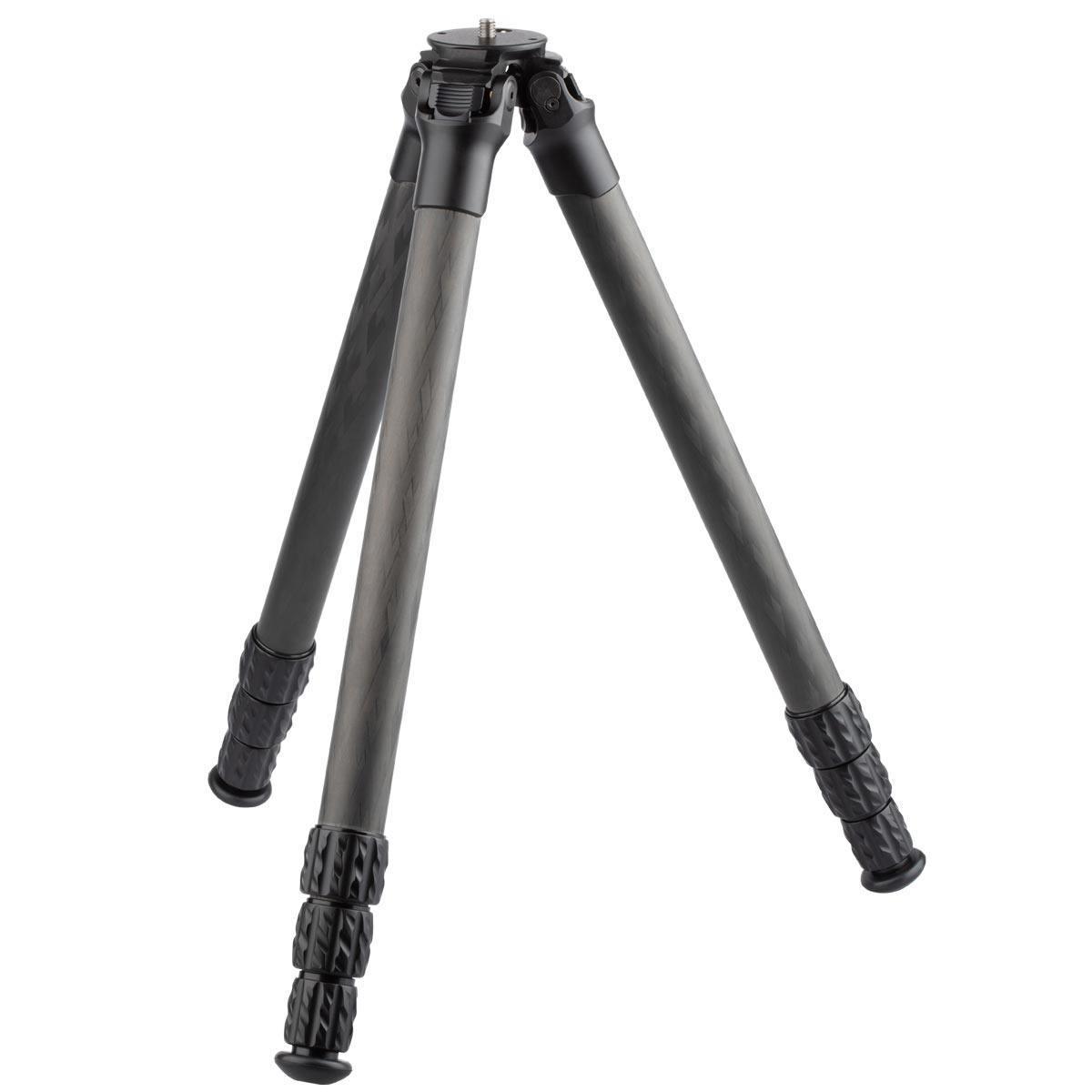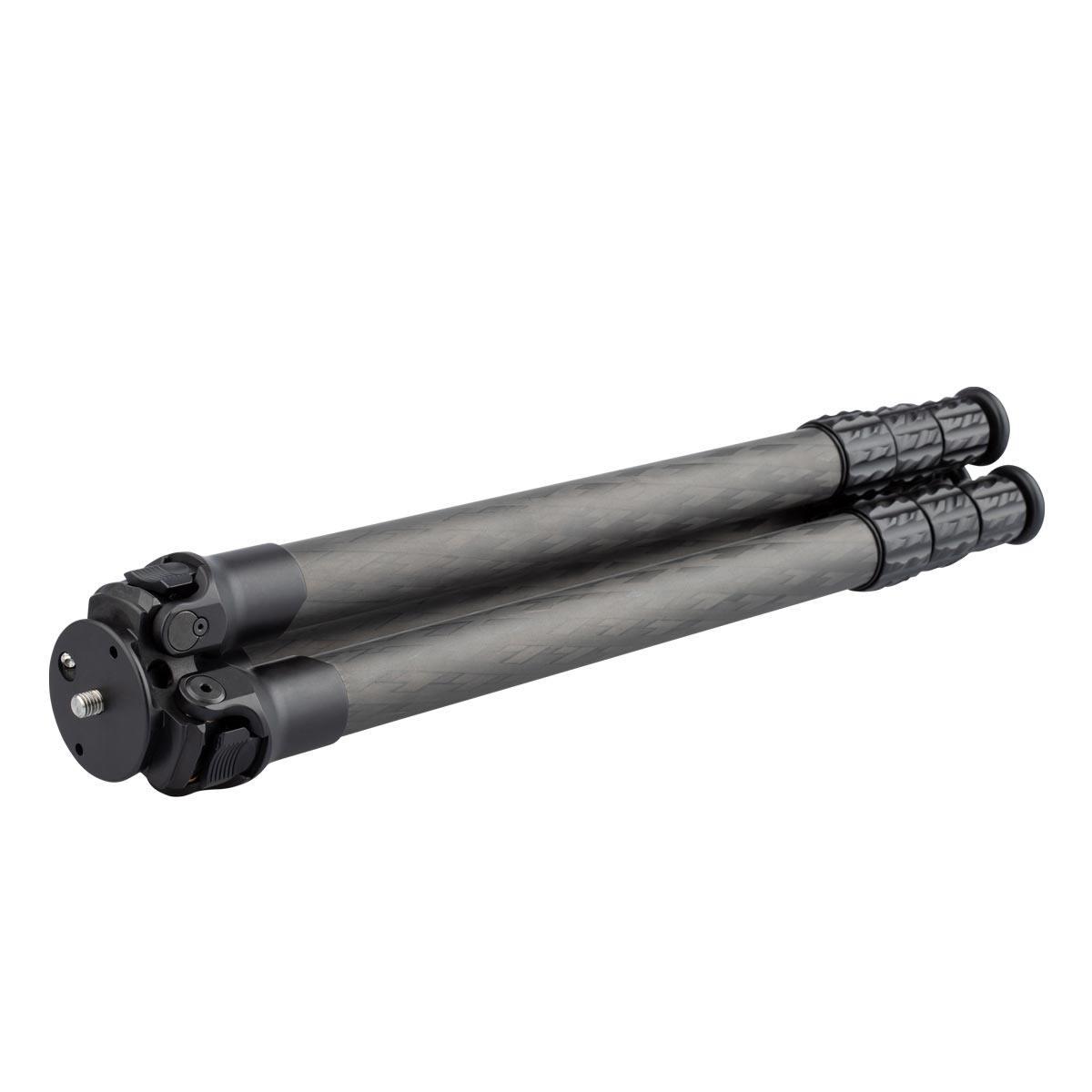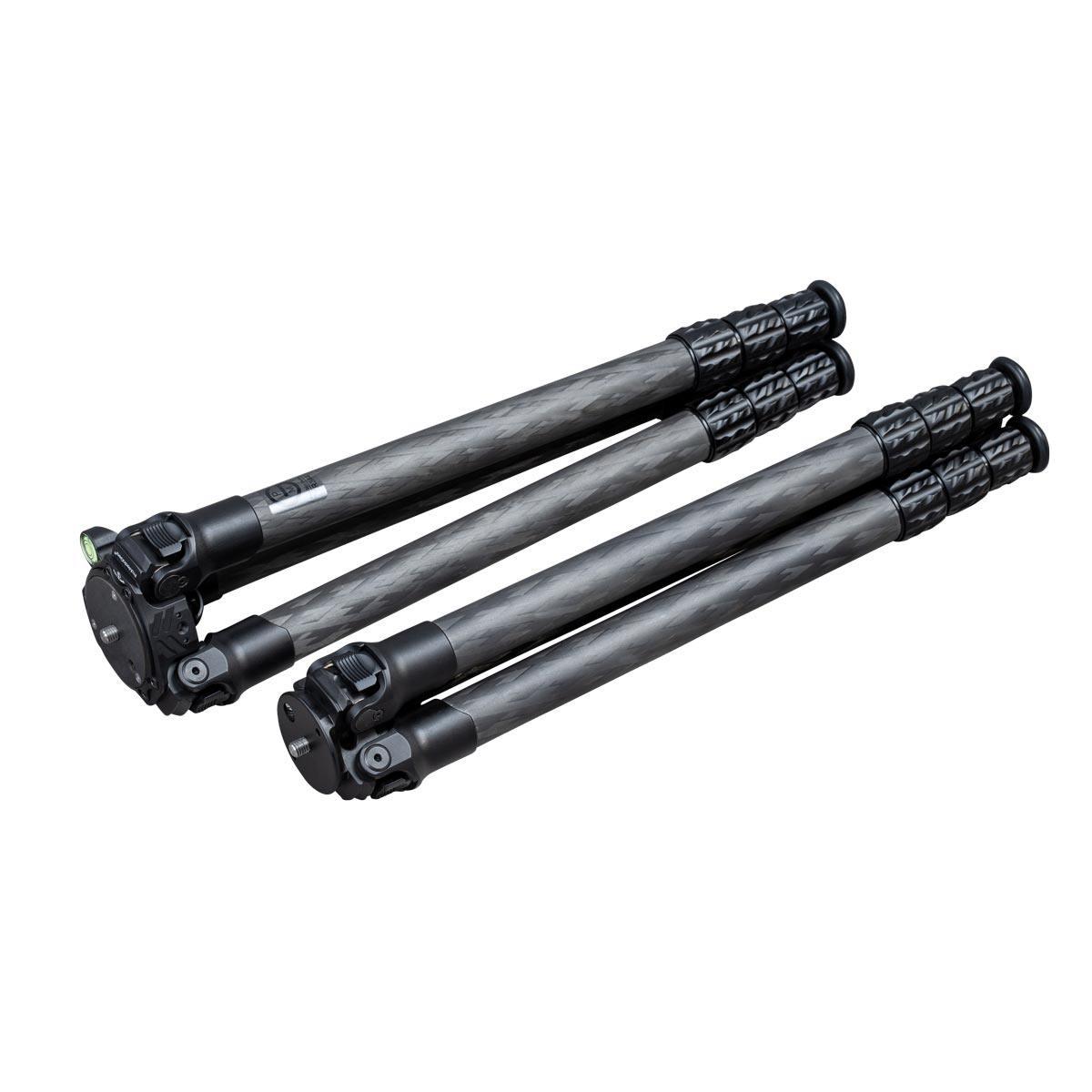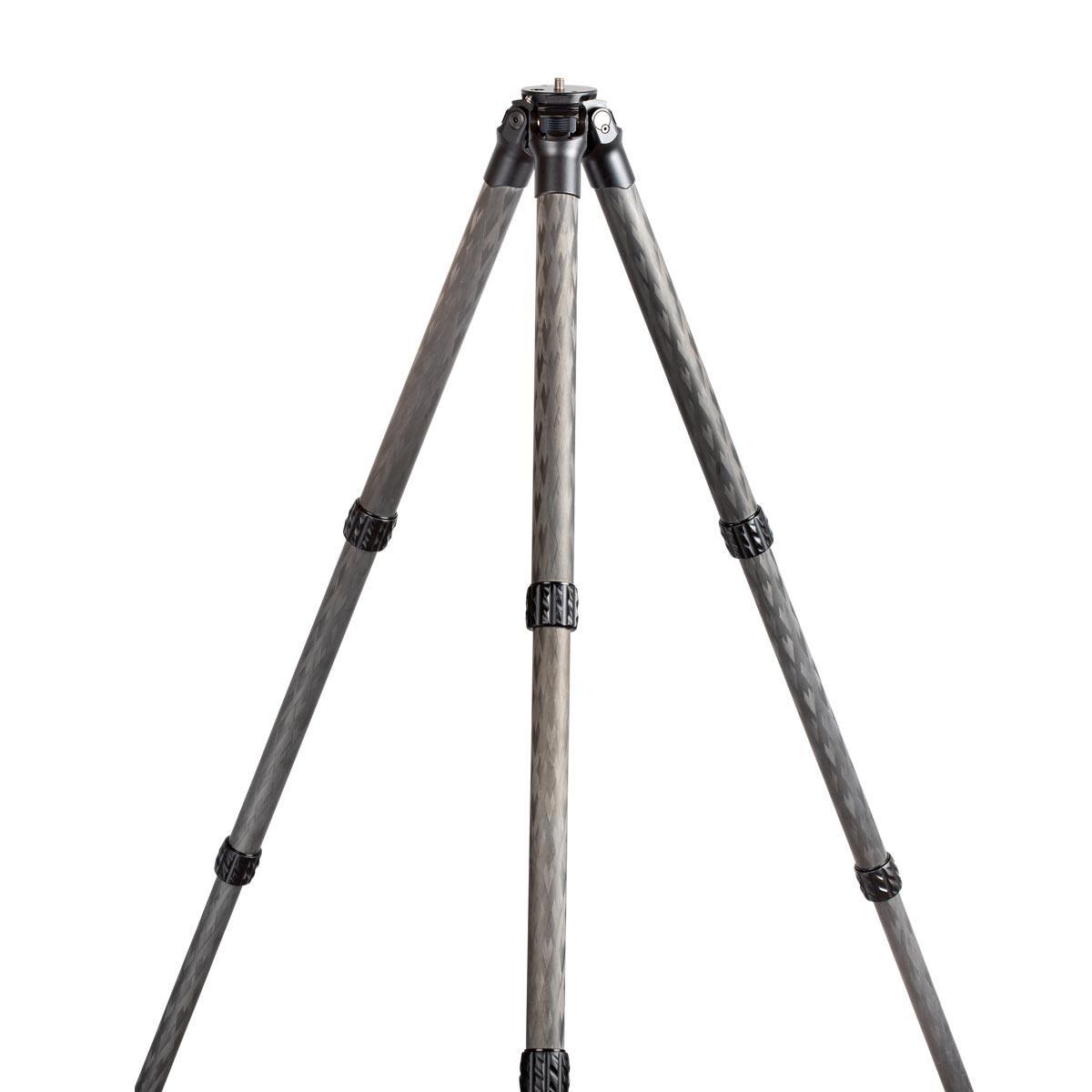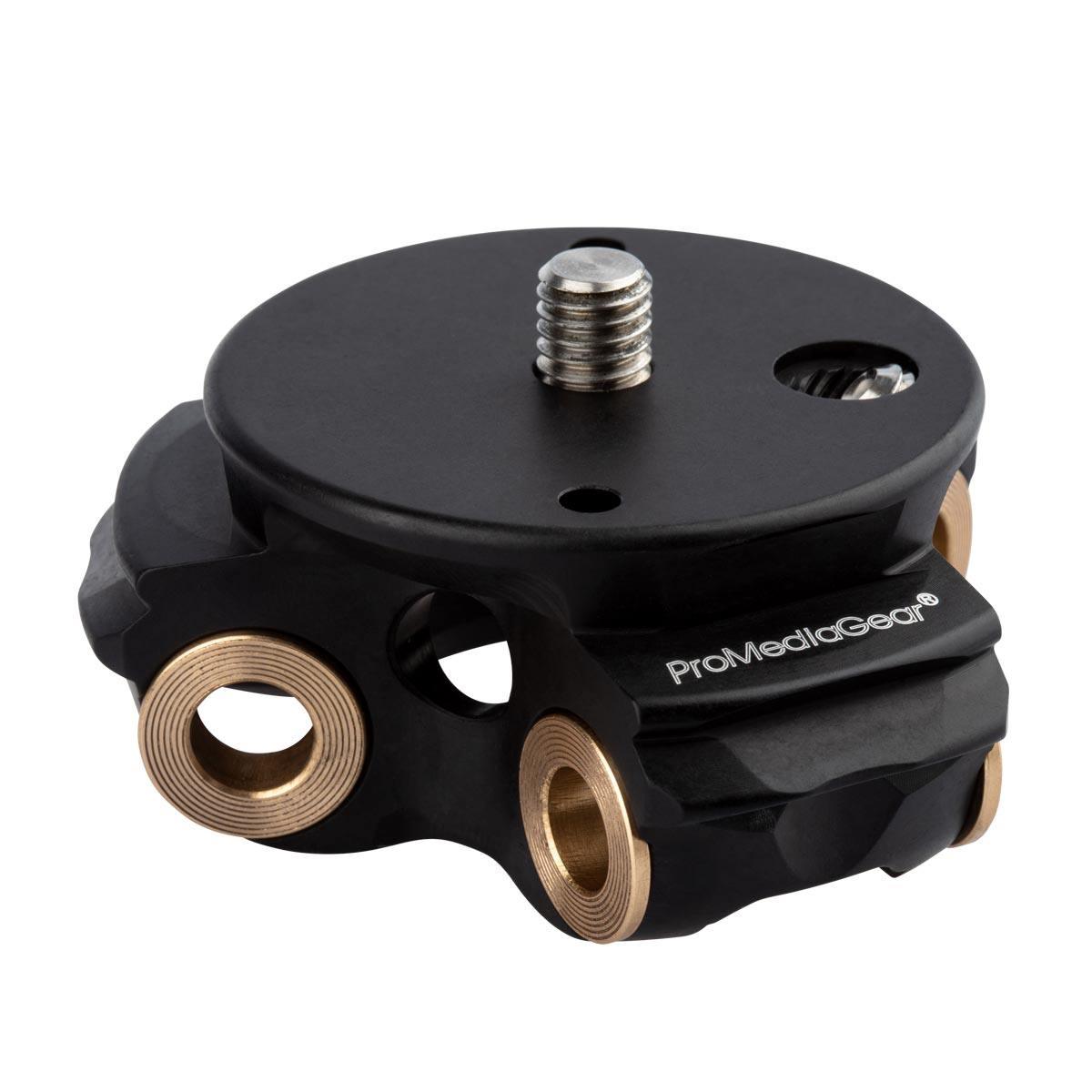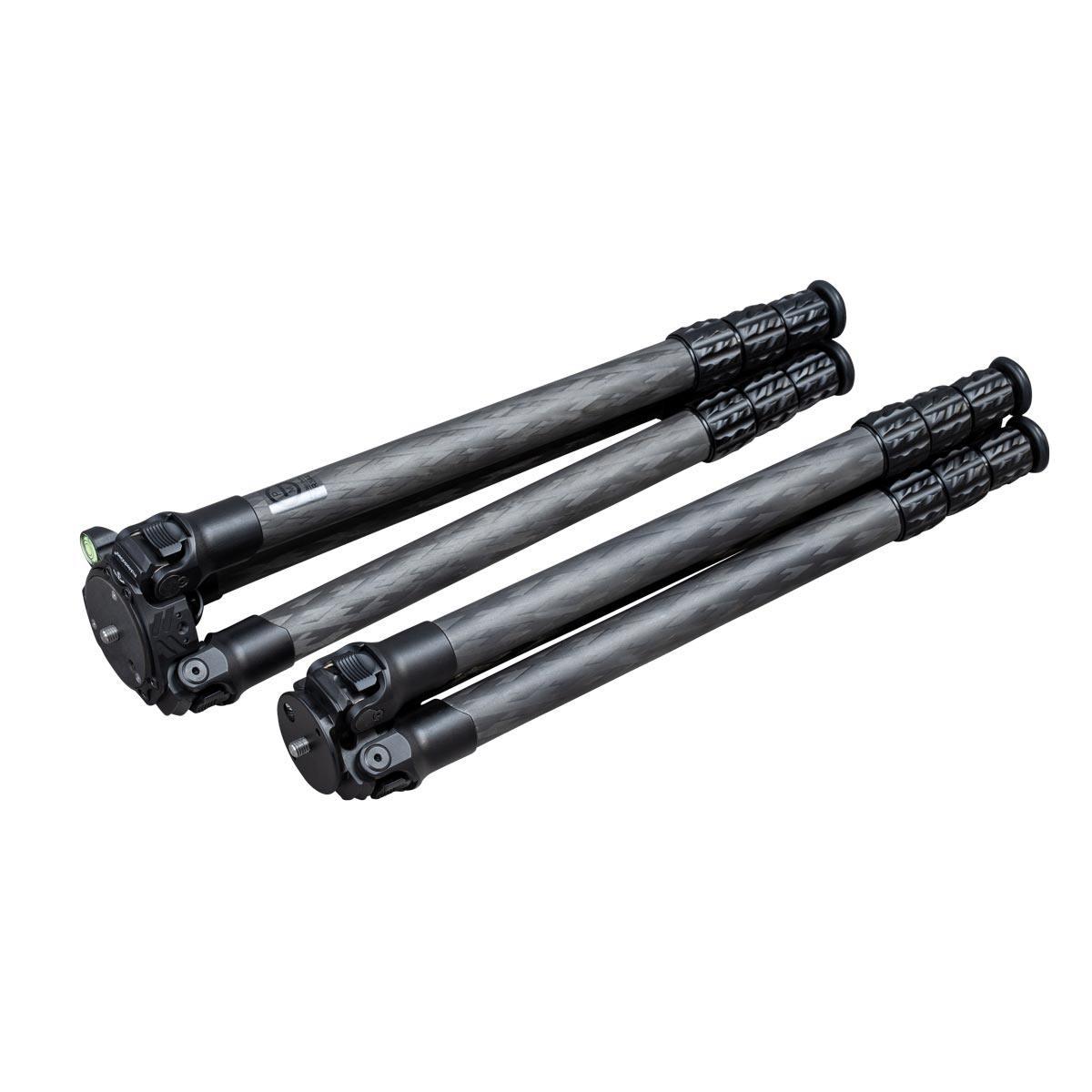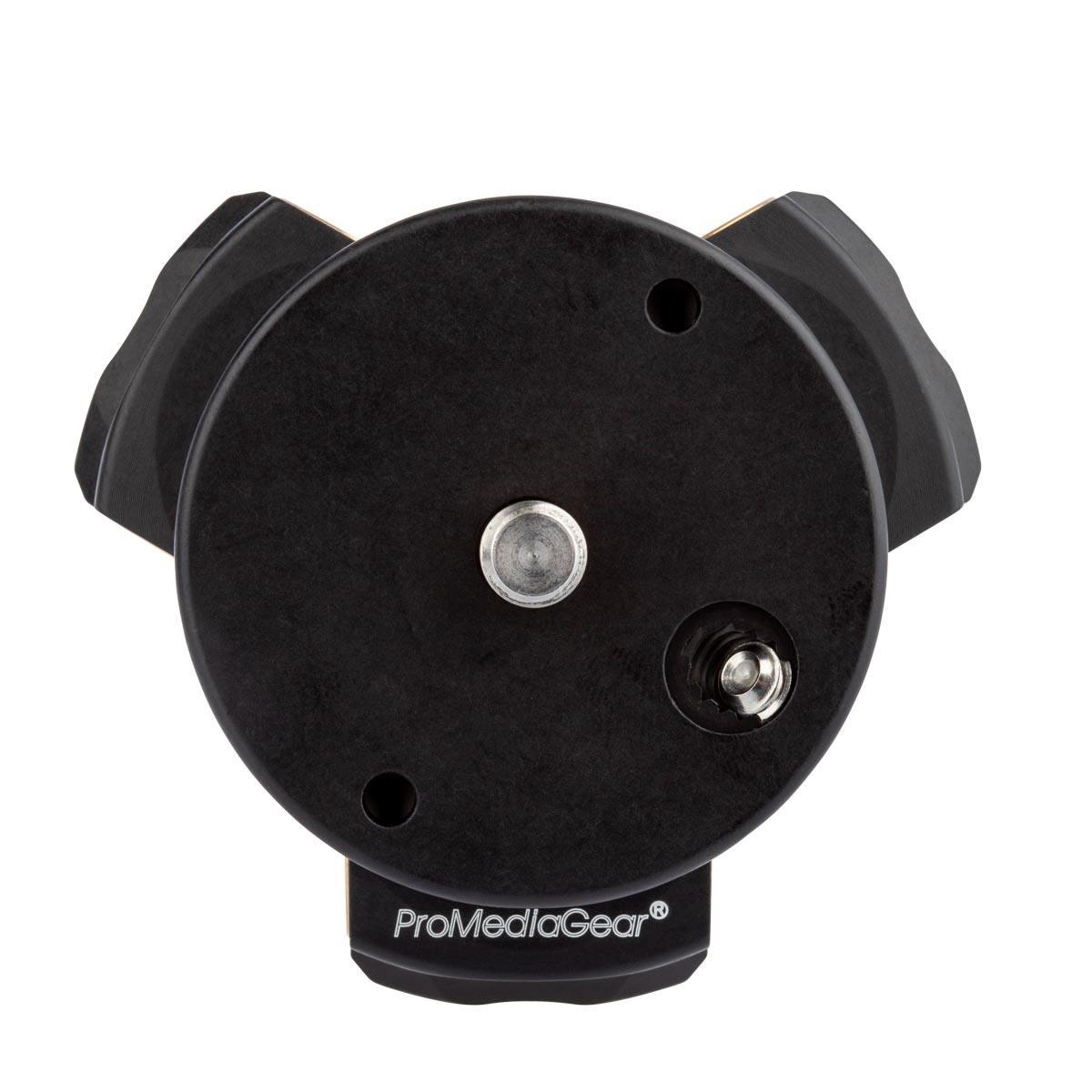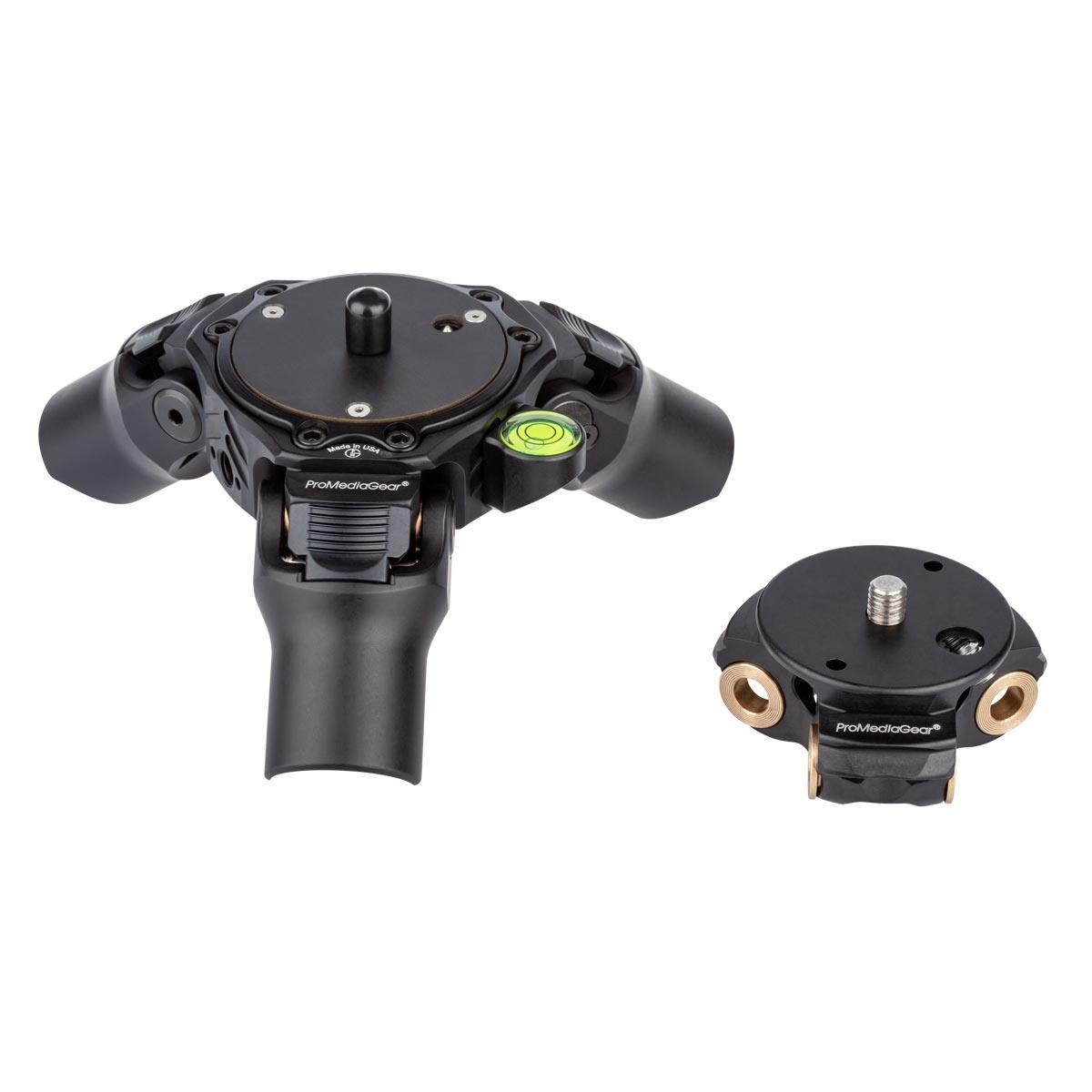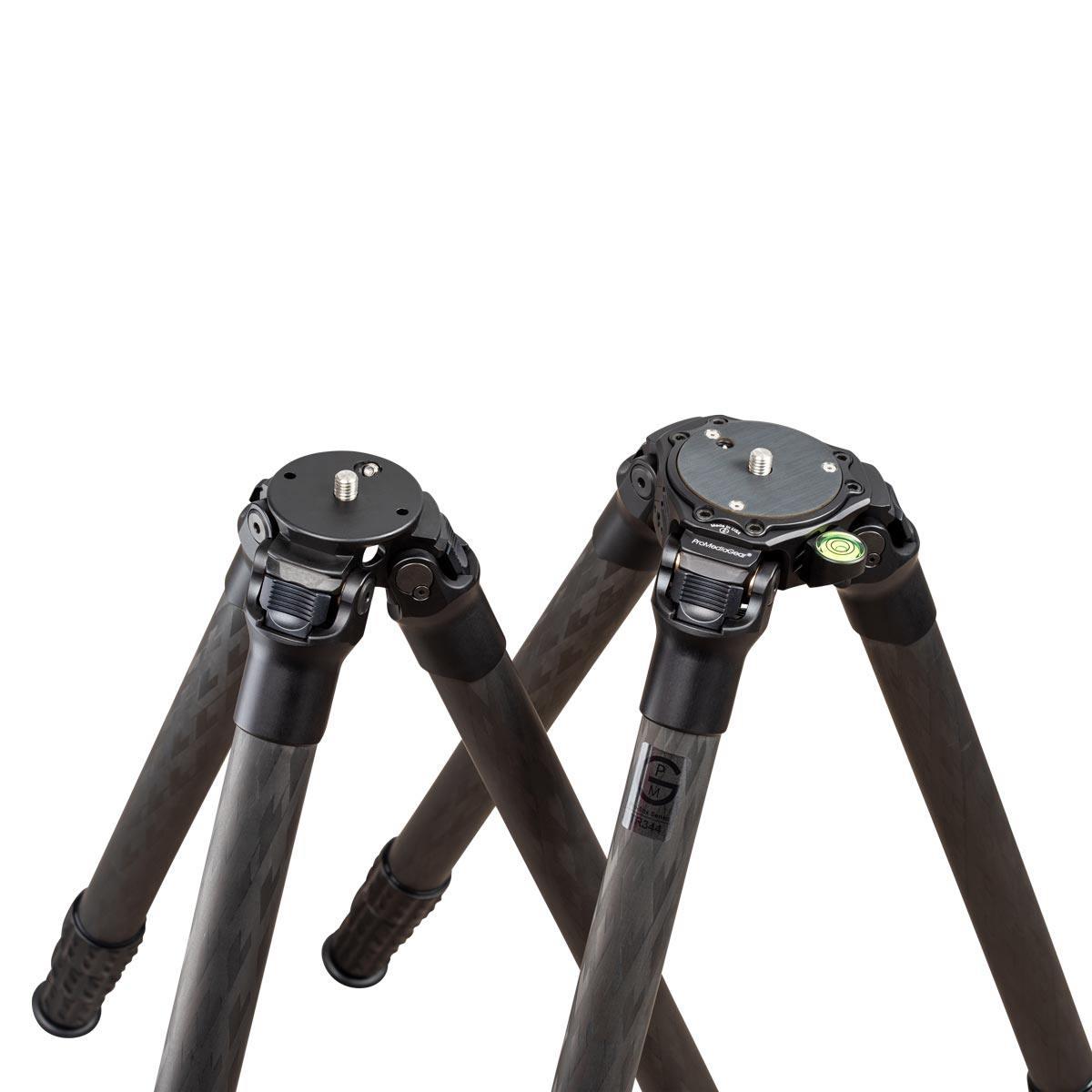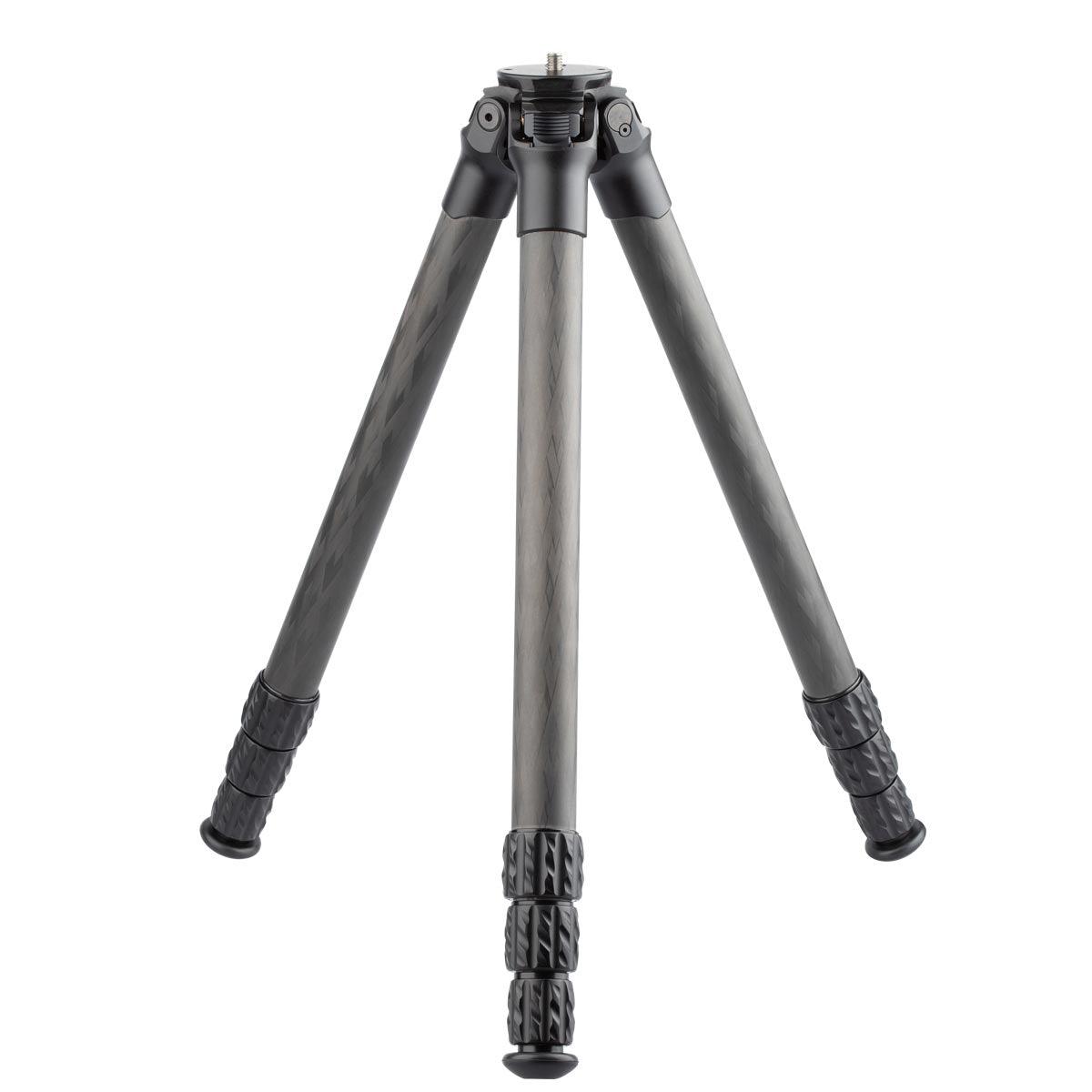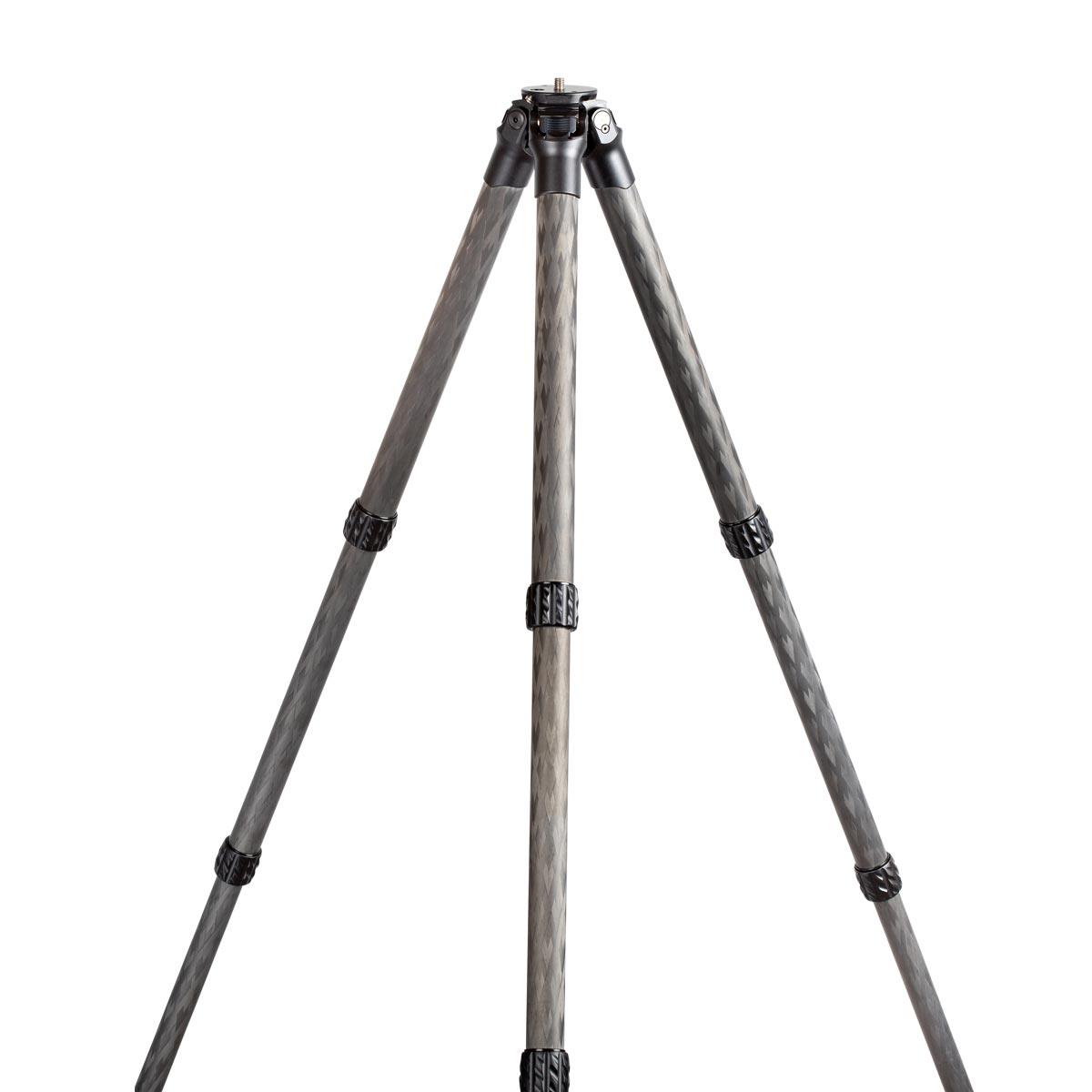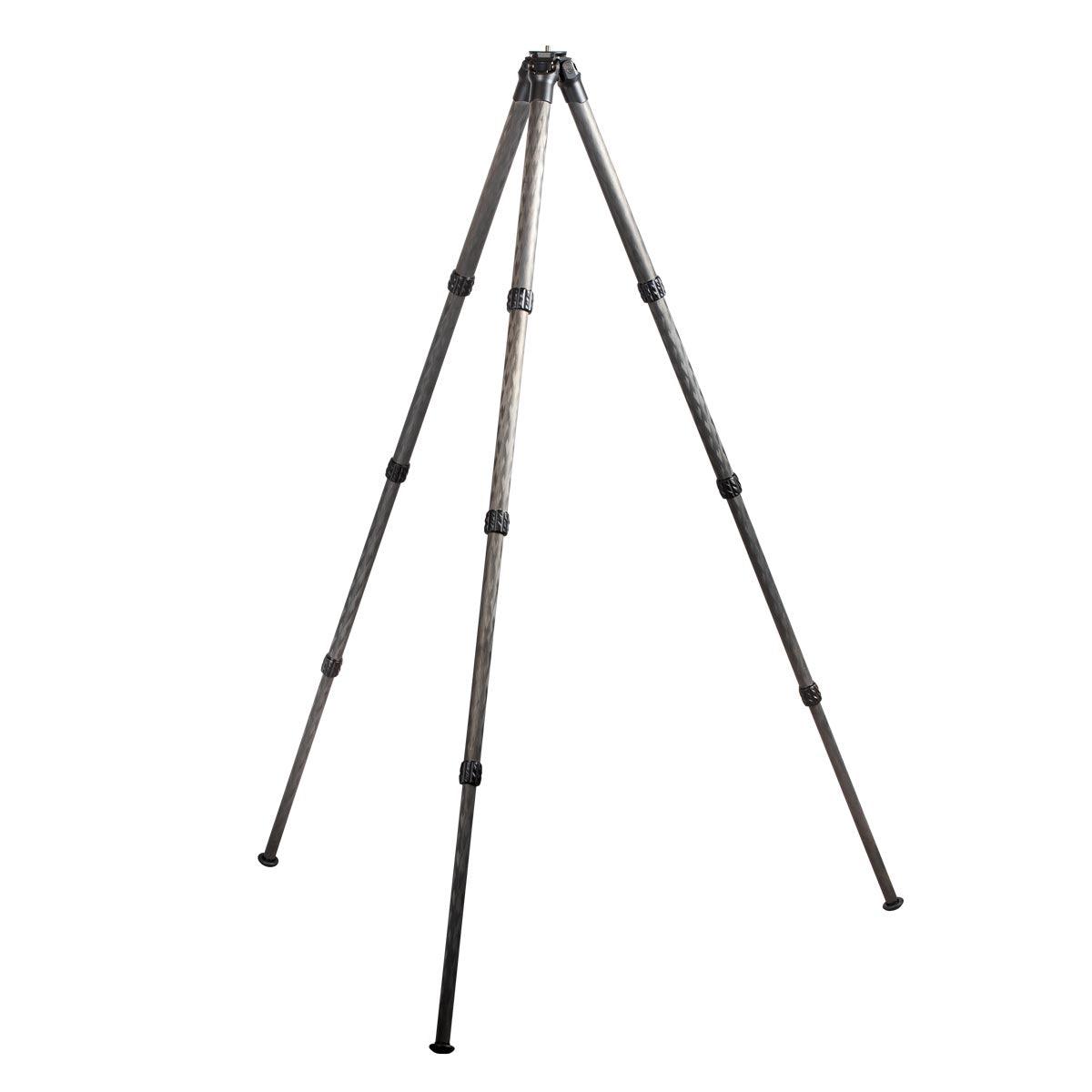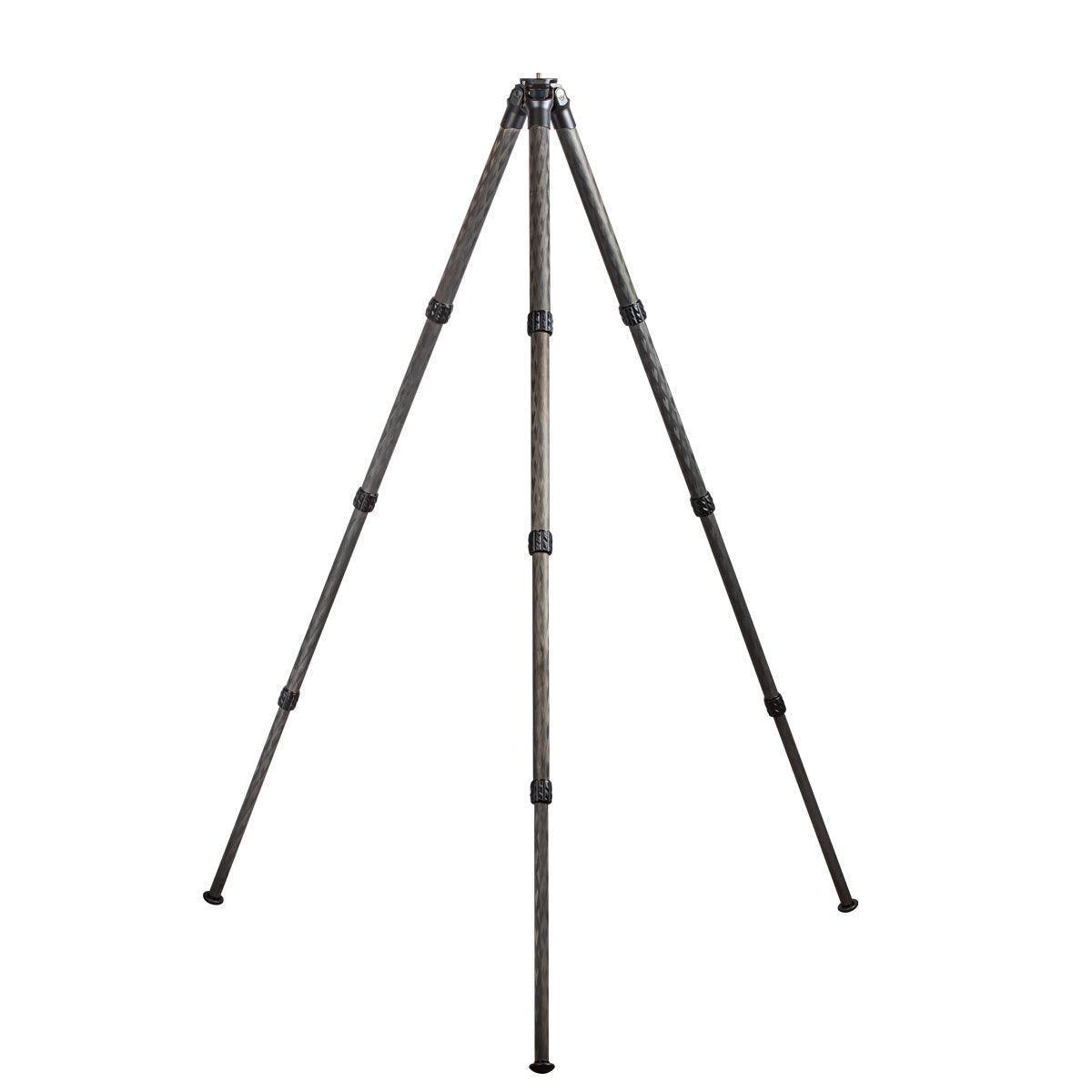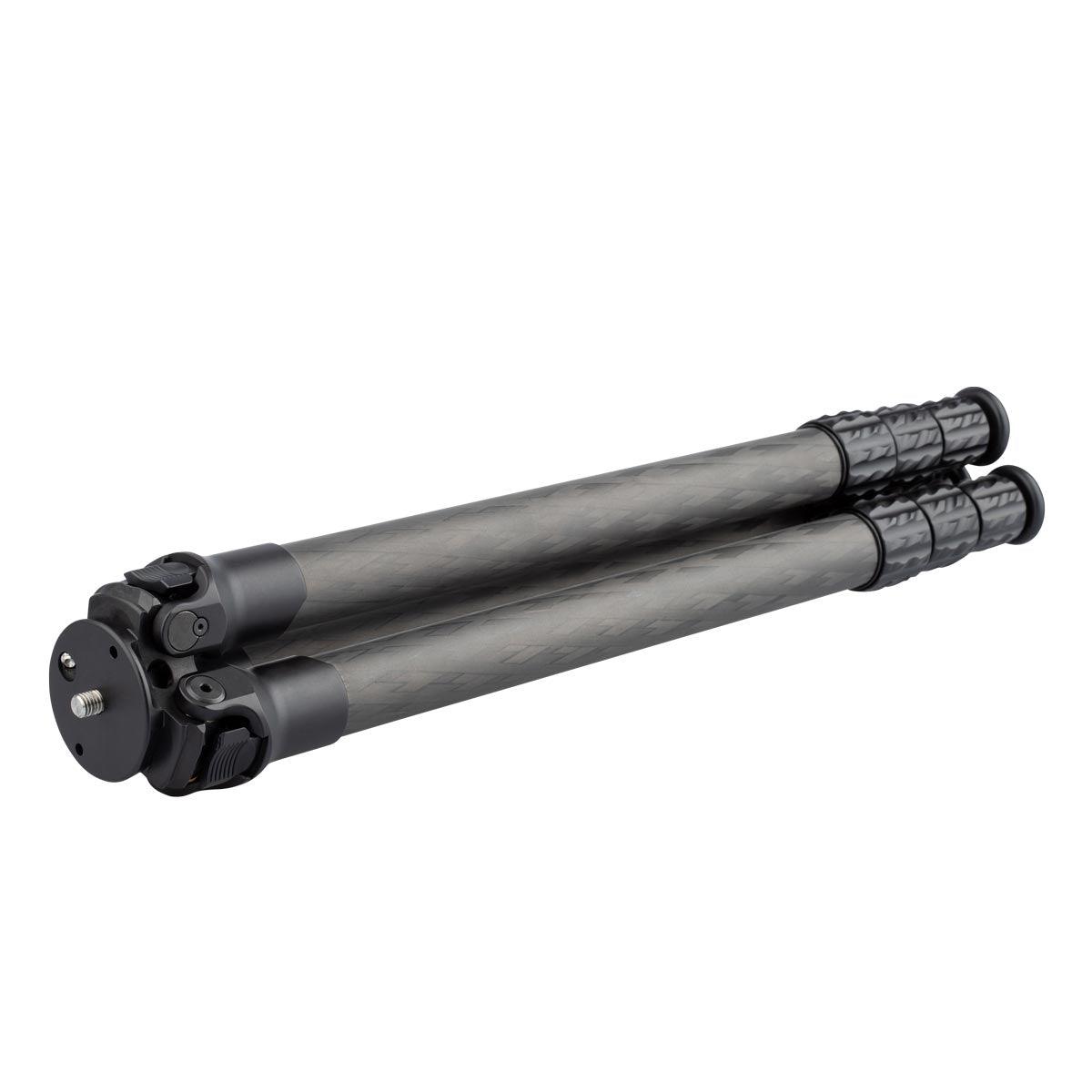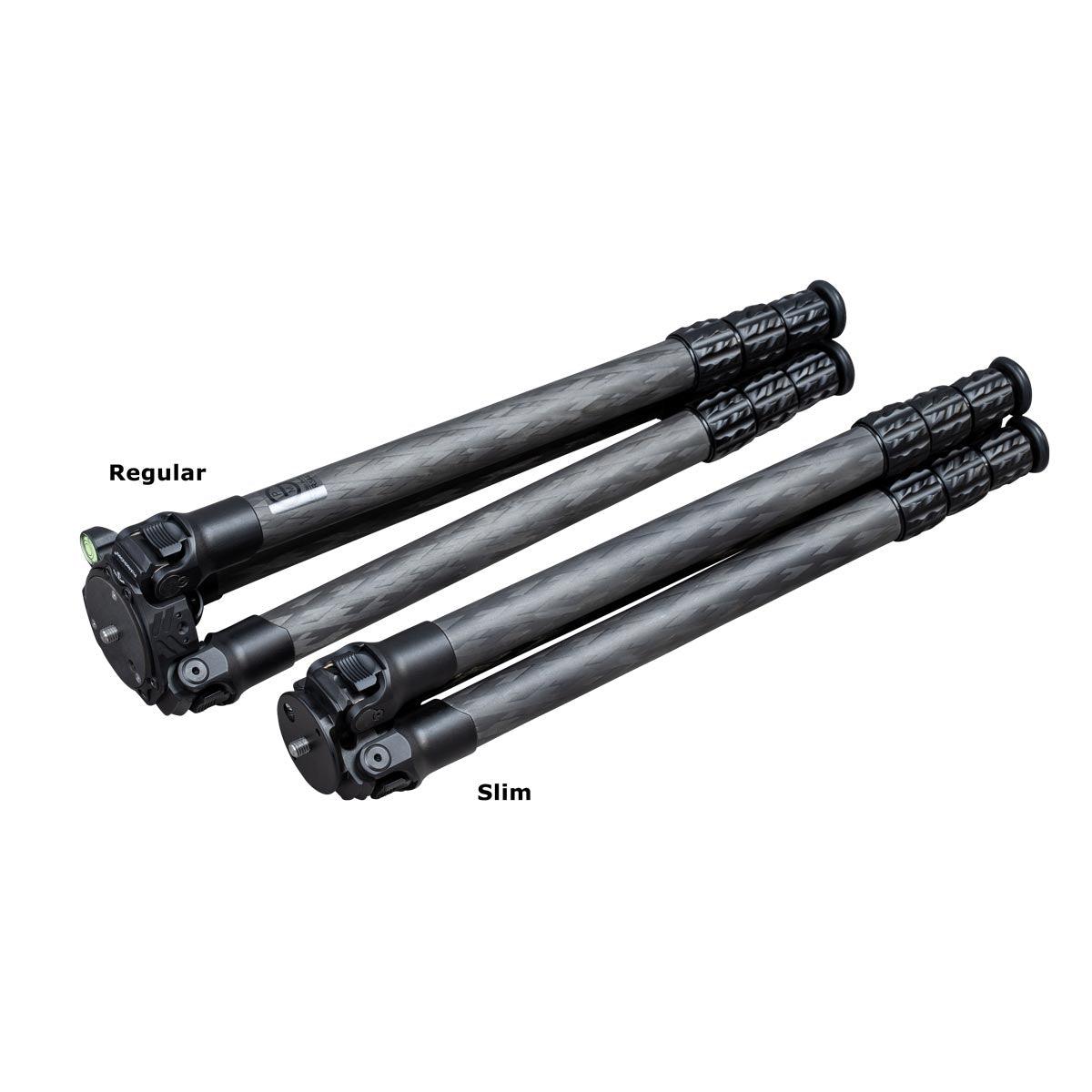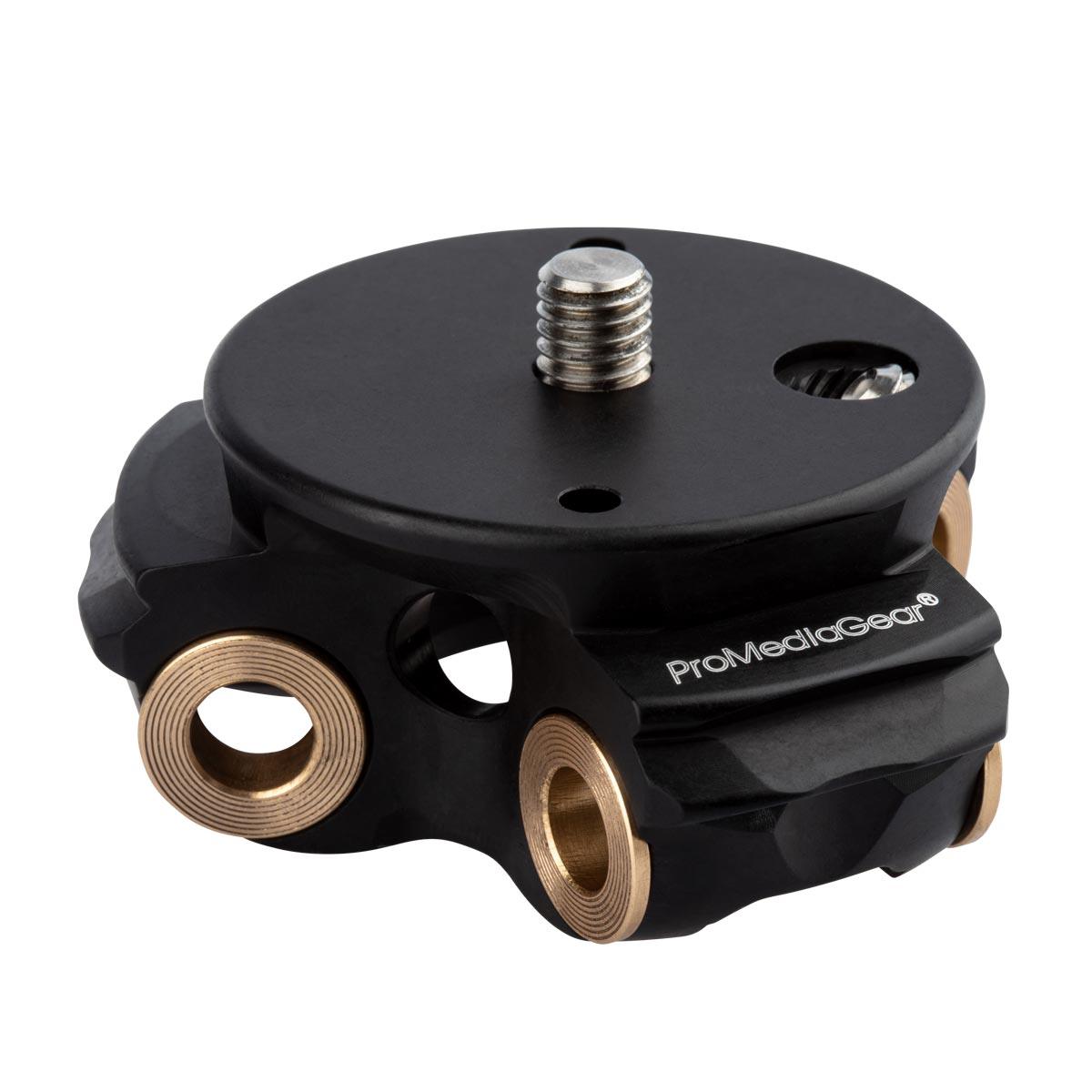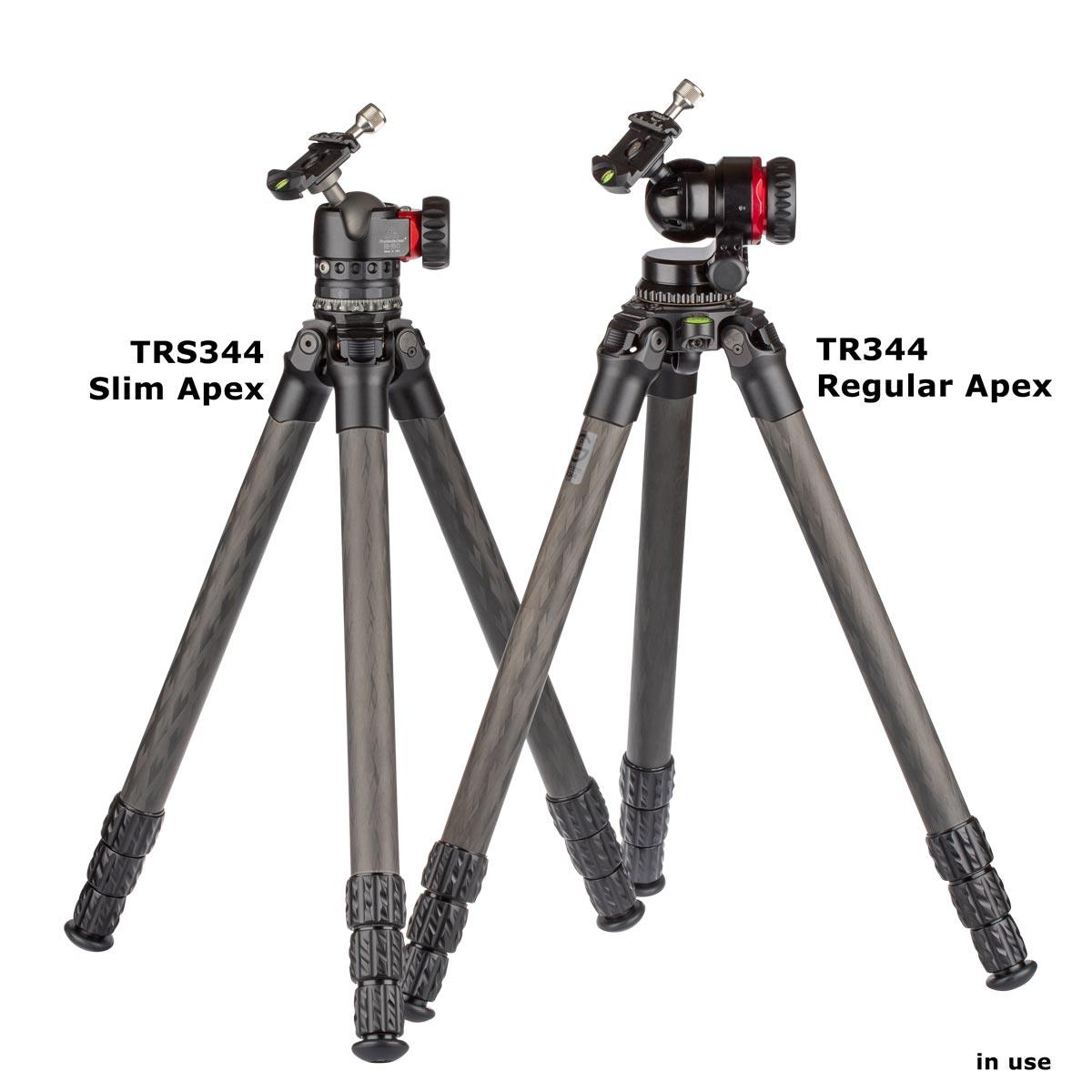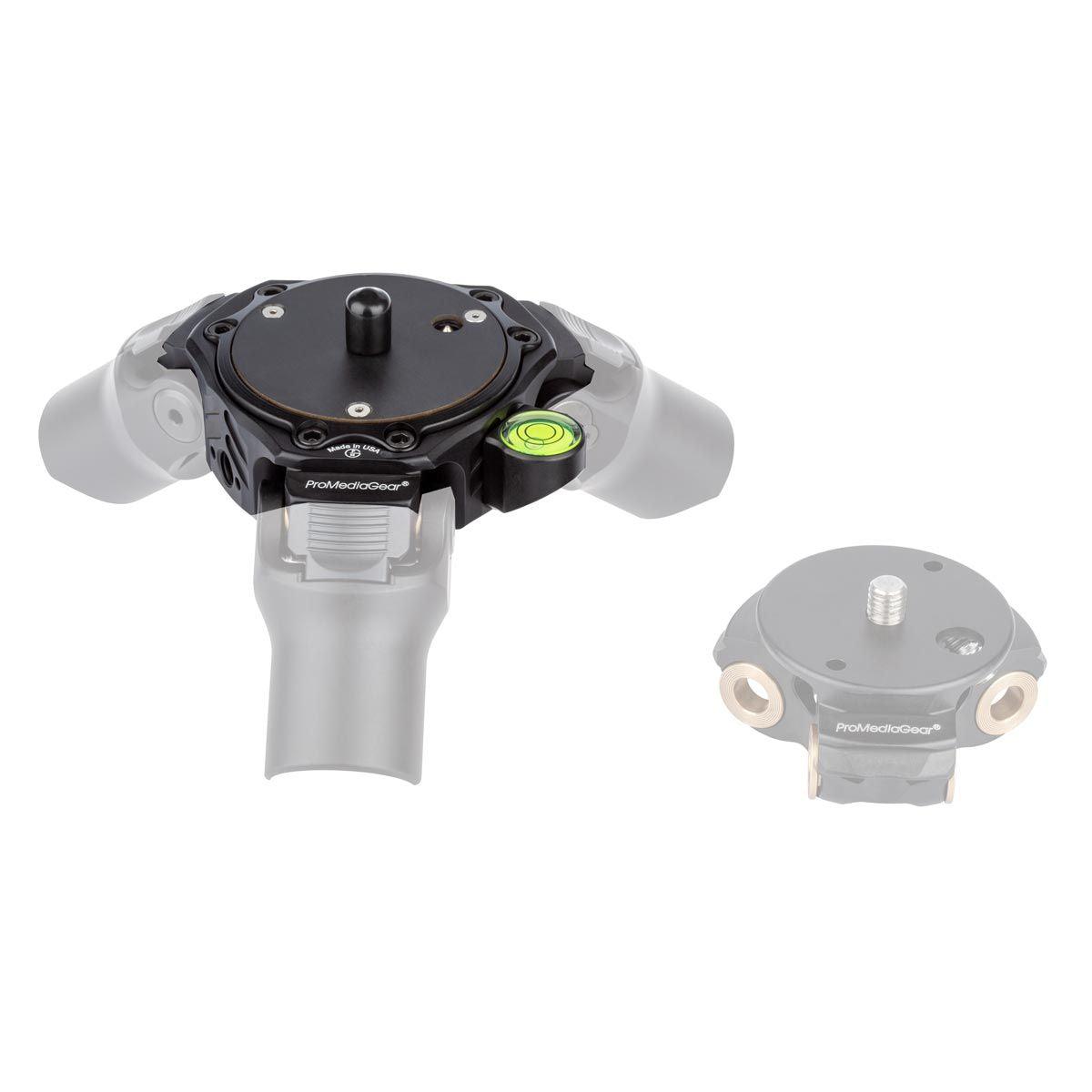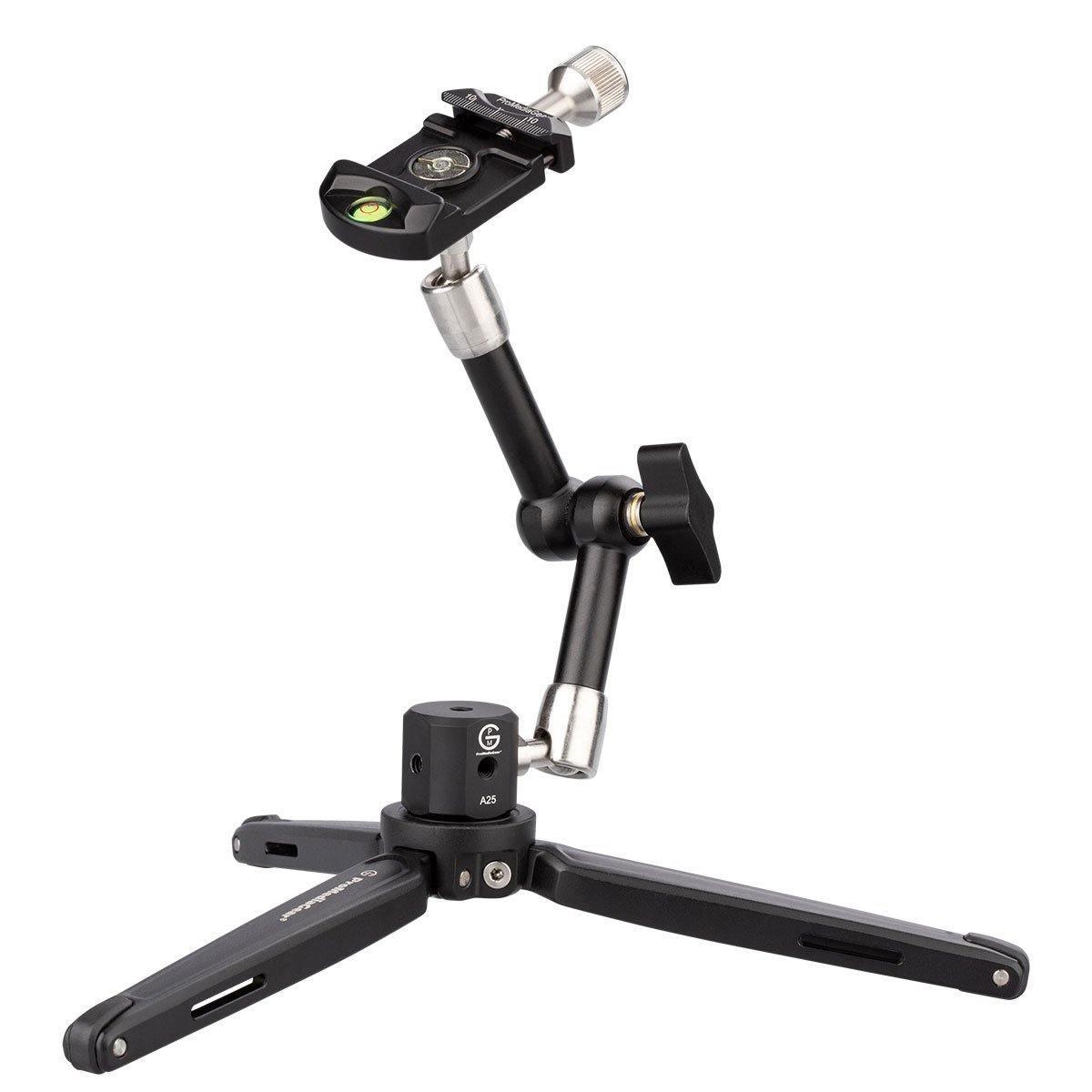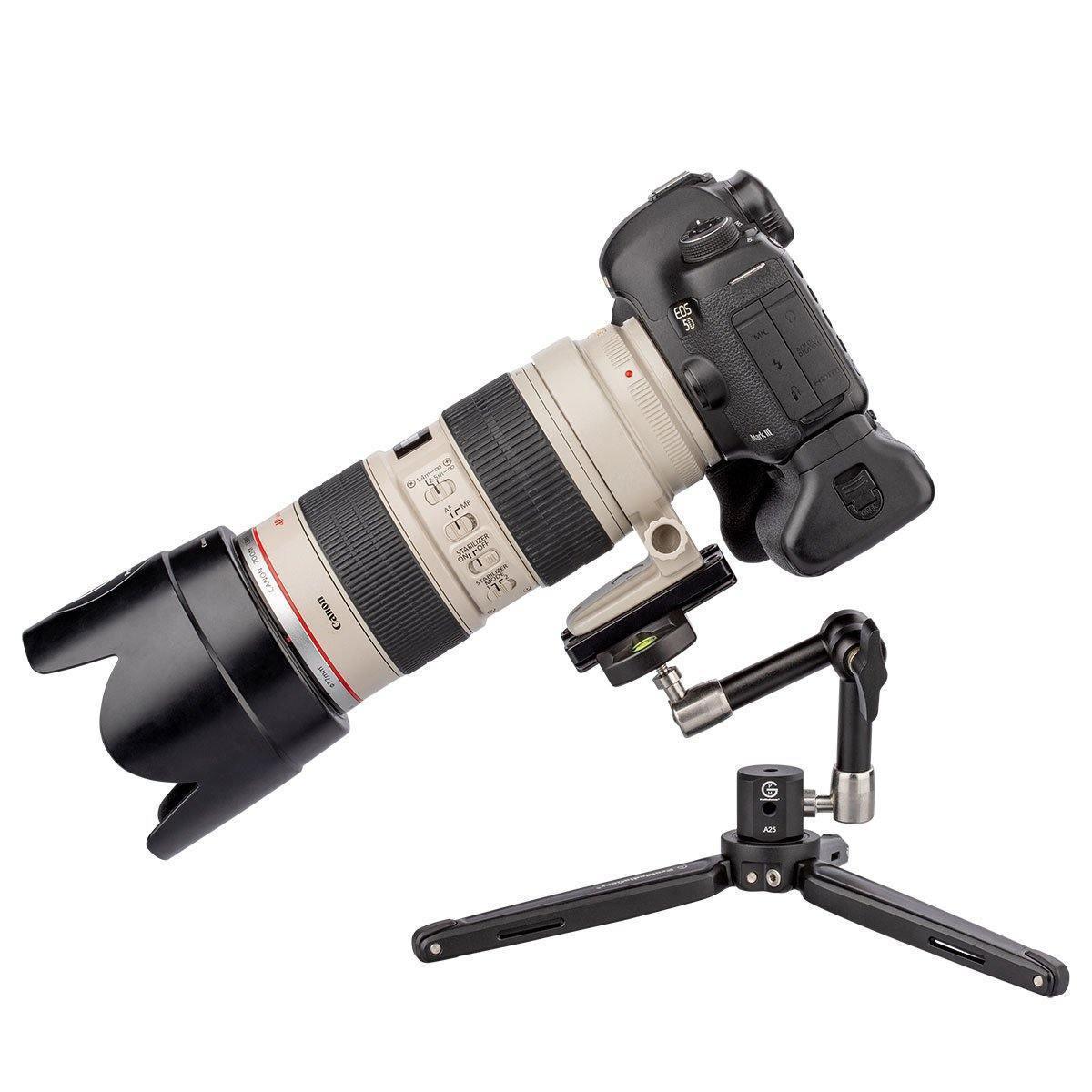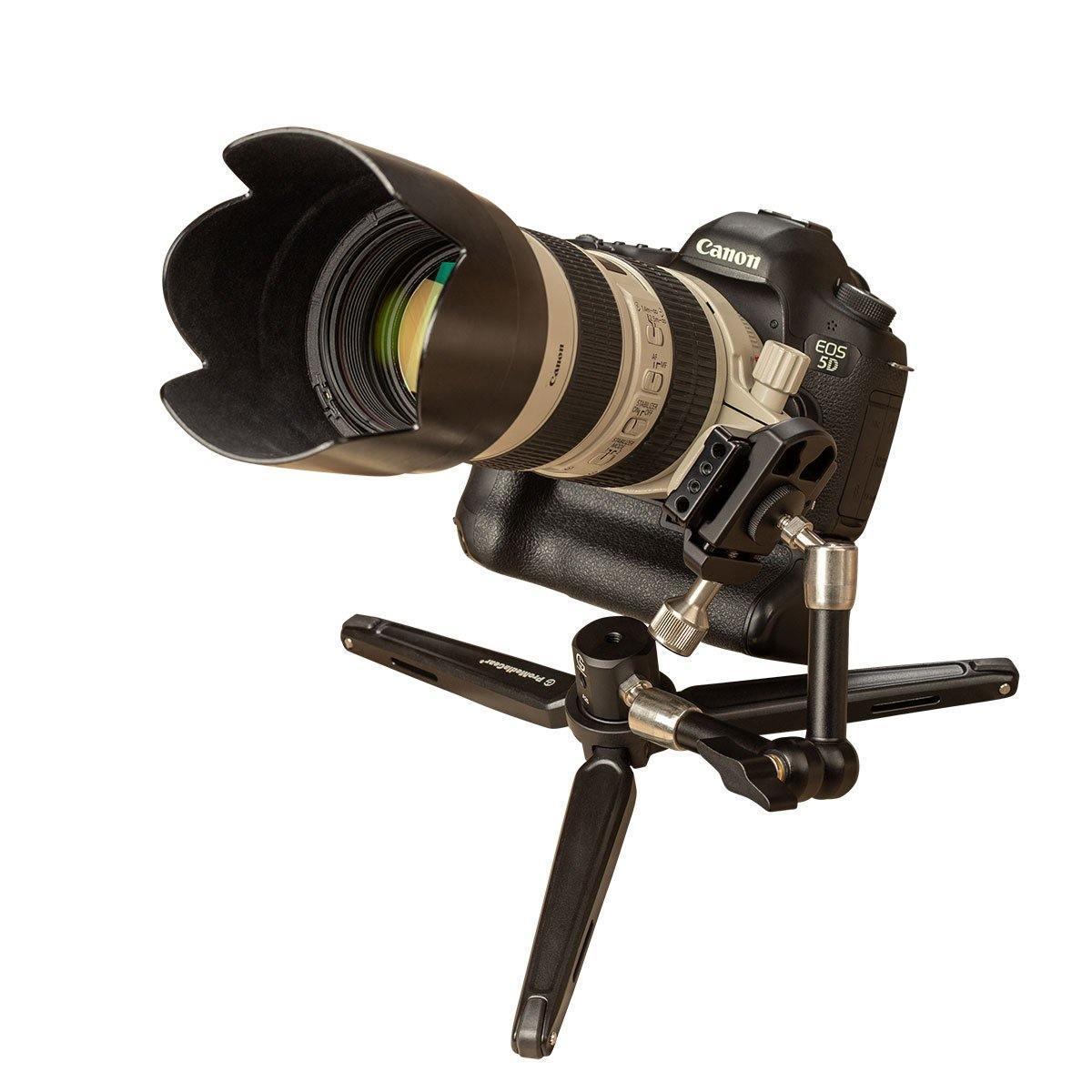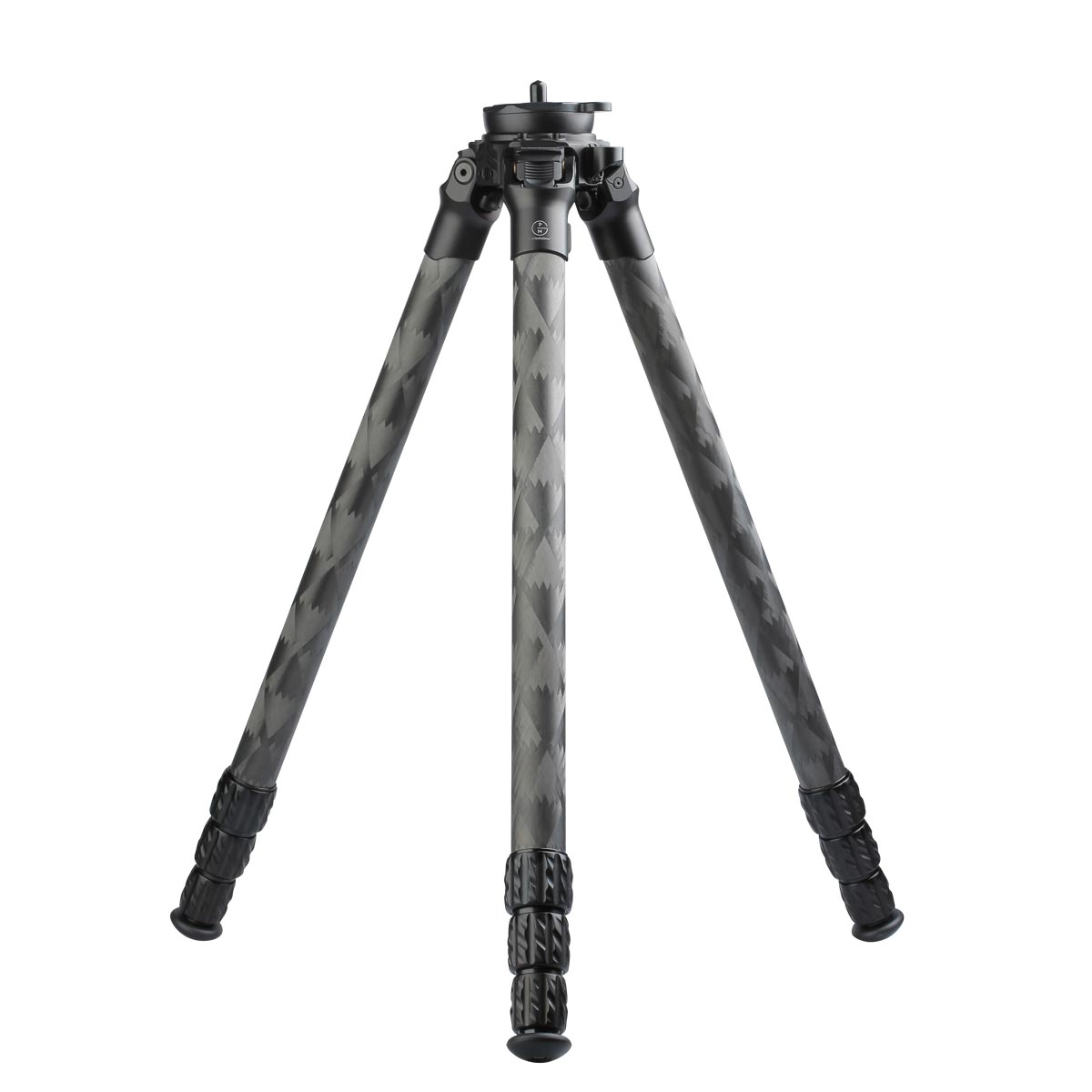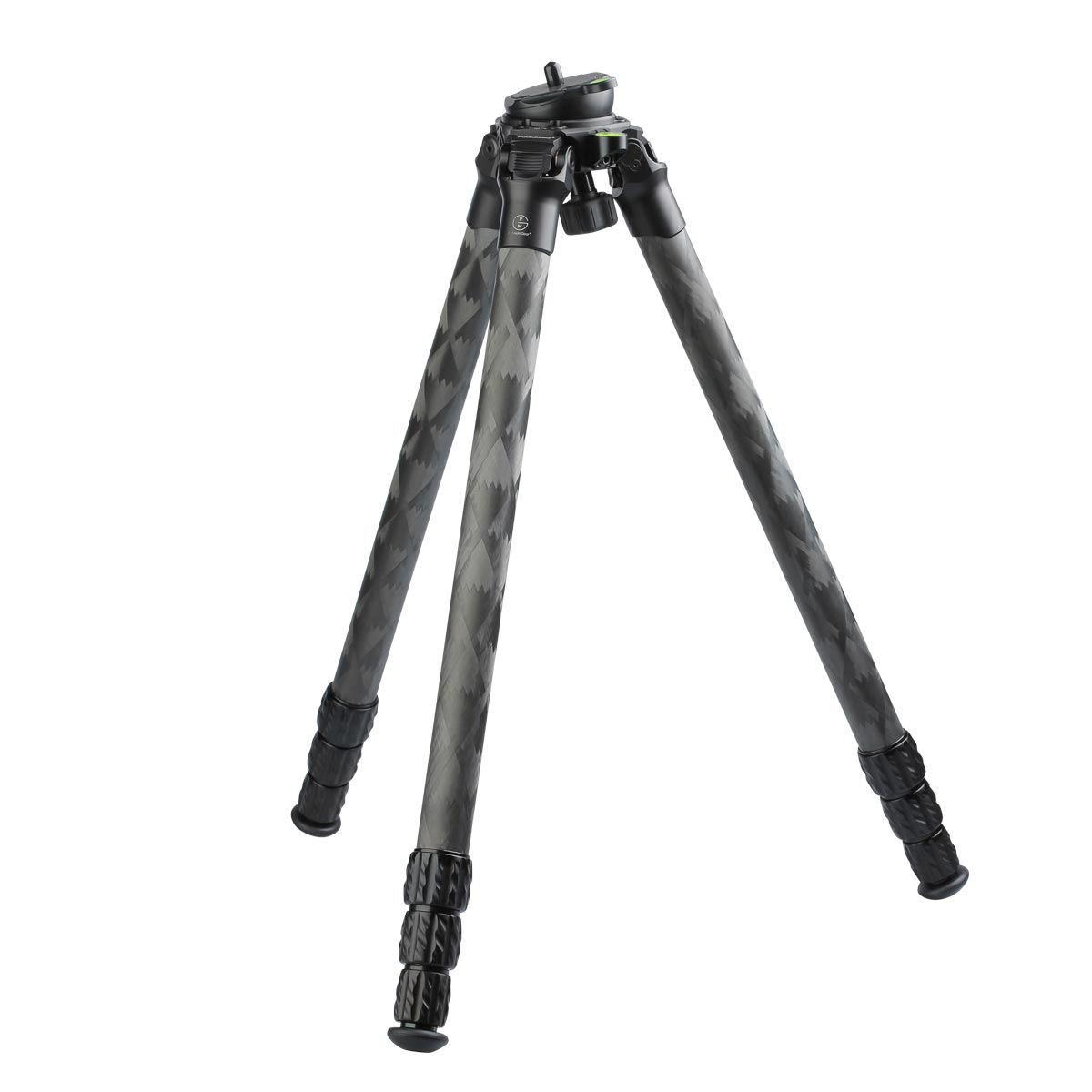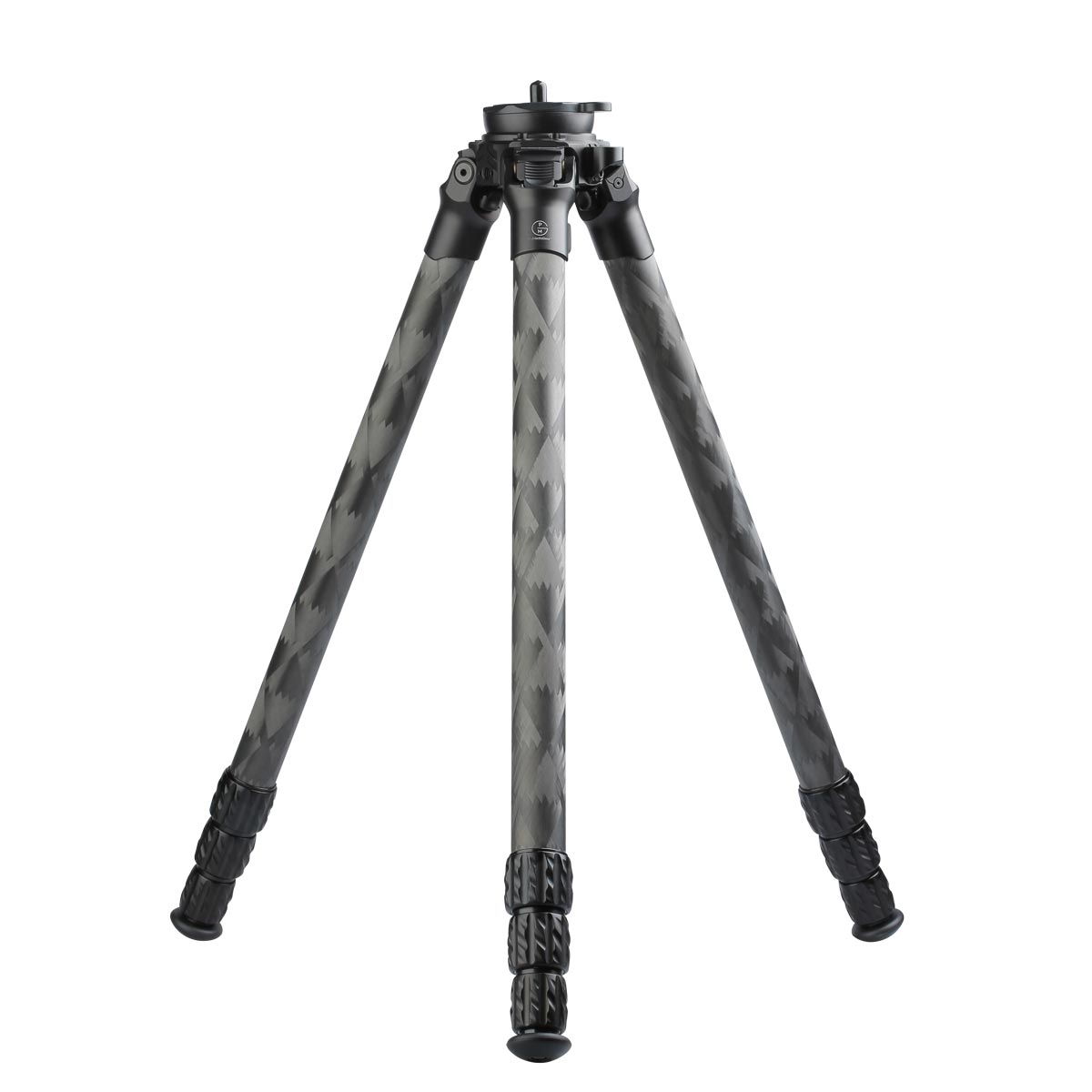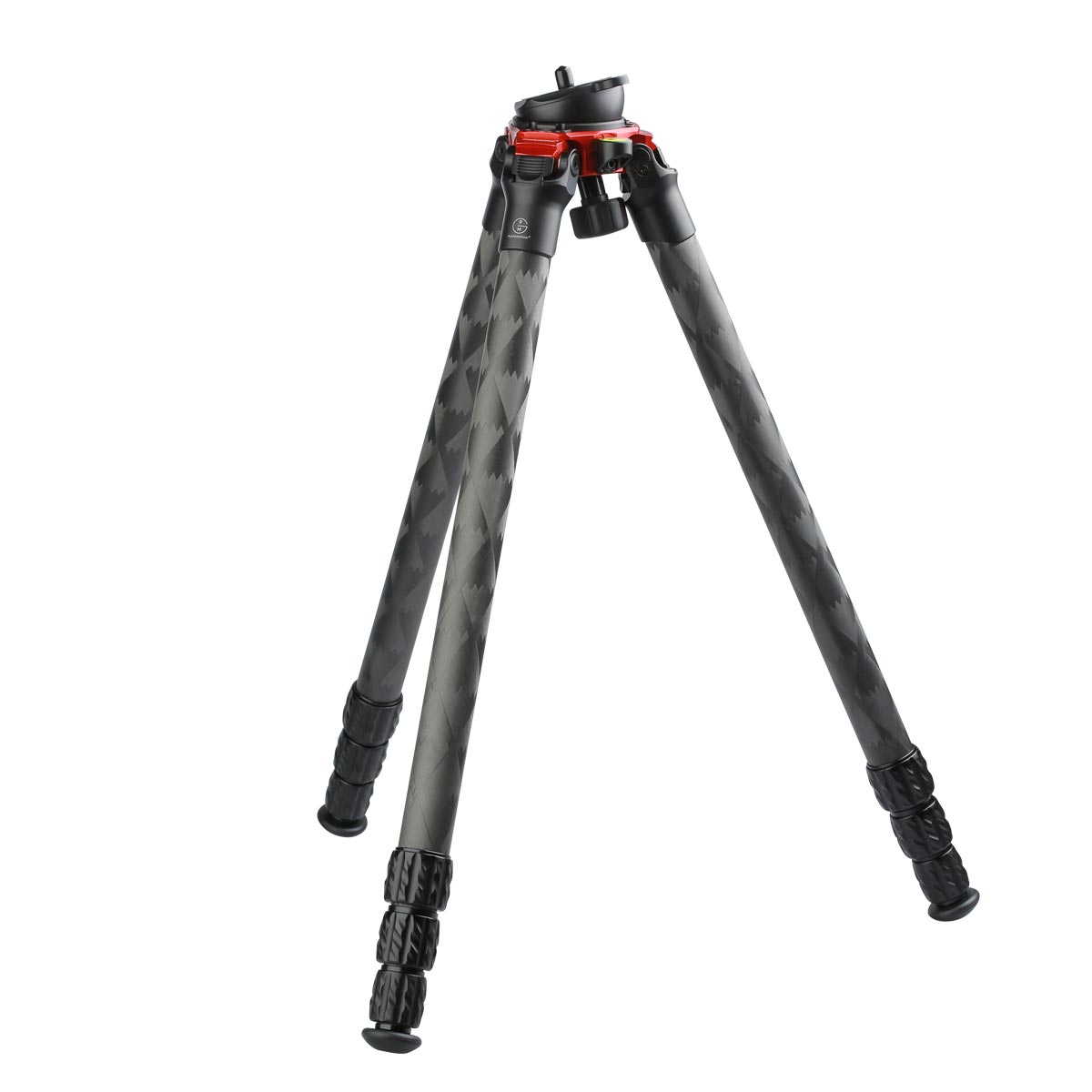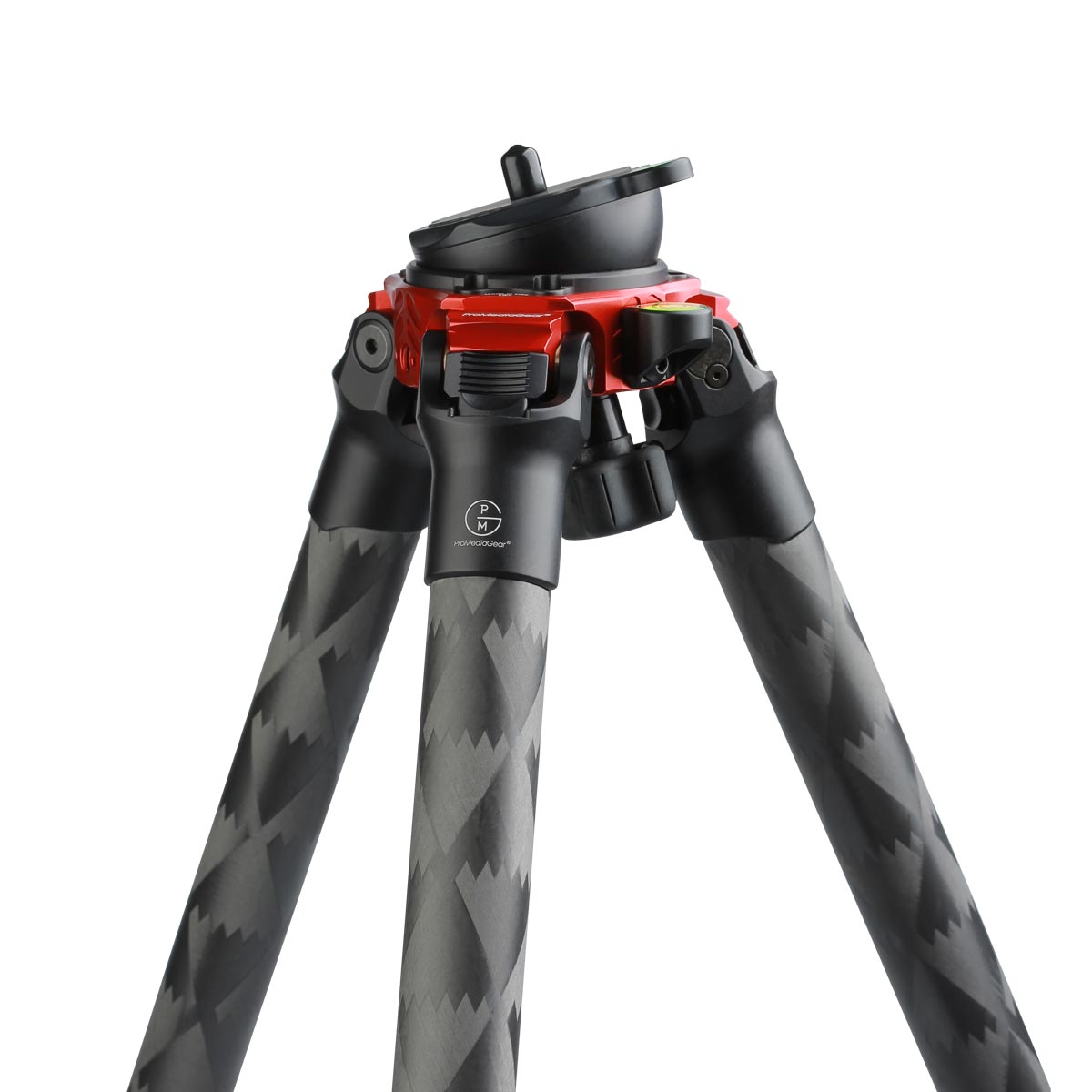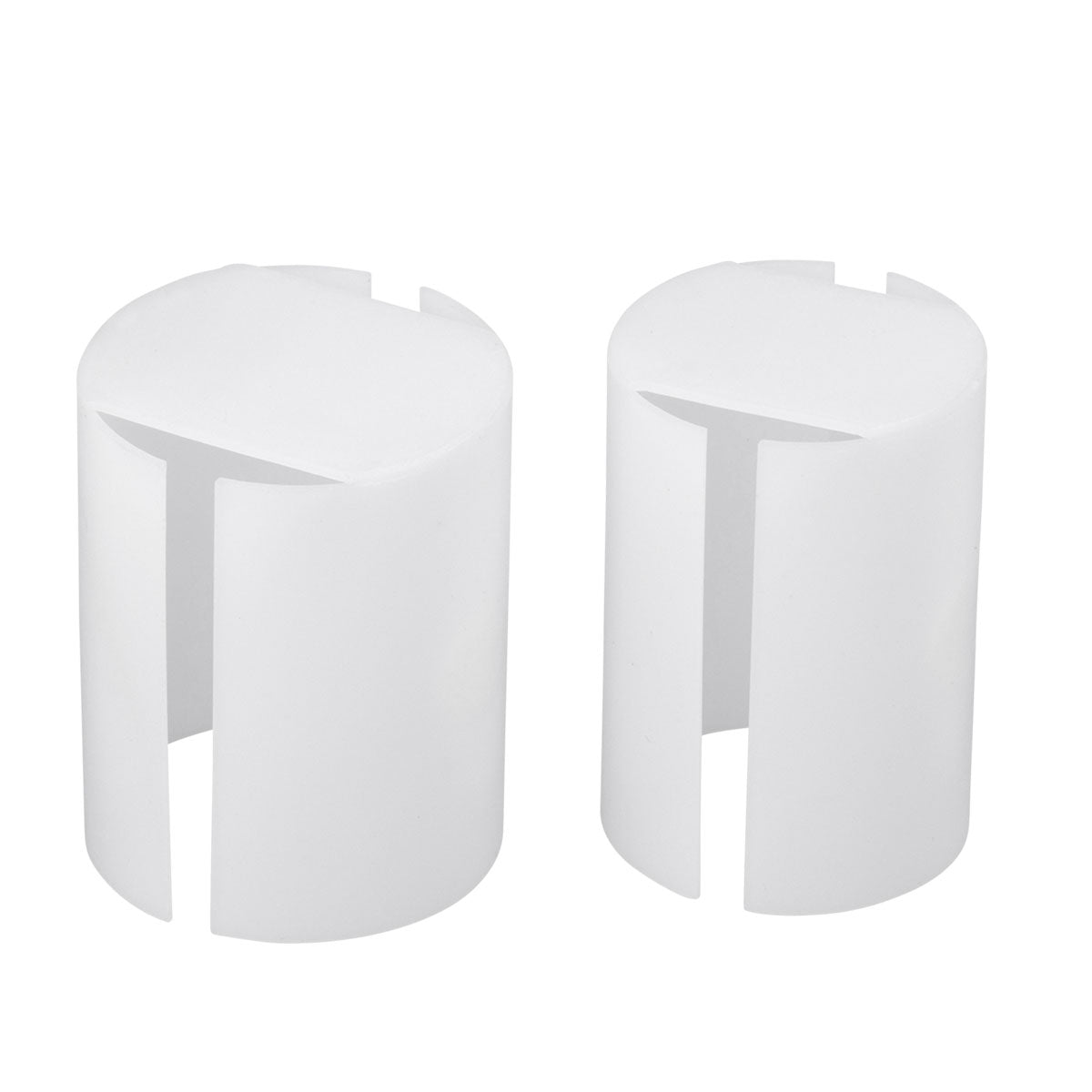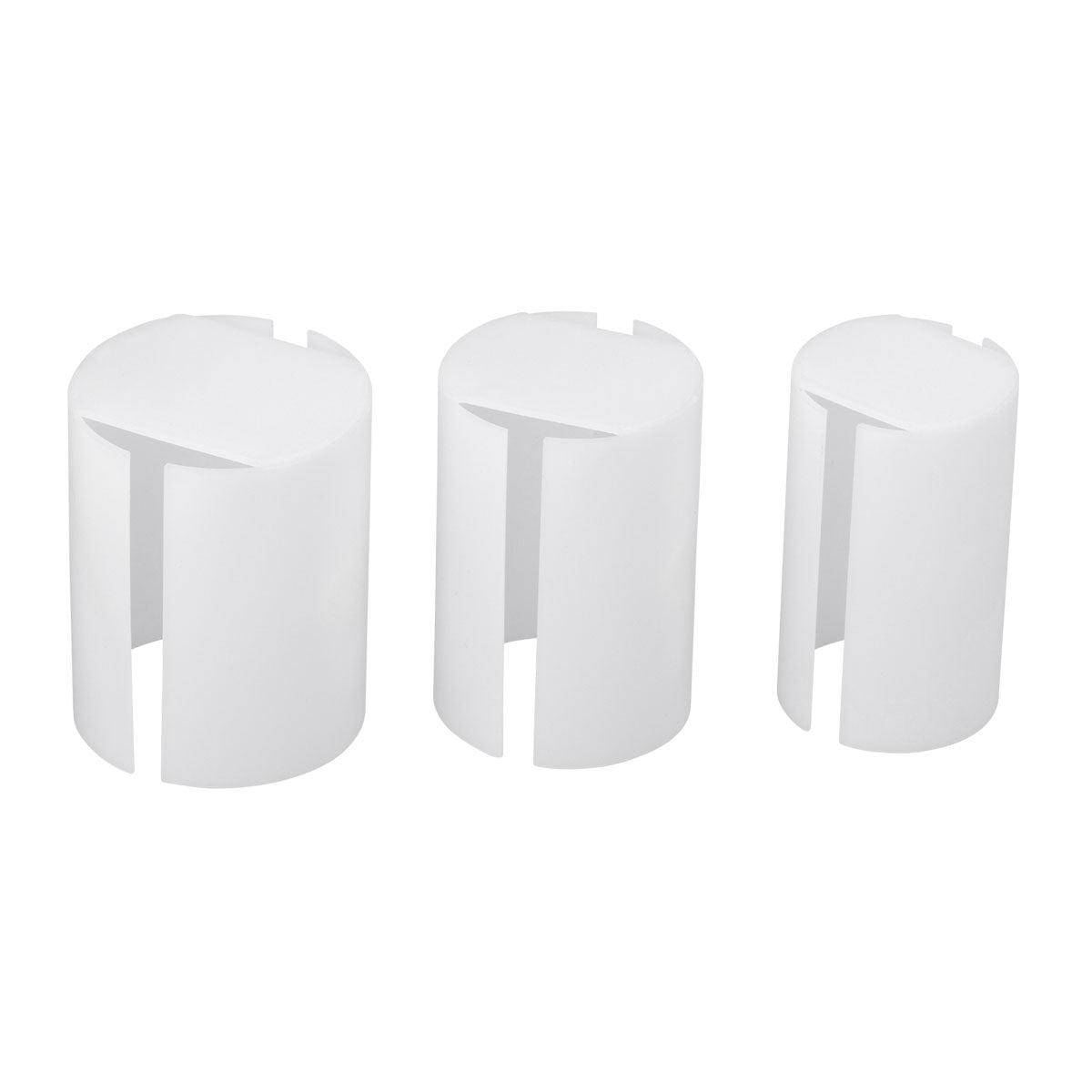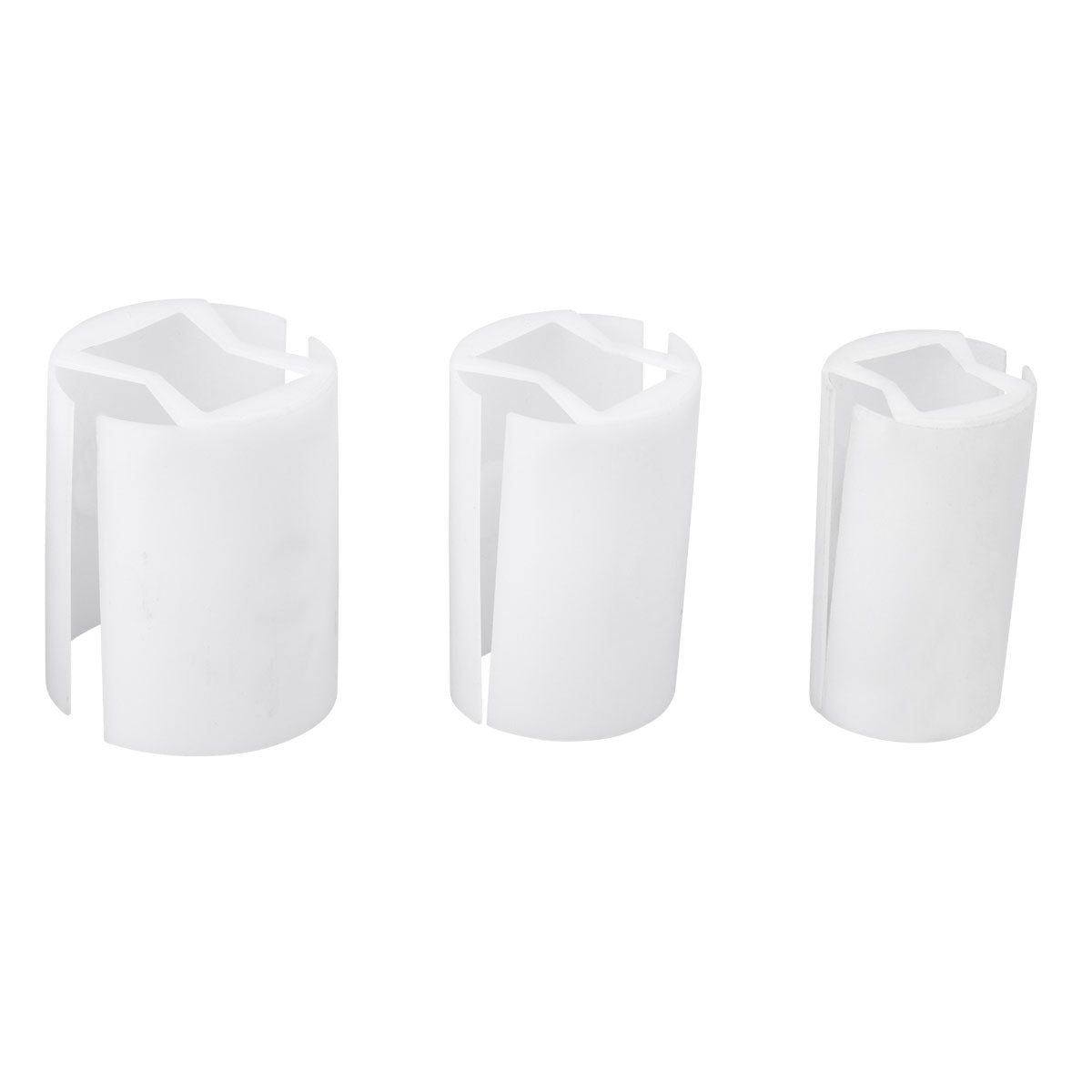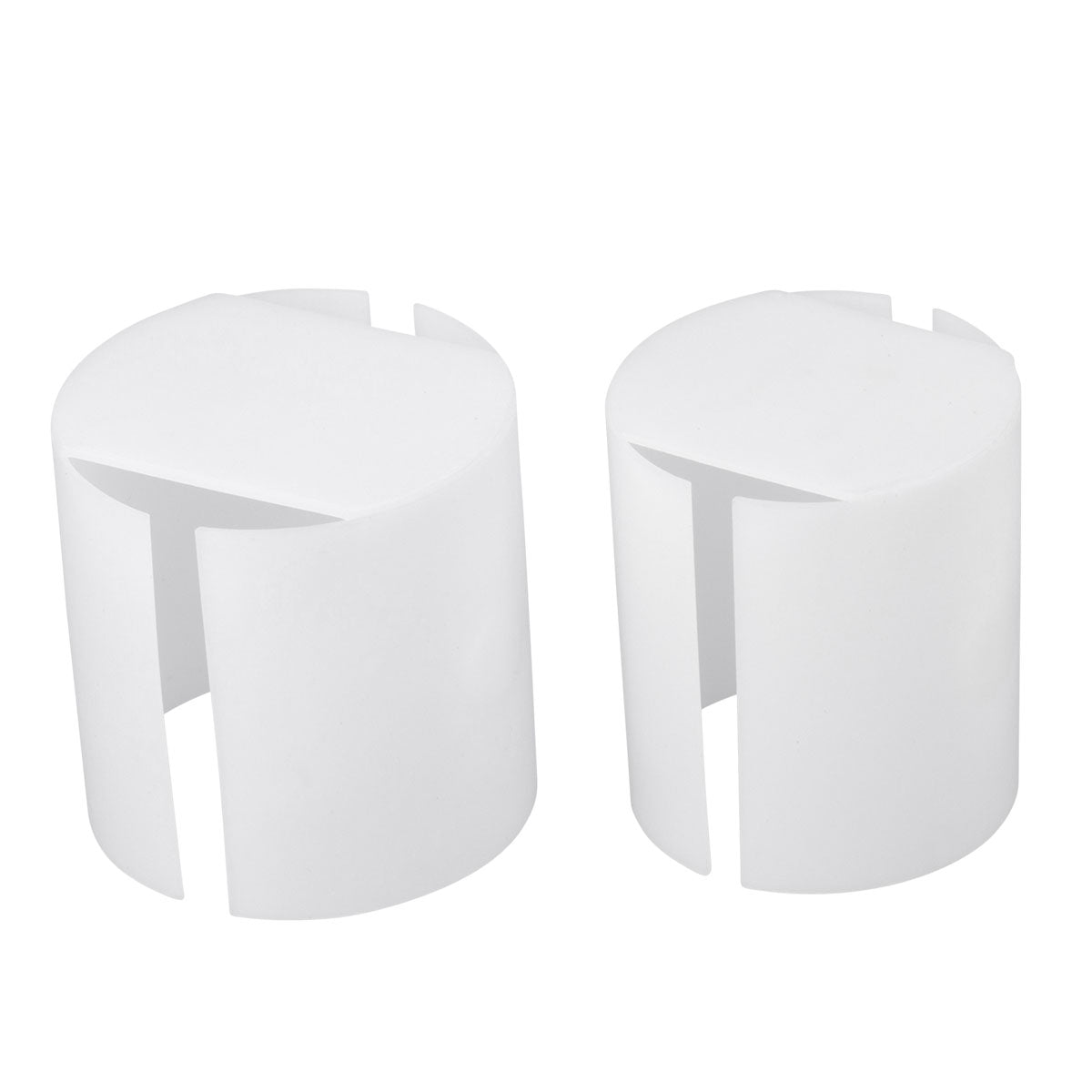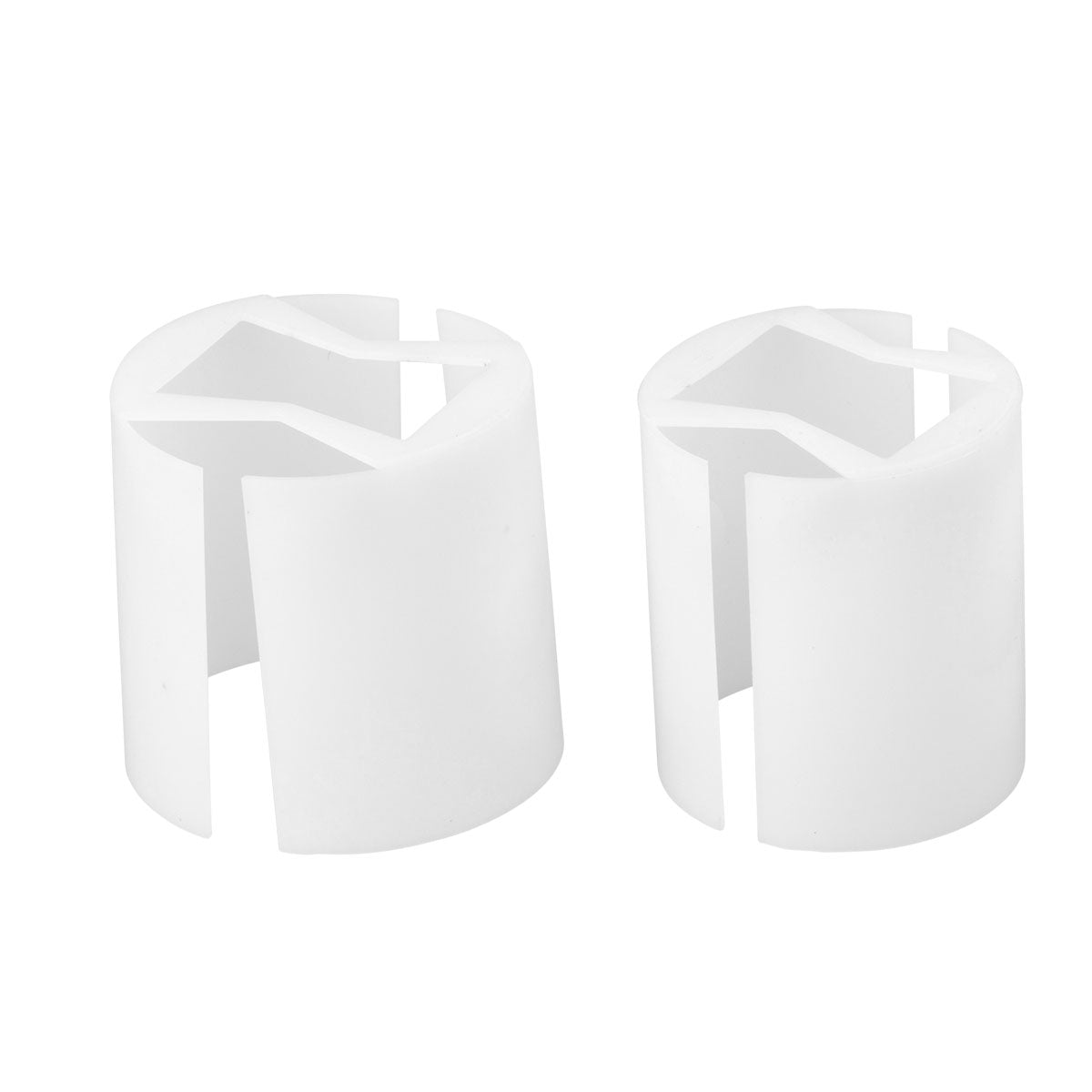ProMediaGear TR42 vs TR34 Carbon Fiber Tripod
What is a Tripod?
A tripod, by definition, is a piece of equipment with three legs intended to support a camera and other accessories. It is an essential accessory for a photographer that is commonly made of aluminum or carbon fiber. Carbon fiber tripods are more expensive but it keeps everything stable while shooting.
What are the parts of a tripod?
There are four main parts to a tripod.
Legs - this is the backbone of the system. If one is missing or broken, then the tripod is bound to fail. Some manufacturers use aluminum which is affordable yet light. While more expensive legs are made of carbon fiber. This material is more durable and lighter than aluminum.
Head - the camera connects to the legs through the tripod head. There are four common types of heads - pan and tilt, ball head, gimbal head, and fluid head. Each one works well for different purposes.
Center Column - the center column is a controversial part. A center column is a pole, similar to the legs, that extends the tripod's height. Some photographers use one, while others consider it unnecessary. The extended height comes at the cost of stability. Photographers think that the higher the column goes, the less stable the setup would be. You have to keep this in mind if you have a heavy setup.
Feet - the feet keep the setup planted on the ground. Companies add multipurpose feet that have either rubber or spikes on modern tripods. Photographers use rubber feet indoors or in places with slippery floors. They use spiked feet outdoors. It keeps the tripod planted on the ground and prevents it from slipping.

What are the advantages of using a tripod?
There are a lot of benefits to using a tripod. Here are some of them.
-
Less noise - photographers adjust the ISO depending on the lighting condition. The problem is, as the ISO gets higher, the image noise becomes more apparent. You may use a lower ISO and a slow shutter by having a tripod. This yields a clean-looking image with minimal noise.
-
Heavy lens support - some lenses are heavier than the camera body itself. Lenses such as the Canon EF 500mm f/4 are so huge that shooting handheld will tire you easily. When the lens is mounted with a tripod, all you have to do is click the shutter.
-
Better composition - you can take stunning images without a tripod, and that is a fact. However, using a tripod opens up the possibility of taking a shot that could have been out of reach. It also slows down the shooting process giving you more time to think of your composition.
-
High Dynamic Range (HDR) photos- taking an HDR image requires the camera to be in the exact position in several photographs. A tripod solves that problem. It keeps the camera in place. All images are then taken at the same spot.
-
Long exposure images - night photography and long exposure photographs use a slow shutter speed. A tripod keeps the setup in place and prevents unnecessary movement. This also results in sharper images.
-
Accessories stand - a tripod is not just for the camera itself. It can be used to hold several accessories such as lights, microphones, or even softboxes.
There are more advantages to using one besides the reasons listed here. But these are the common advantages that should convince you to buy one.
What are the disadvantages of using a tripod?
The advantages clearly outweigh the disadvantages. But the cons are still worth checking out.
-
Weight - this is the top reason why tripods are often left behind. Tripods that are made of steel, or even aluminum, are heavy and difficult to carry. Carbon Fiber tripods are lightweight and durable. But these cost a lot more.
-
Space - Tripods are difficult to carry when traveling. Some camera bags carry a tripod through a dedicated slot However, these are less than ideal and still takes up space.
-
Limited Movement - having a tripod means you are stuck in one place. You may use one in a crowded place but it will be challenging. The legs are spread out and people might bump into it.
-
Price - an excellent tripod can go for $1000 or more. That is for the legs alone. Factoring the cost of a ball-head and a whole setup can go for $1,500, more or less. The good thing about spending this much though is it would last a lifetime. You may consider tripods as a one-time buy, which is a great investment if you are shooting professionally.
Why use a carbon fiber tripod?
Carbon fiber tripods are preferred by many due to several reasons. It is stiffer yet lighter than an aluminum tripod. Plus, it has better weather resistance.
Carbon tripods look sleek too with their woven pattern compared to the smooth aluminum finish of a regular tripod.
Are ProMediaGear carbon fiber tripods worth it?
Definitely!
ProMediaGear makes some of the best carbon fiber camera tripods on the market. These sturdy tripods are lightweight, durable, and last a lifetime. If you are on the hunt for a new tripod, then the ProMediaGear tripods are worth considering. All units come with a 5-year warranty and that says a lot about their quality.
There are several models to choose from. But you can never go wrong with the ProMediaGear TR344L Carbon Fiber Tripod. It is one of the best sellers for a reason.
Frequently Asked Questions
Is there a center column that could be fitted to the TR42 series?
Yes, we're working on it, but the ETA keeps getting pushed back because of the coronavirus pandemic. We will announce the updates on our Facebook page or via email.
Right now, only the 34-Series Carbon Fiber Tripods have a compatible center column.
Why twist lock instead of flip lock for the carbon fiber tripod legs?
Twist locks have a significant advantage over flip locks. They don't wear down over time and it's easy to set up. Plus, it does not require the adjustment of tension over time.
Most professionals prefer twist locks because of these advantages. Also, twist locks are better when it comes to portability. It does not have a part sticking out for a smoother leg build.
Unlocking all three or four sections of a tripod is also quicker. Folding down the tripod is easier and can be done with one swift motion. This means you can save some time instead of flipping individual locks.
Can you this tripod diagonally in a carry-on luggage?
For reference, our best-seller, the TR344L Professional Carbon Fiber Tripod folds down to approximately 24 inches long. It will fit diagonally on a regular carry-on suitcase. But that depends on the size.
If necessary, you may take off an entire leg section to make it more compact. You can put it back once you arrive at your destination.
You may also put this heavy-duty carbon fiber tripod in your check-in baggage. It fits larger suitcases too. Besides, some airlines will require you to remove the metal spikes inside the leg if you are going to carry it on the plane.
If you need a more compact tripod, you may check out the TR344 Carbon Fiber Tripod. It folds smaller at 21 inches long.
Will ProMediaGear tripods work with RRS ball heads?
Yes! ProMediaGear carbon fiber tripods pair well with RRS ball heads such as the BH-40. We have a lot of customers using RRS tripod heads with PMG tripod legs.
But you may also check out our tripod heads. A new PMG compact ball head is also under development.
In short, you may use any tripod head with ProMediaGear carbon fiber tripod legs. It has a standard mount so you can mix and match parts depending on your preference.
How to clean the tripod properly?
The basic tripod maintenance routine is to wipe dirt and grime every after use. If you used the tripod on salt water, it is suggested that you rinse it with fresh water before drying it with a clean towel.
Check out this "how to clean a tripod" article from our blog for an in-depth guide.
Do you have repair kits and replacement parts list?
Yes, repair kits and replacement parts are available on our website. You may check the catalog of tripod accessories and replacement parts here.
We also offer cleaning, lubricating, and tripod maintenance services. Minor repairs and parts replacements are also done if needed.
But don't worry, as long as you do not break your tripod intentionally or use it for any other purpose besides using it as a tripod, our 5-year warranty have you covered.

